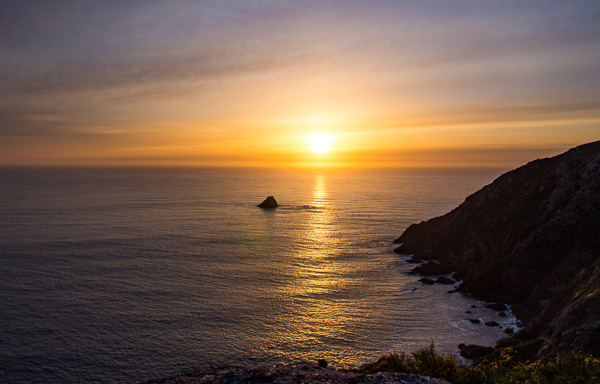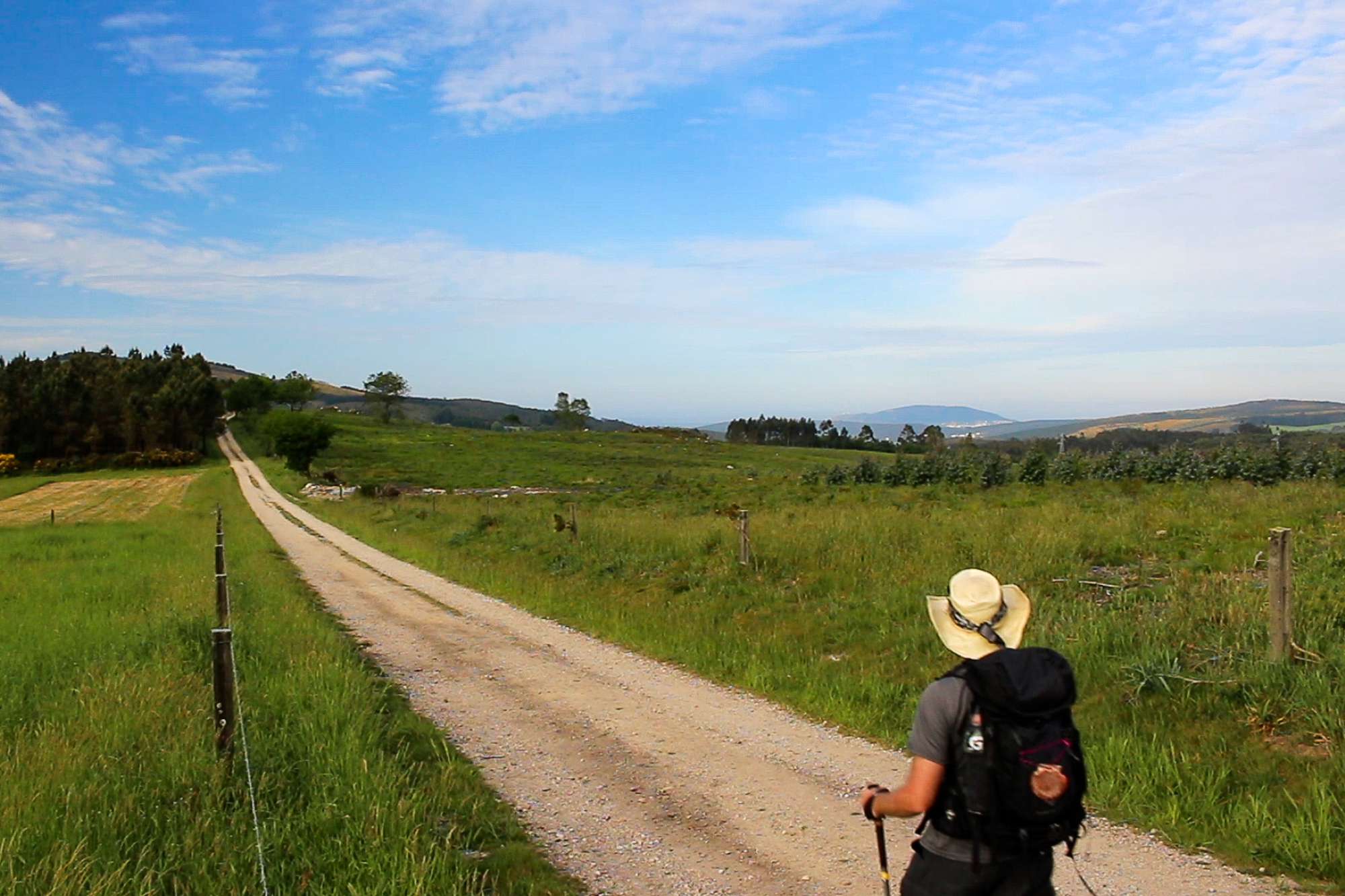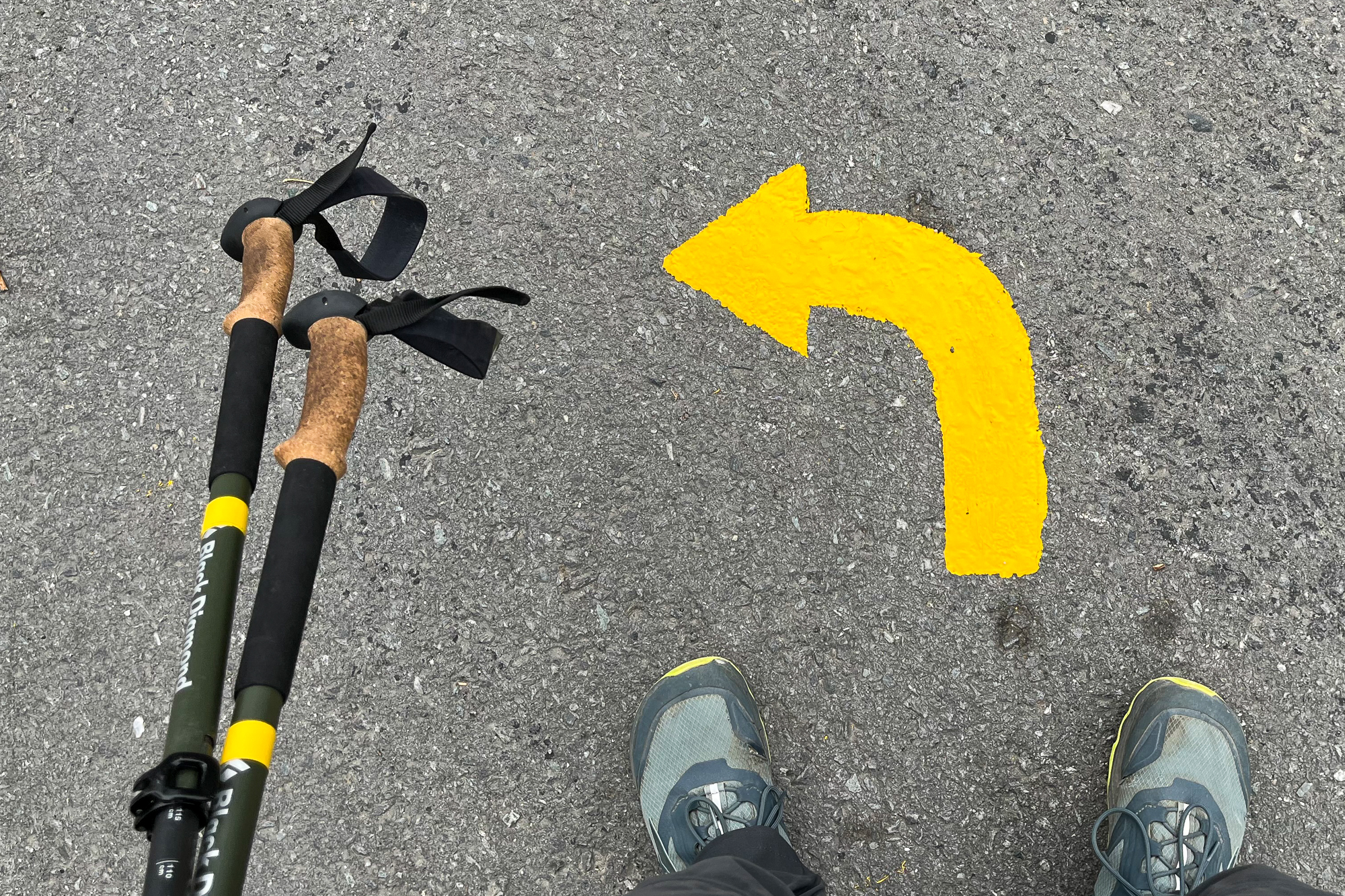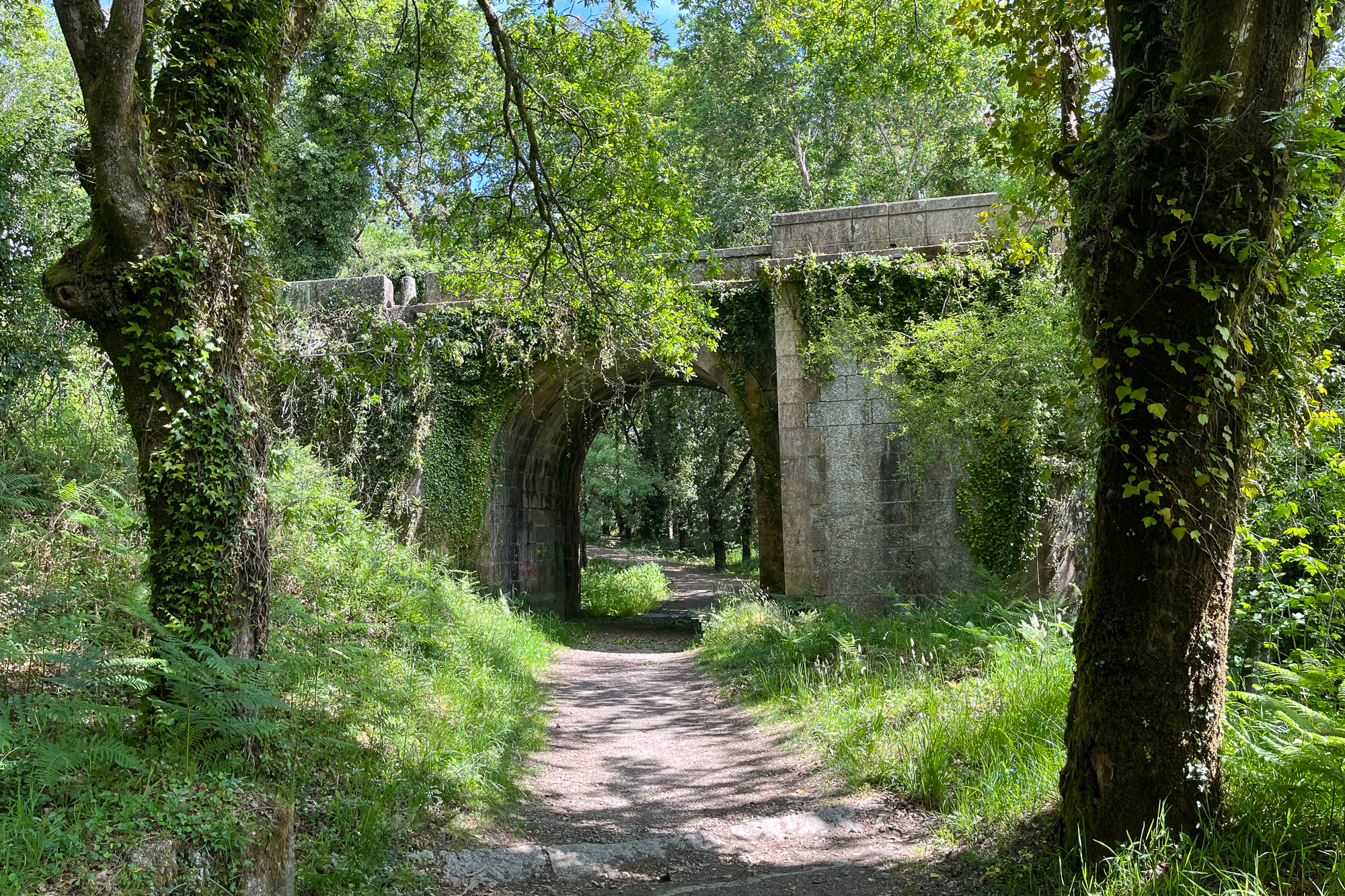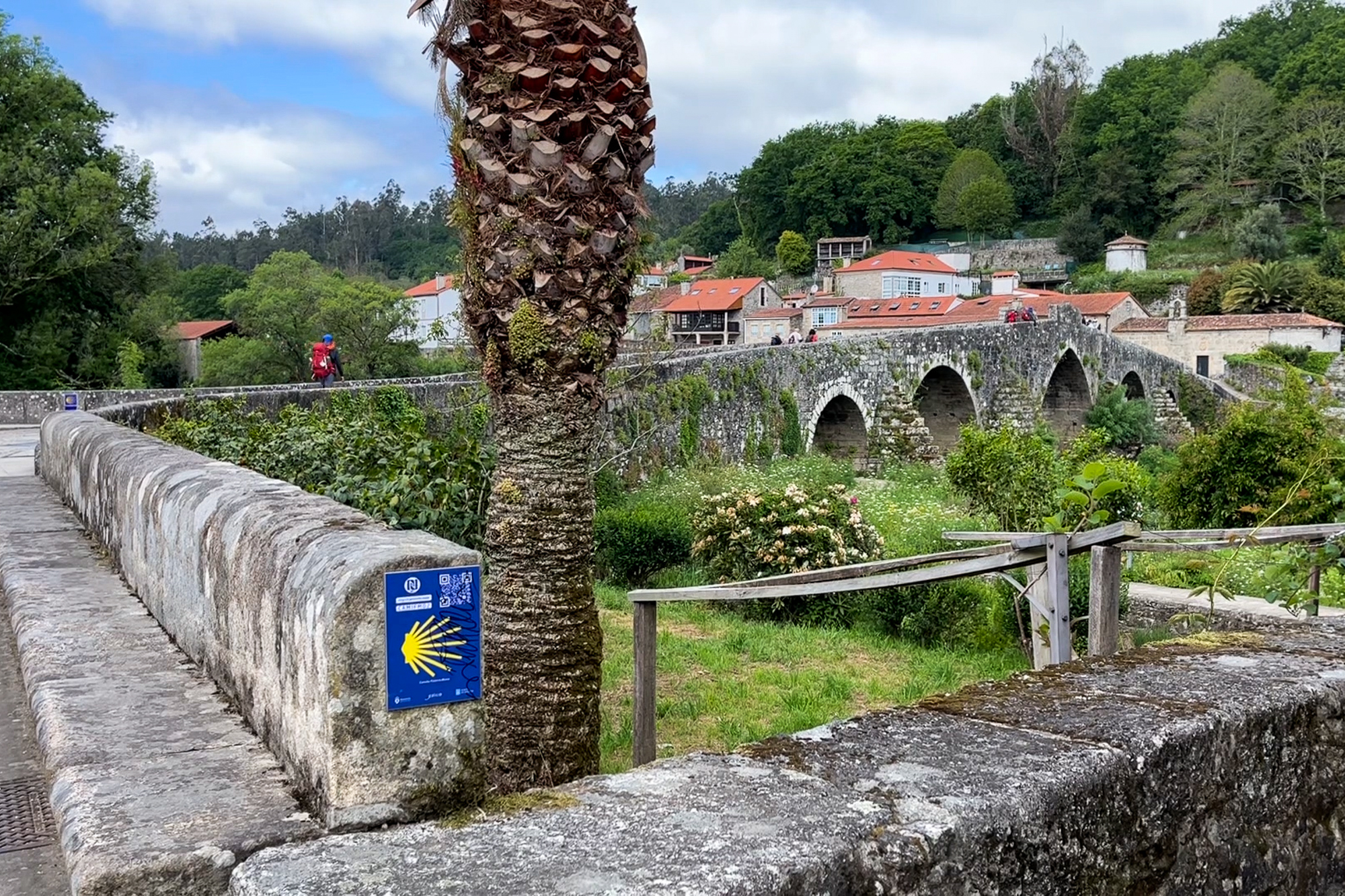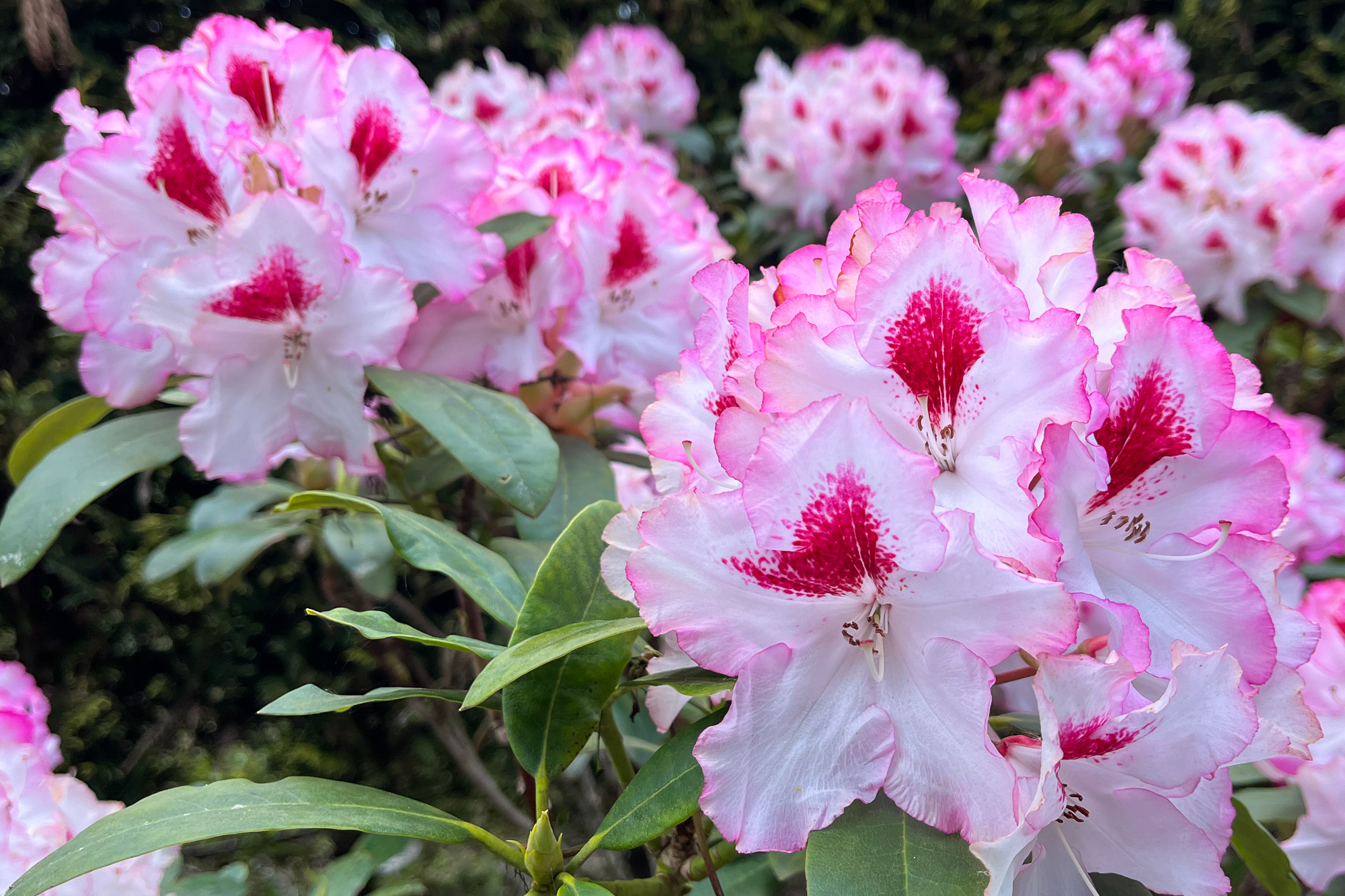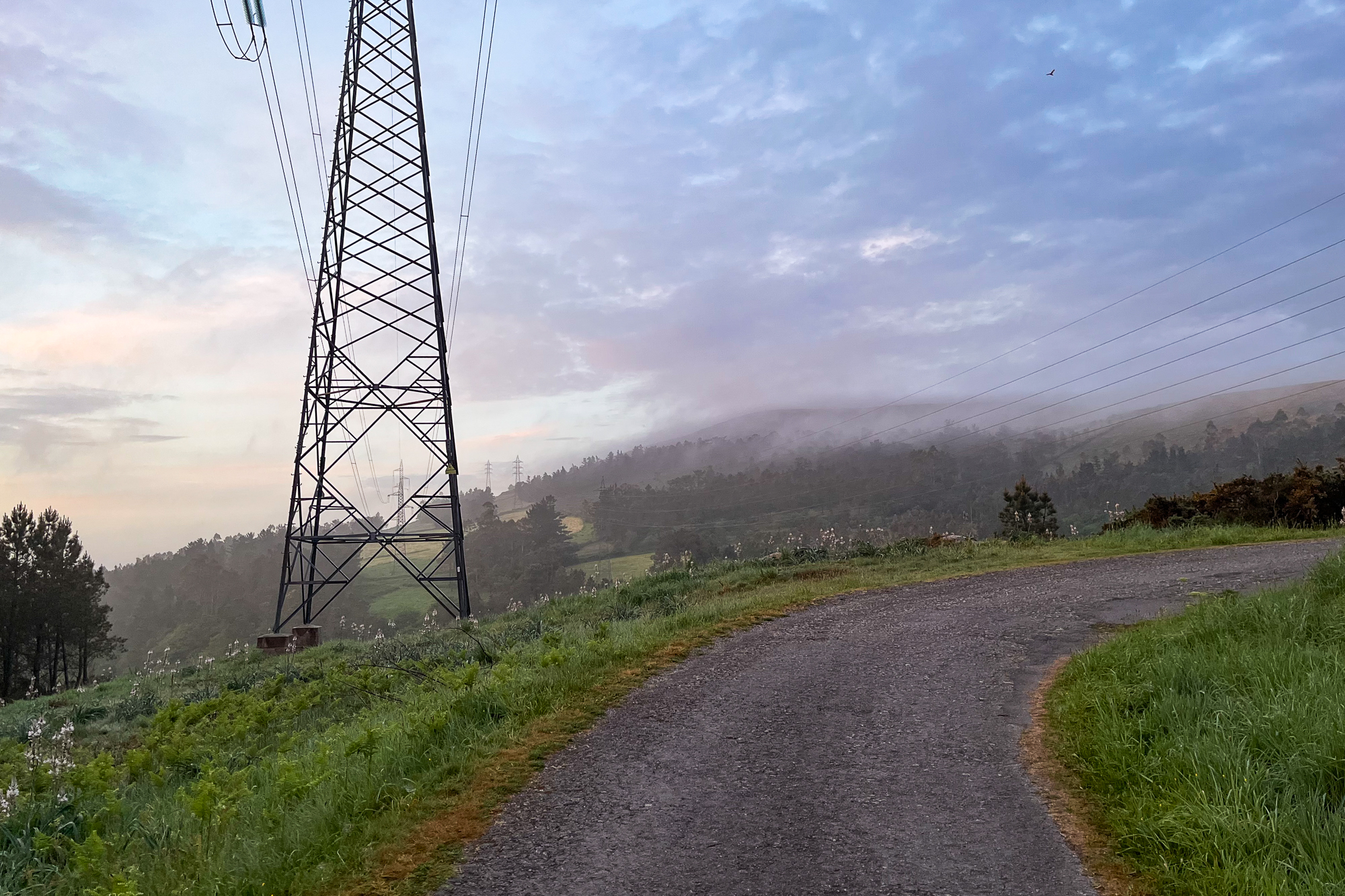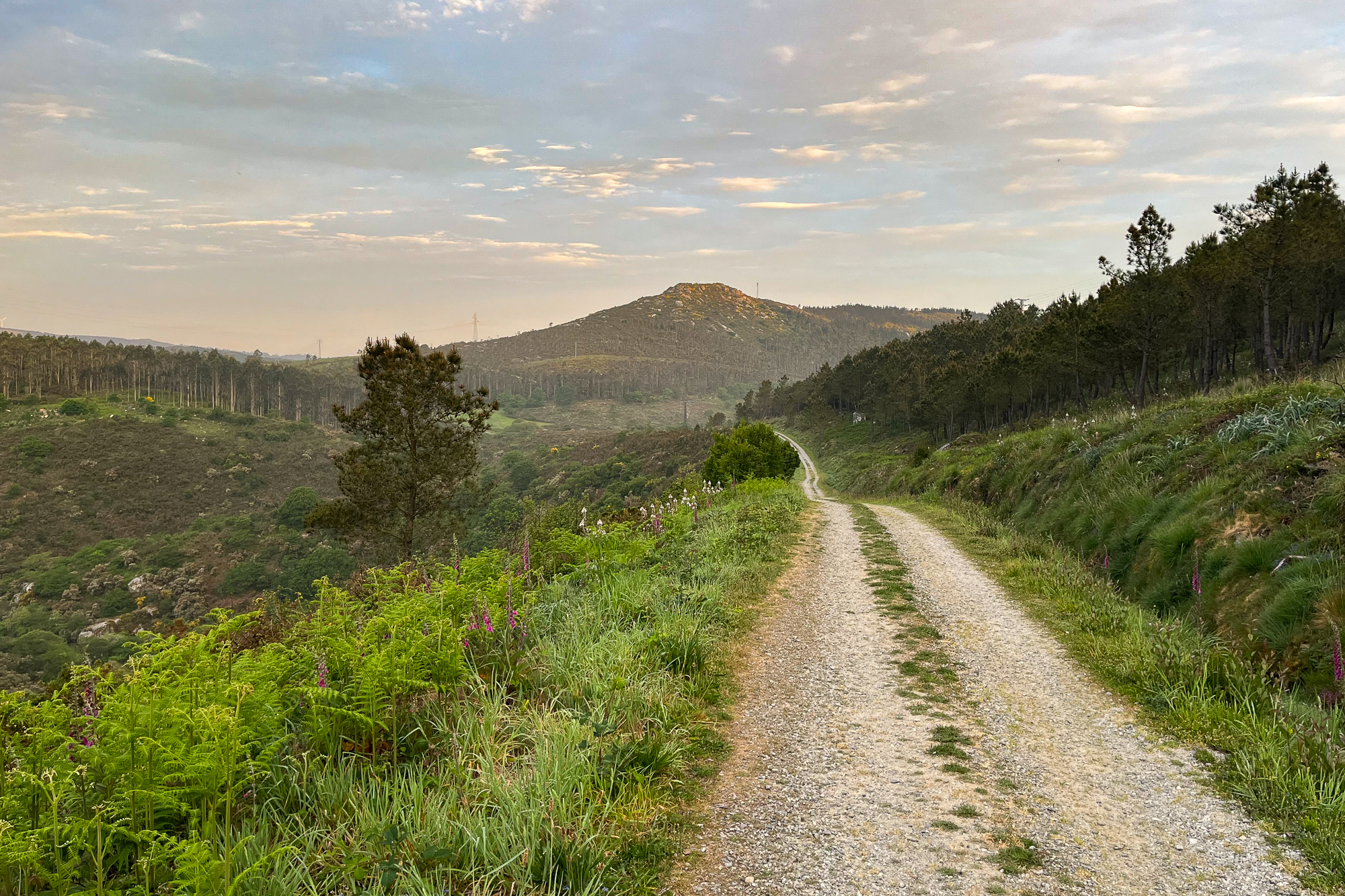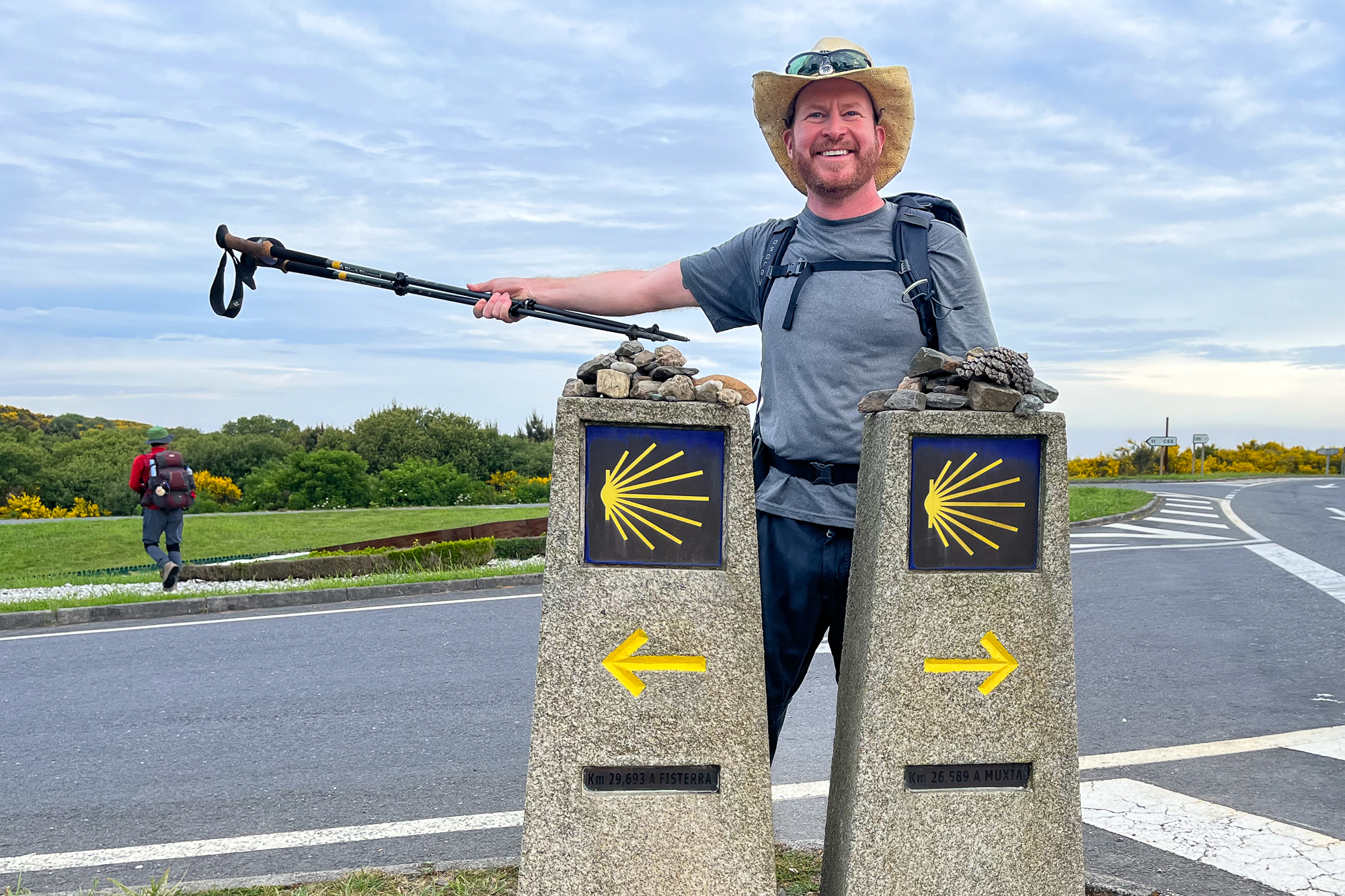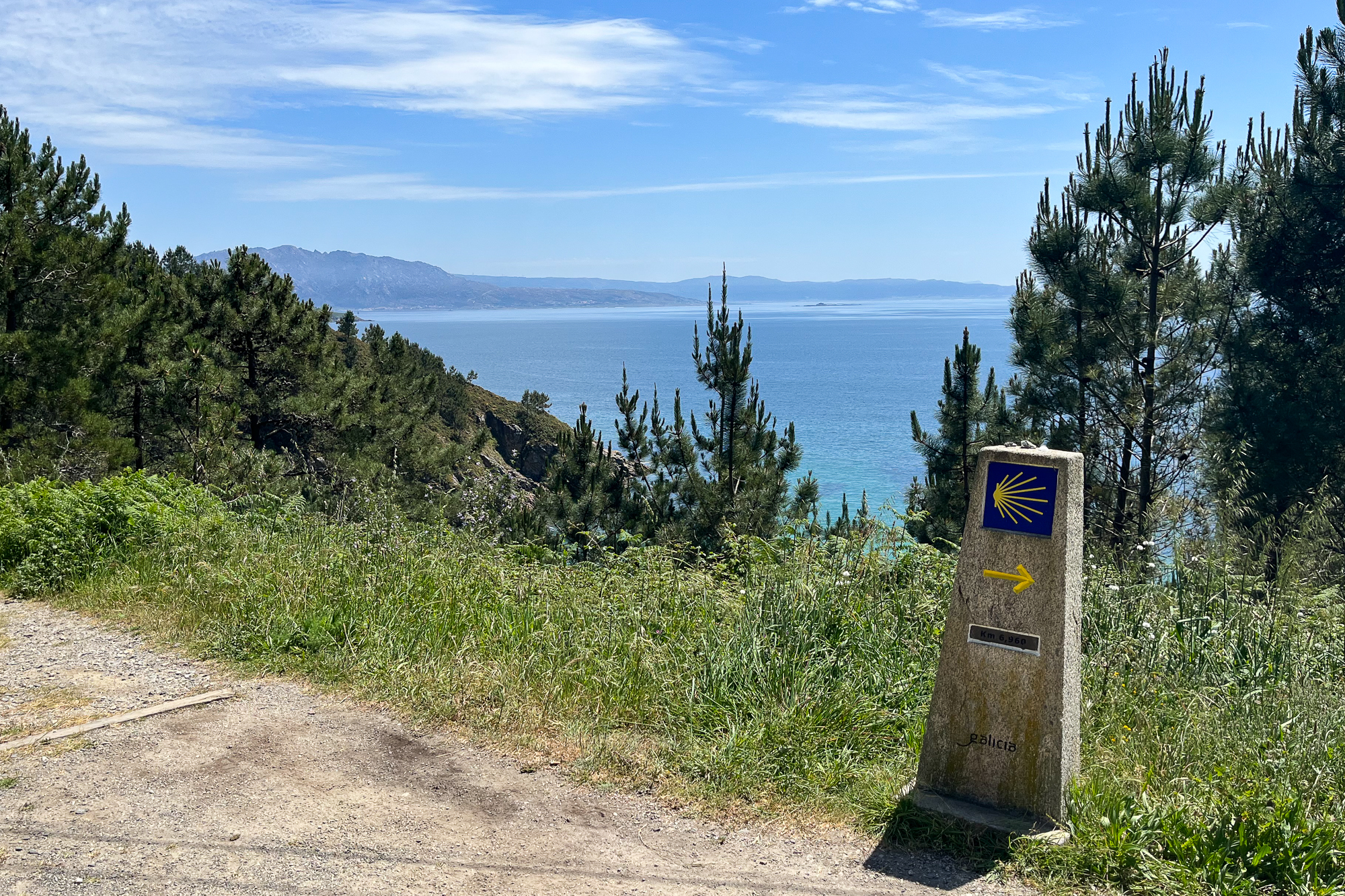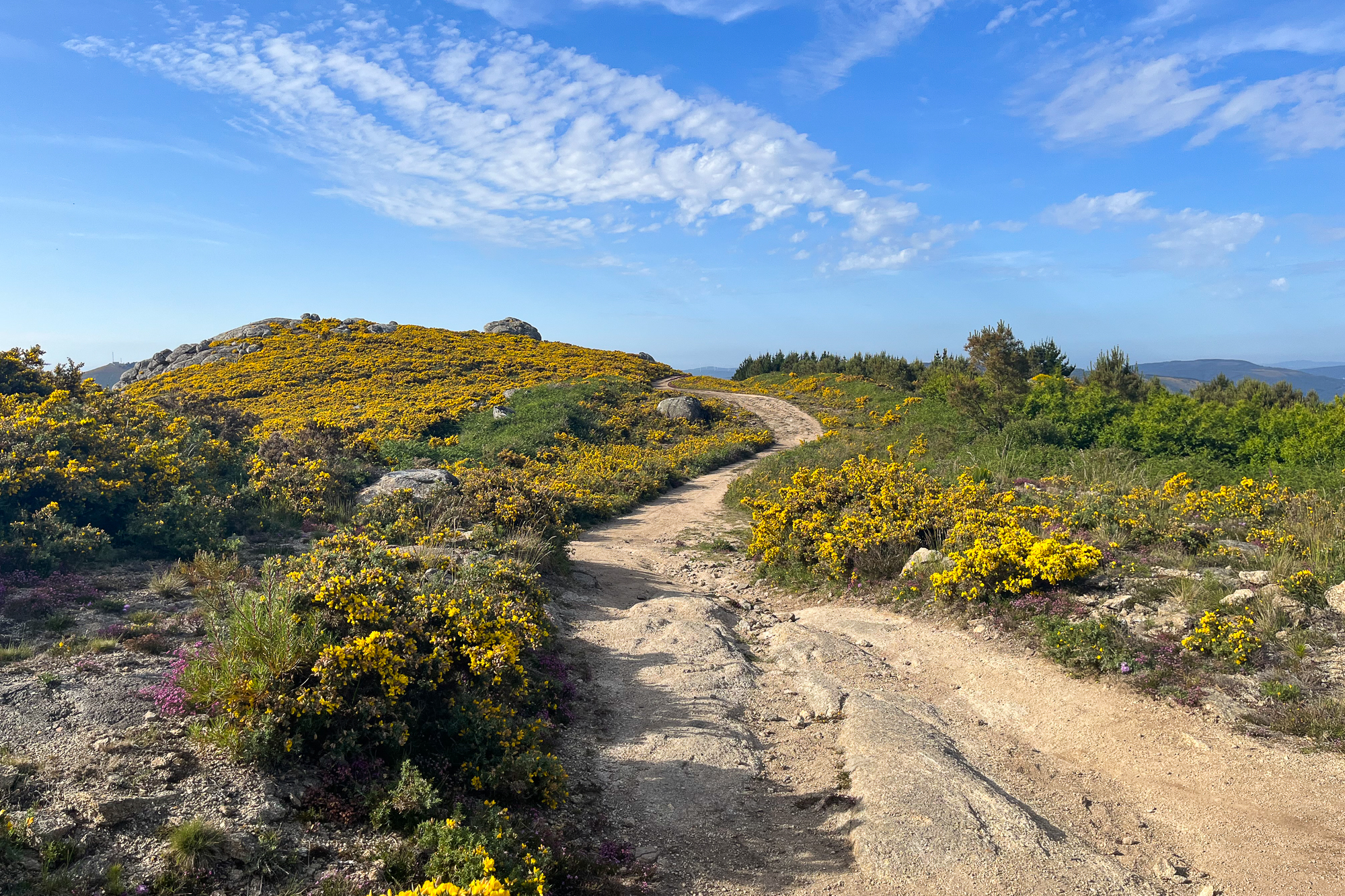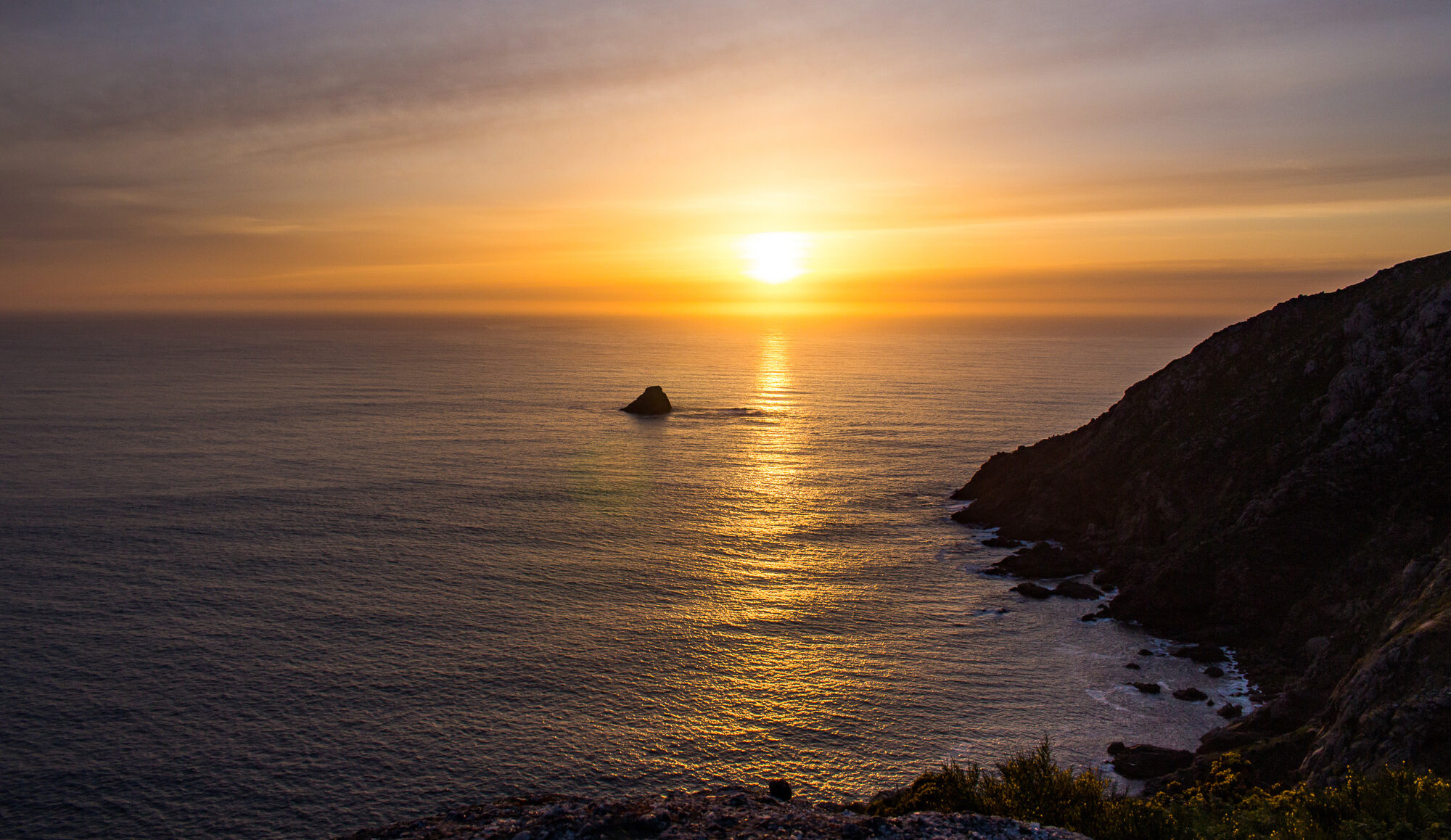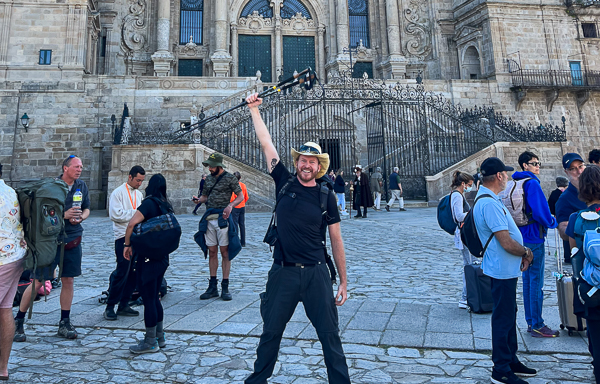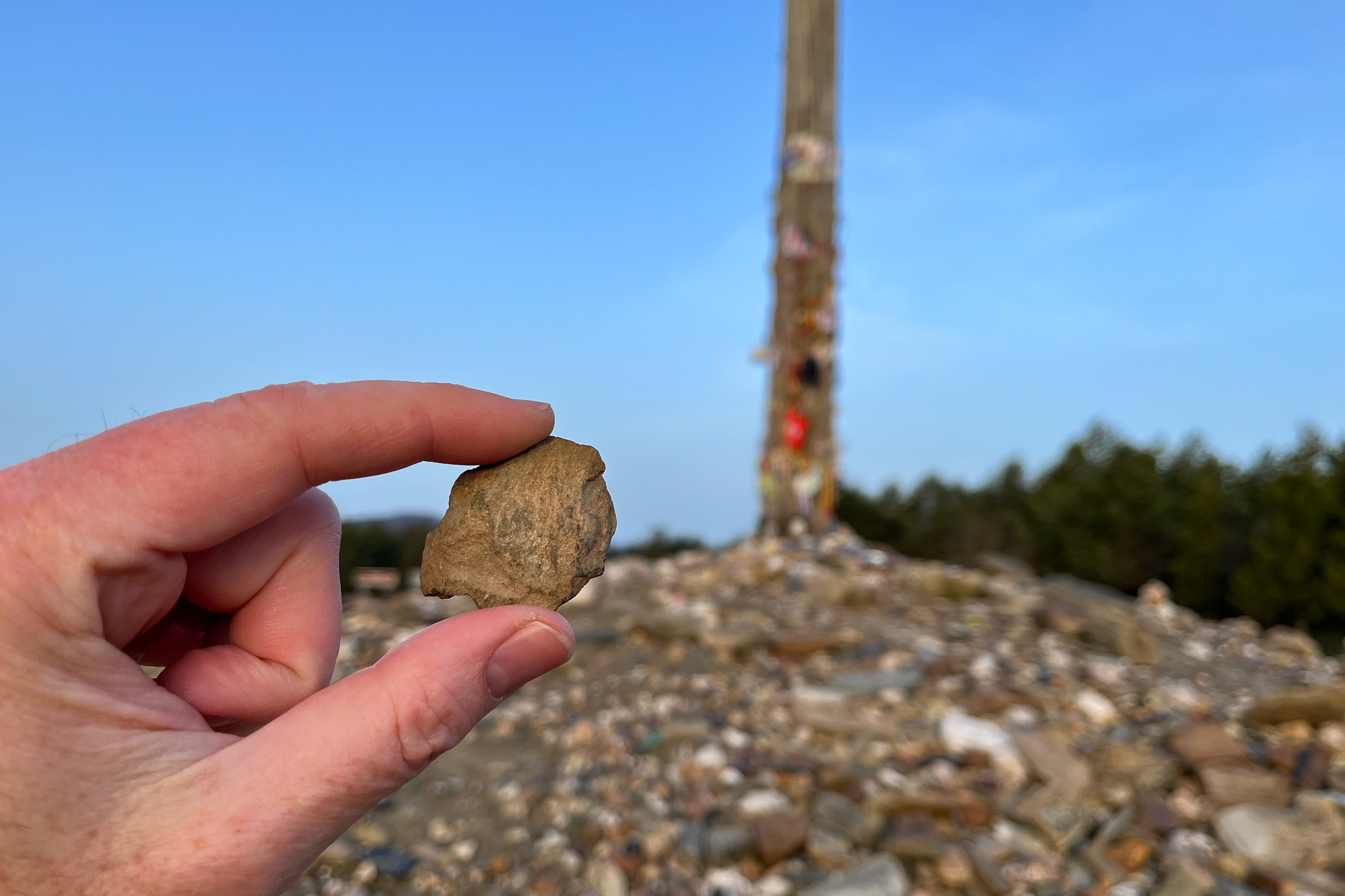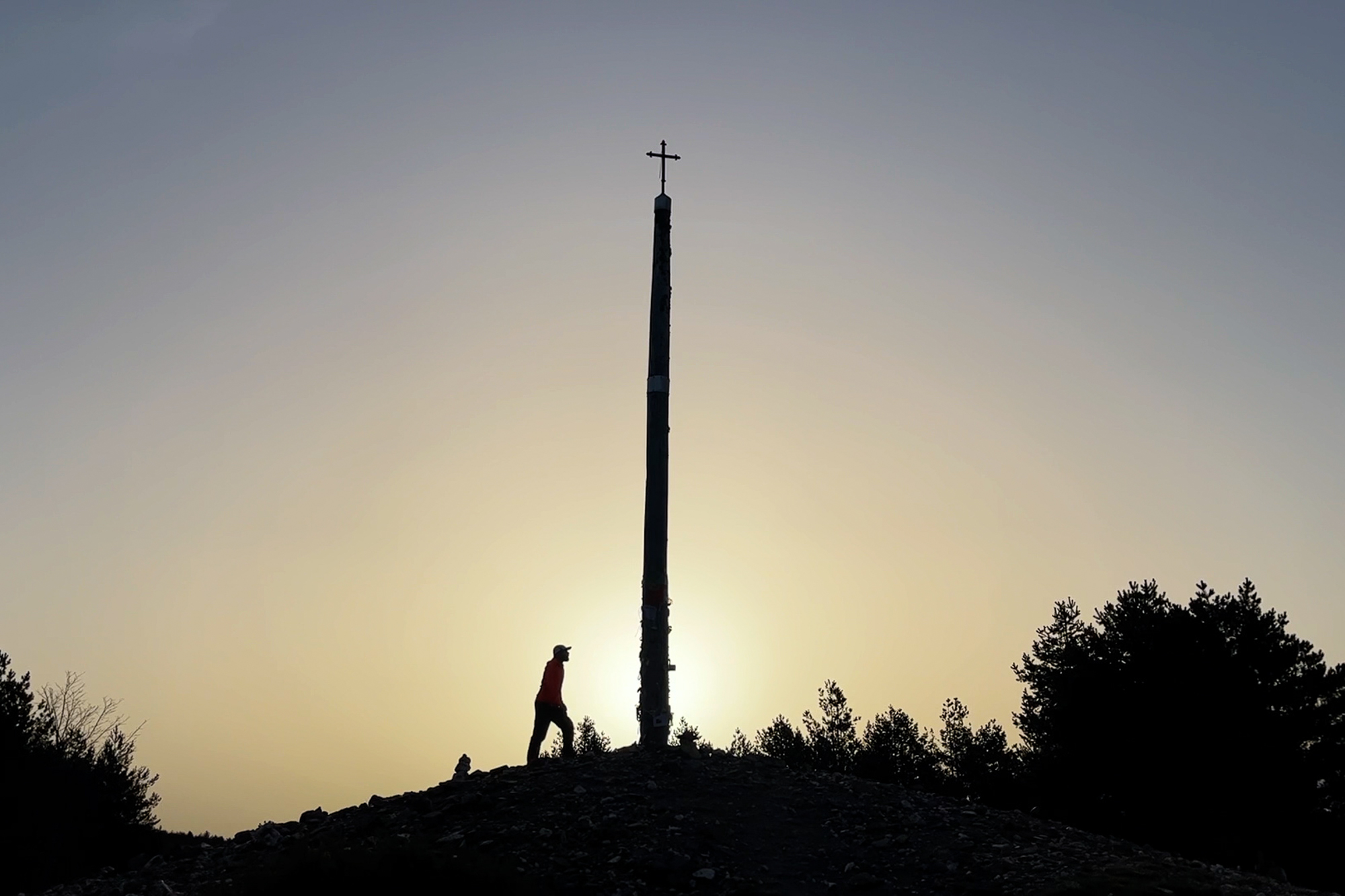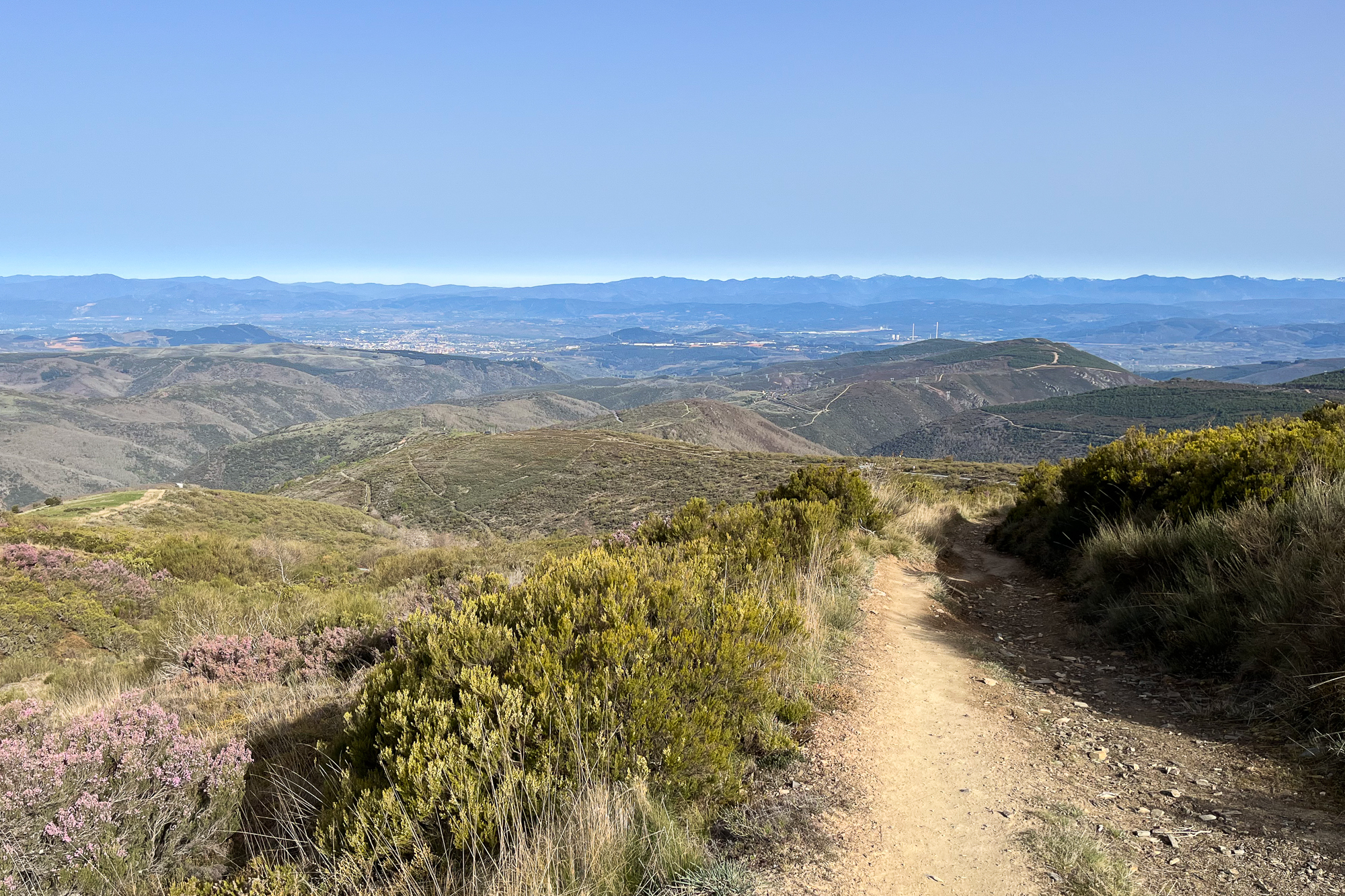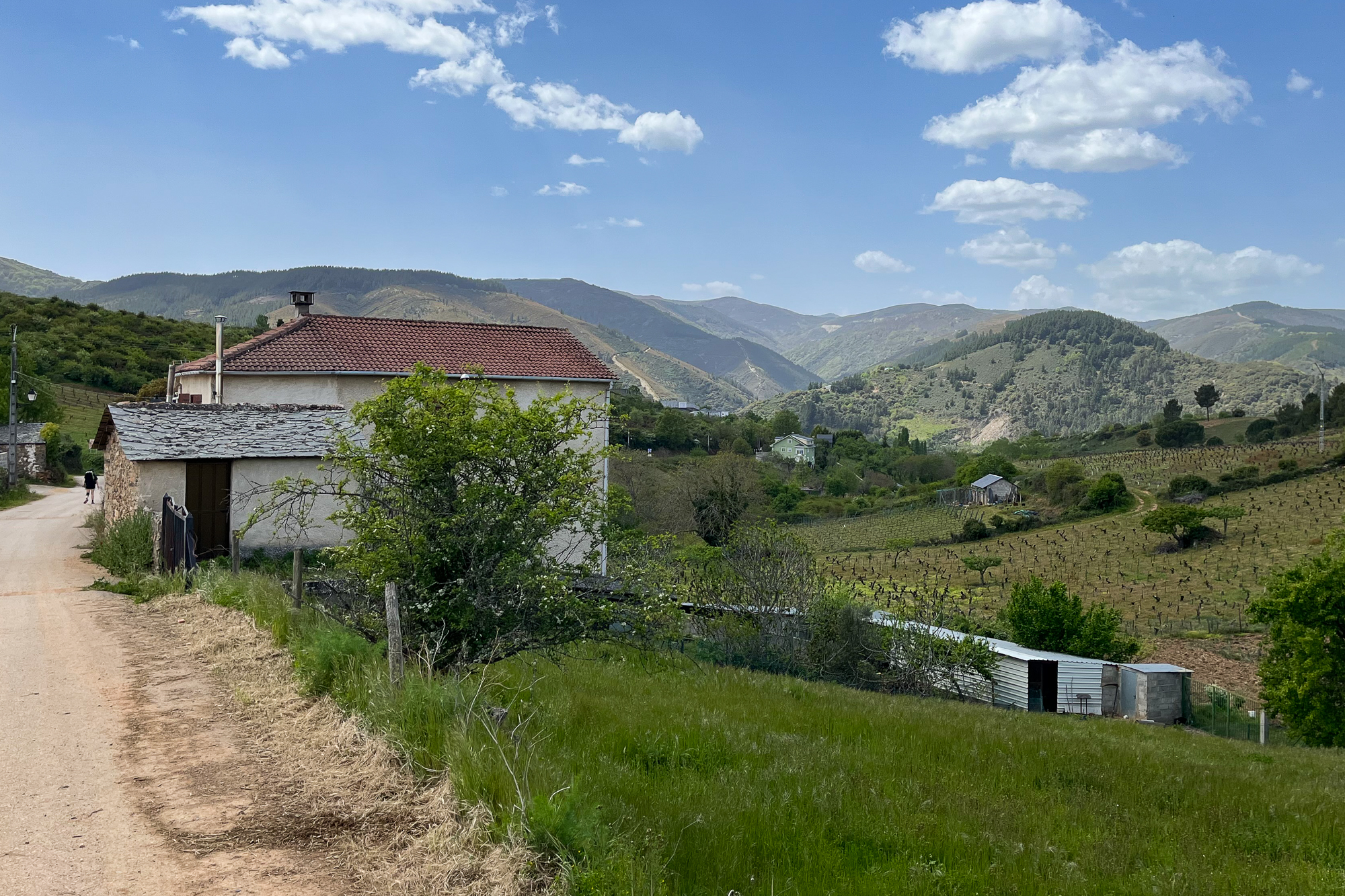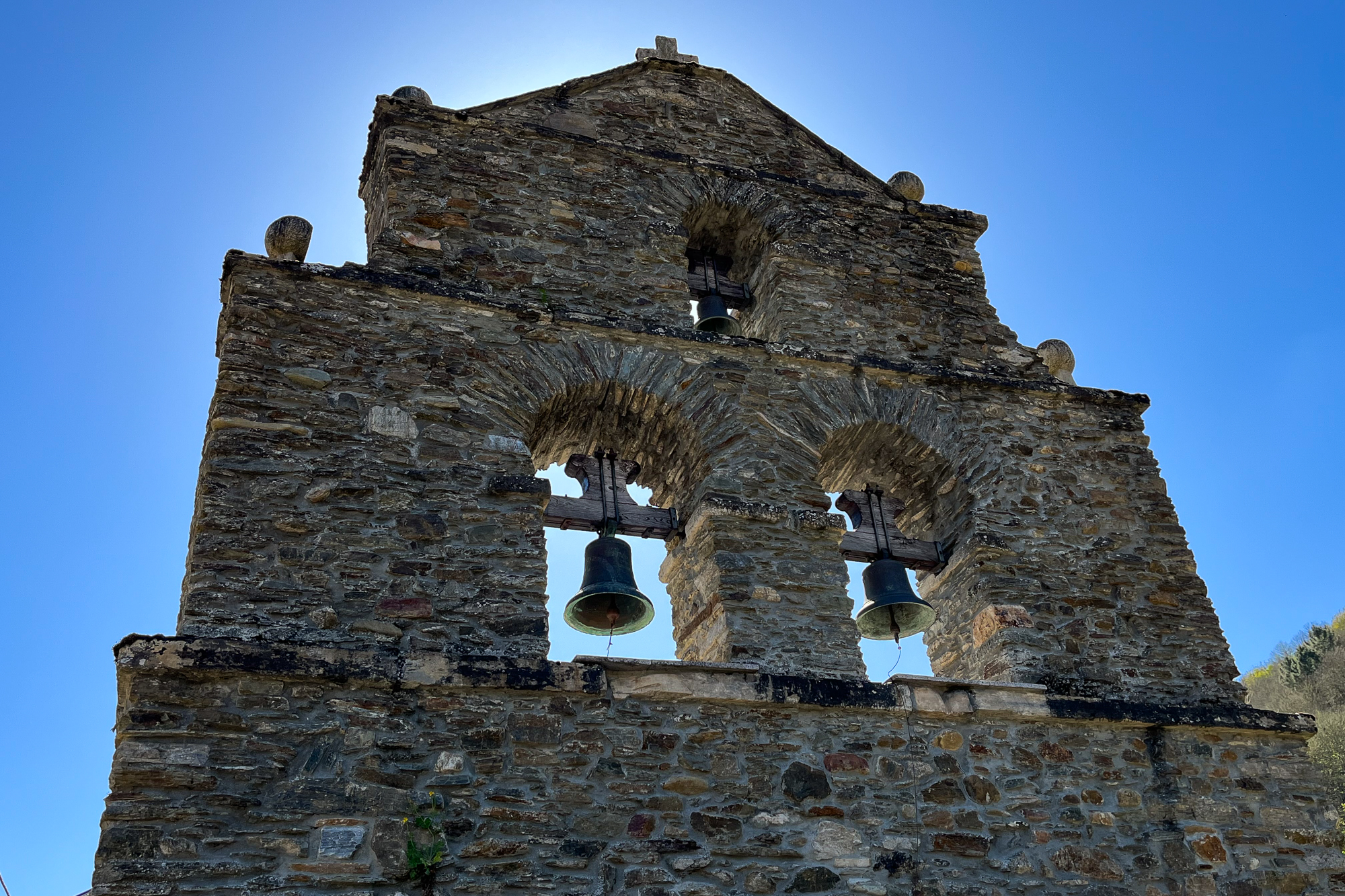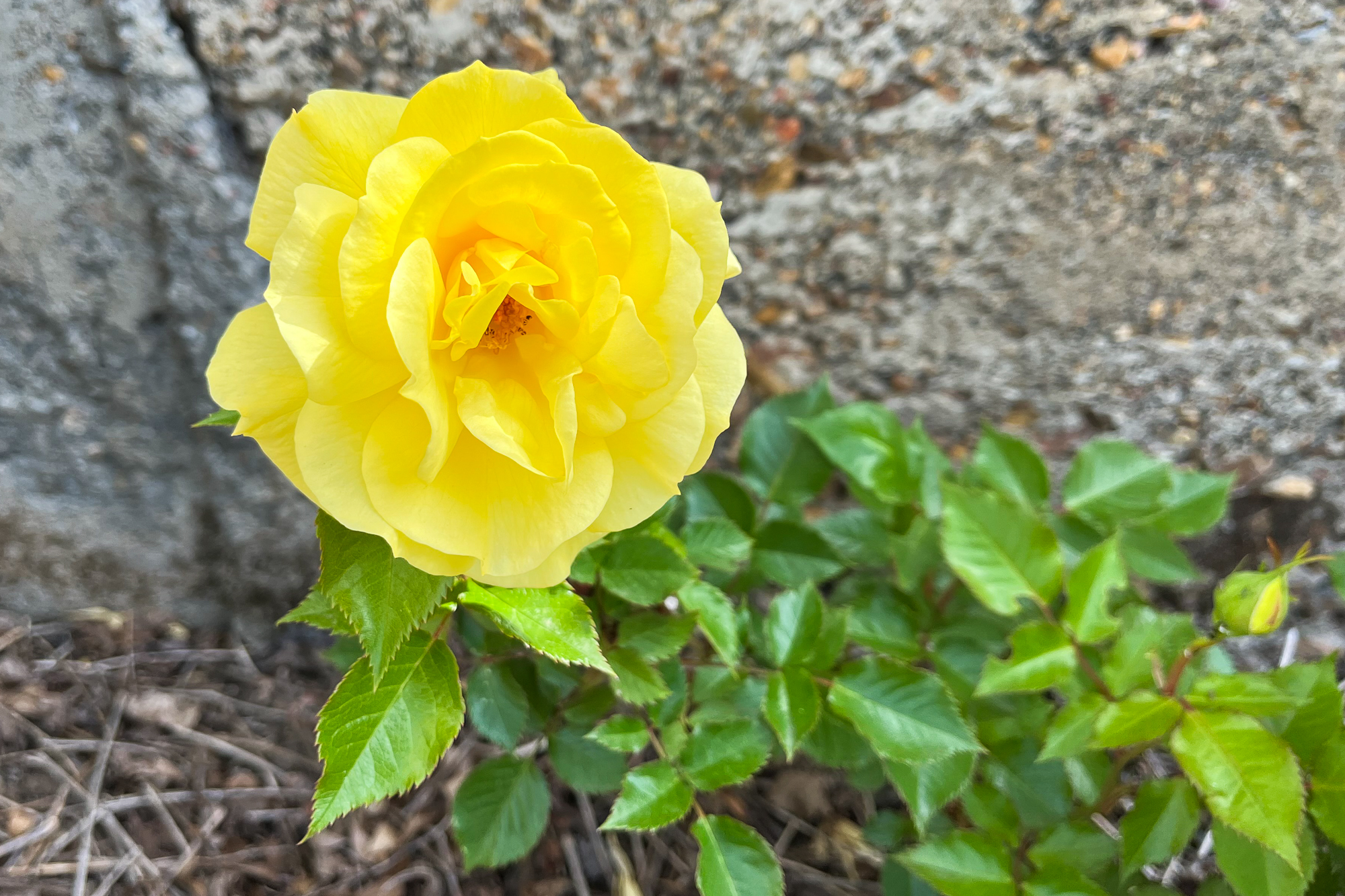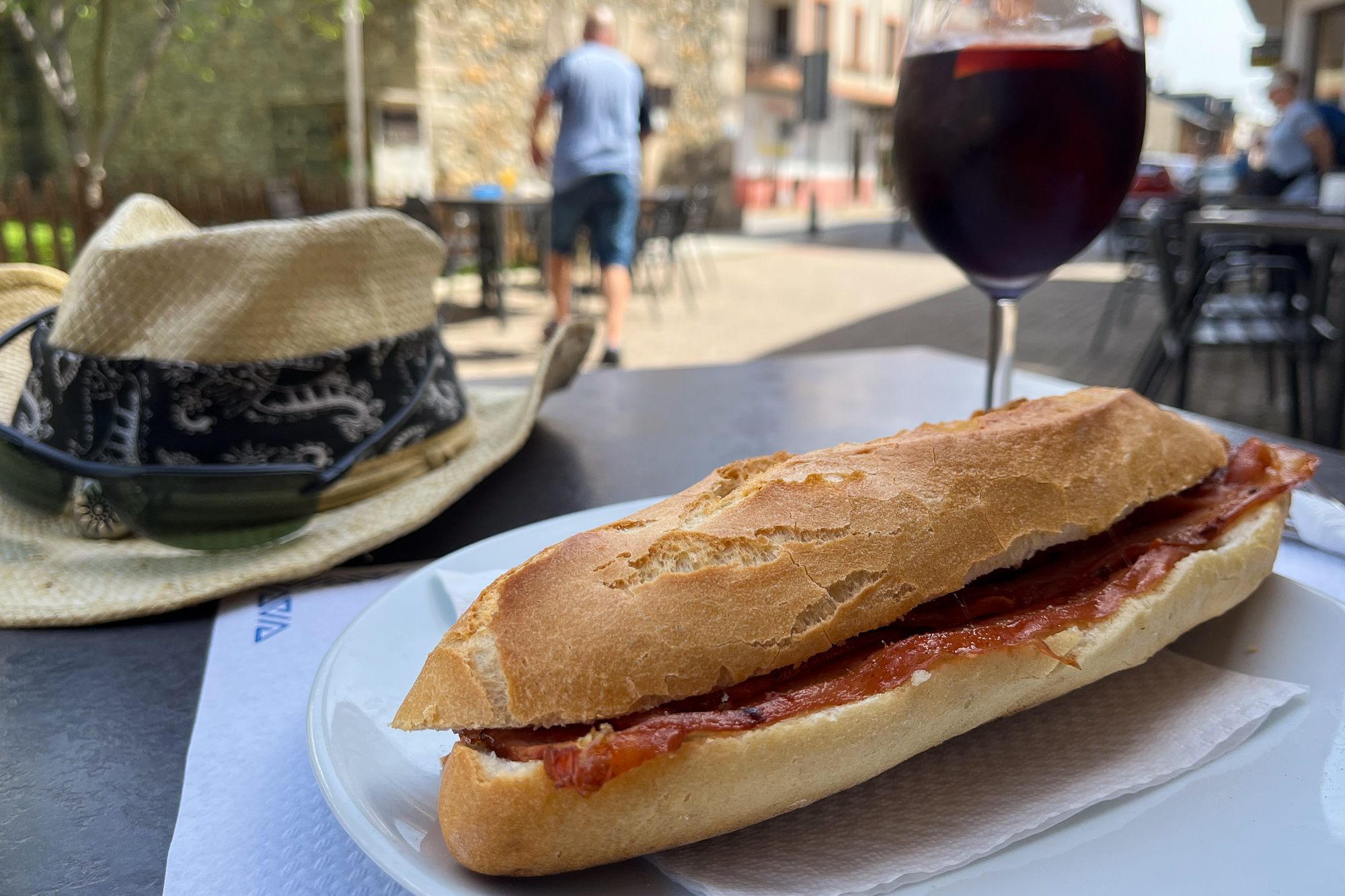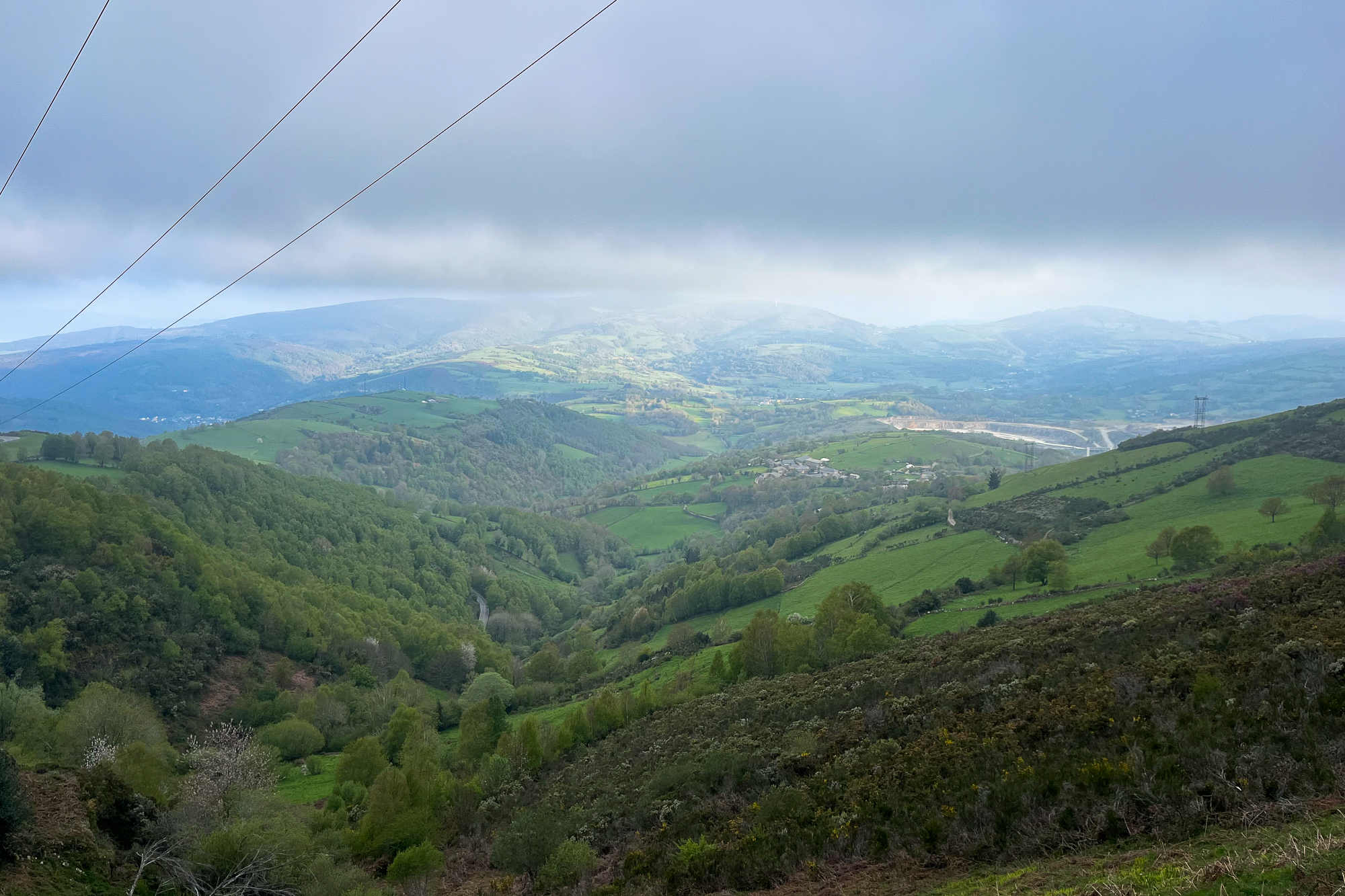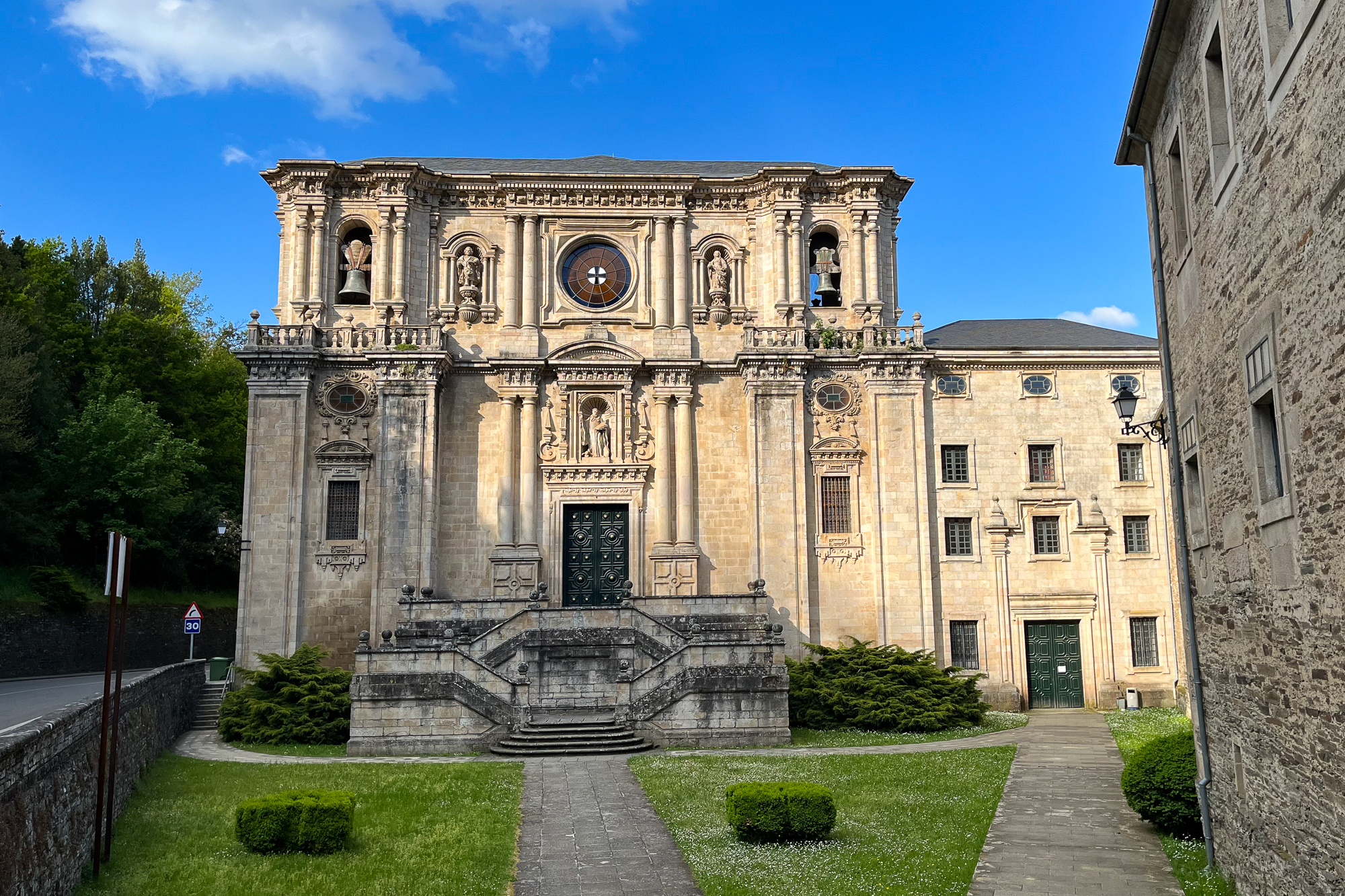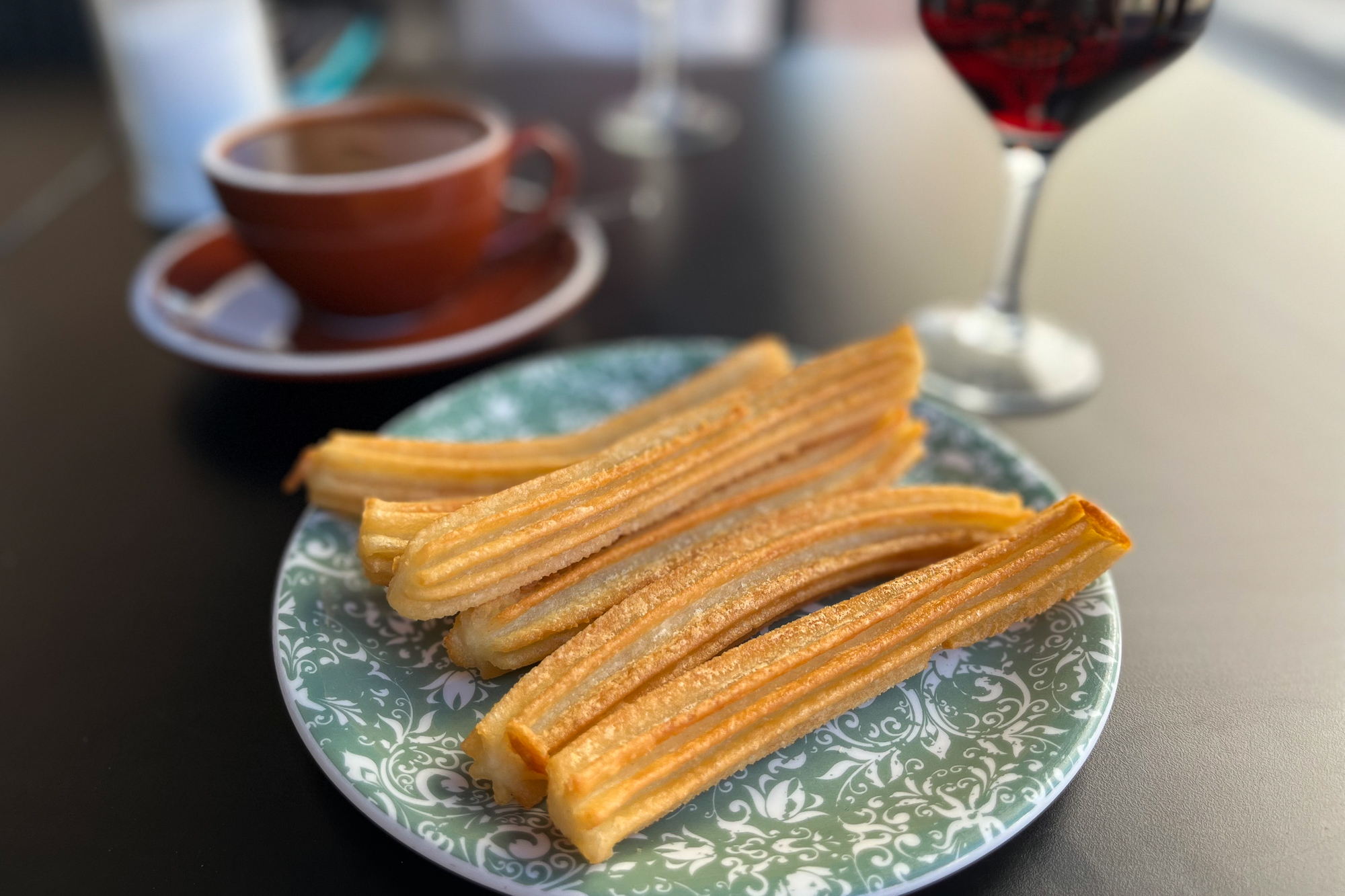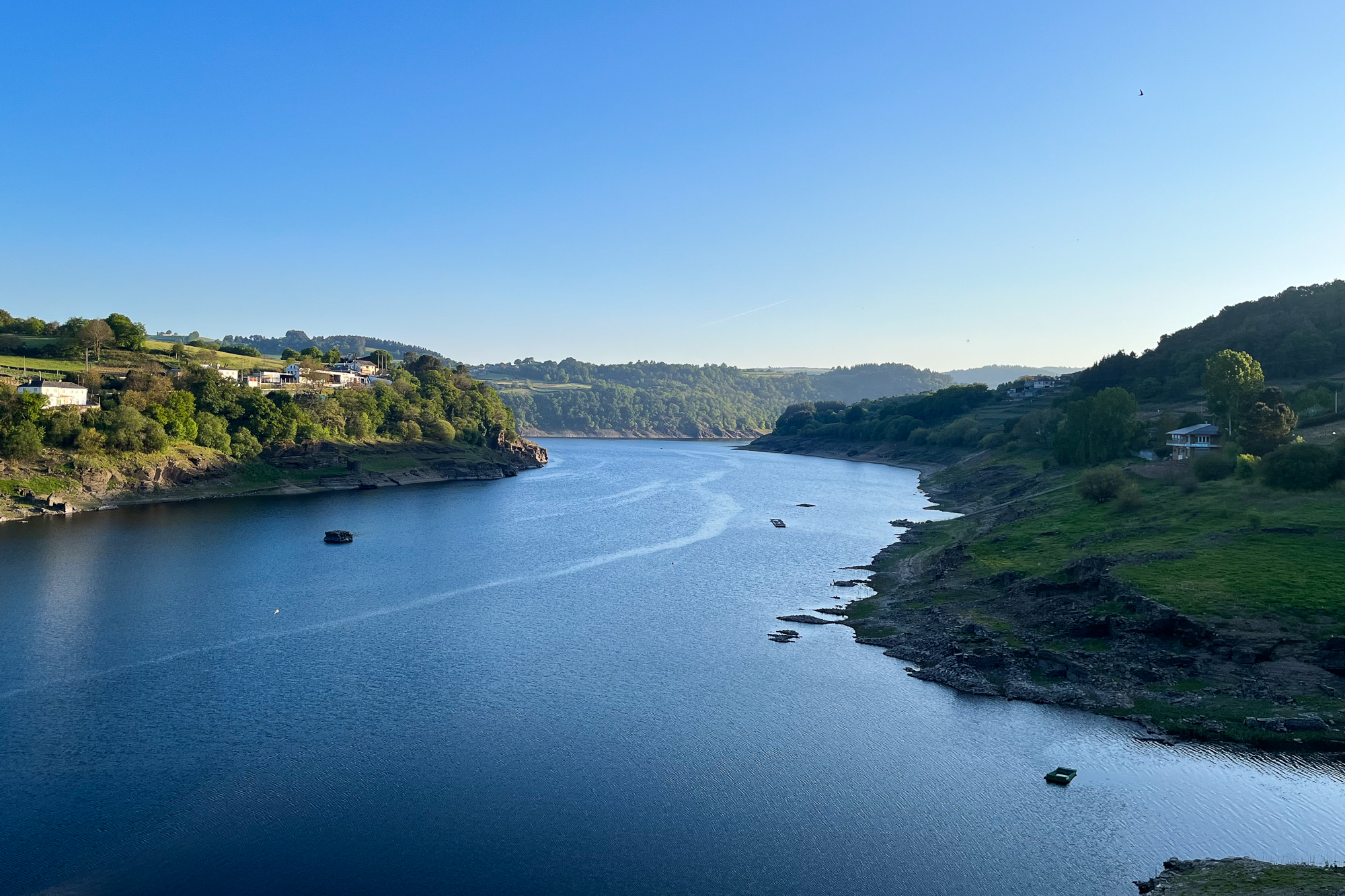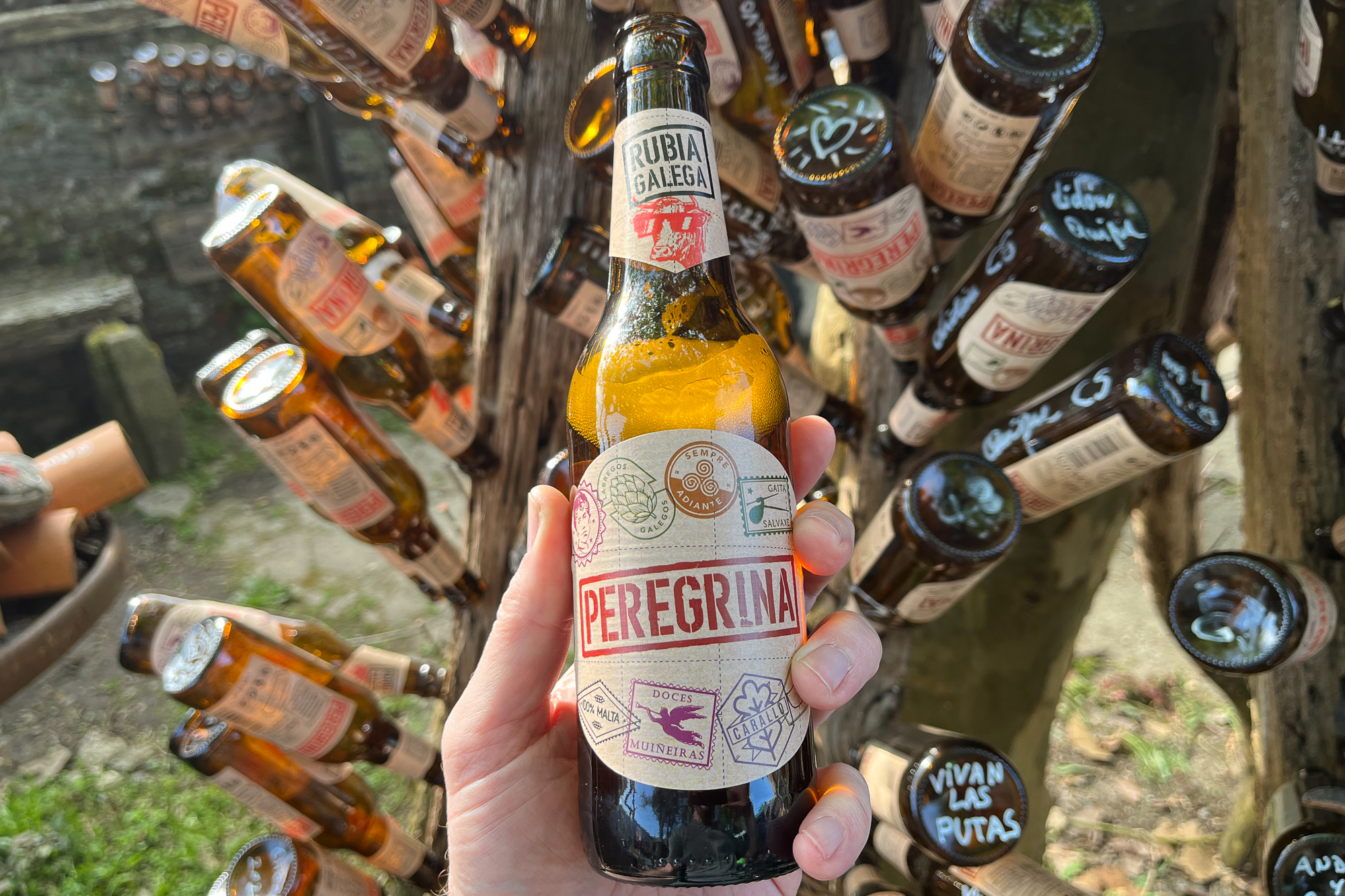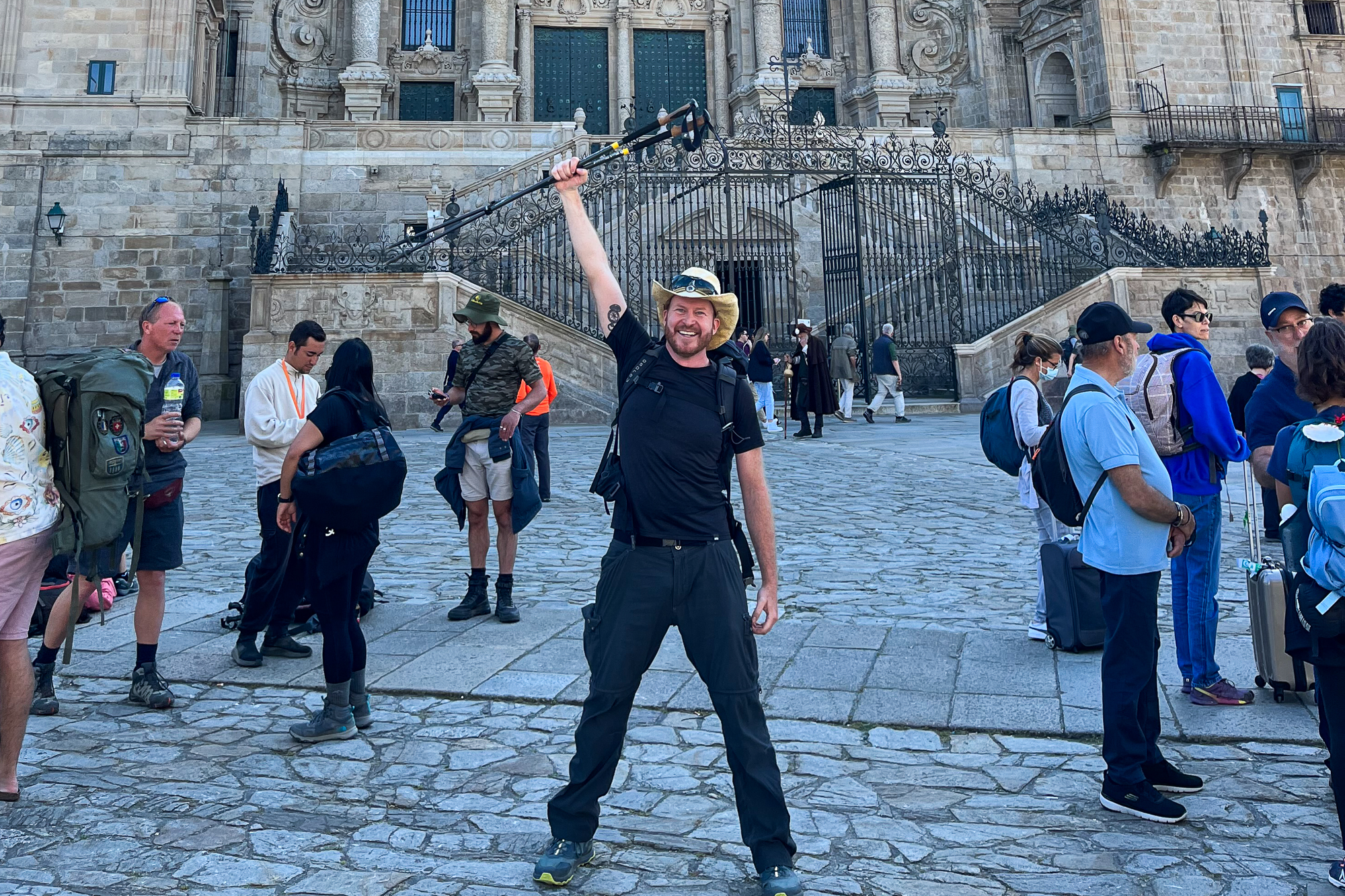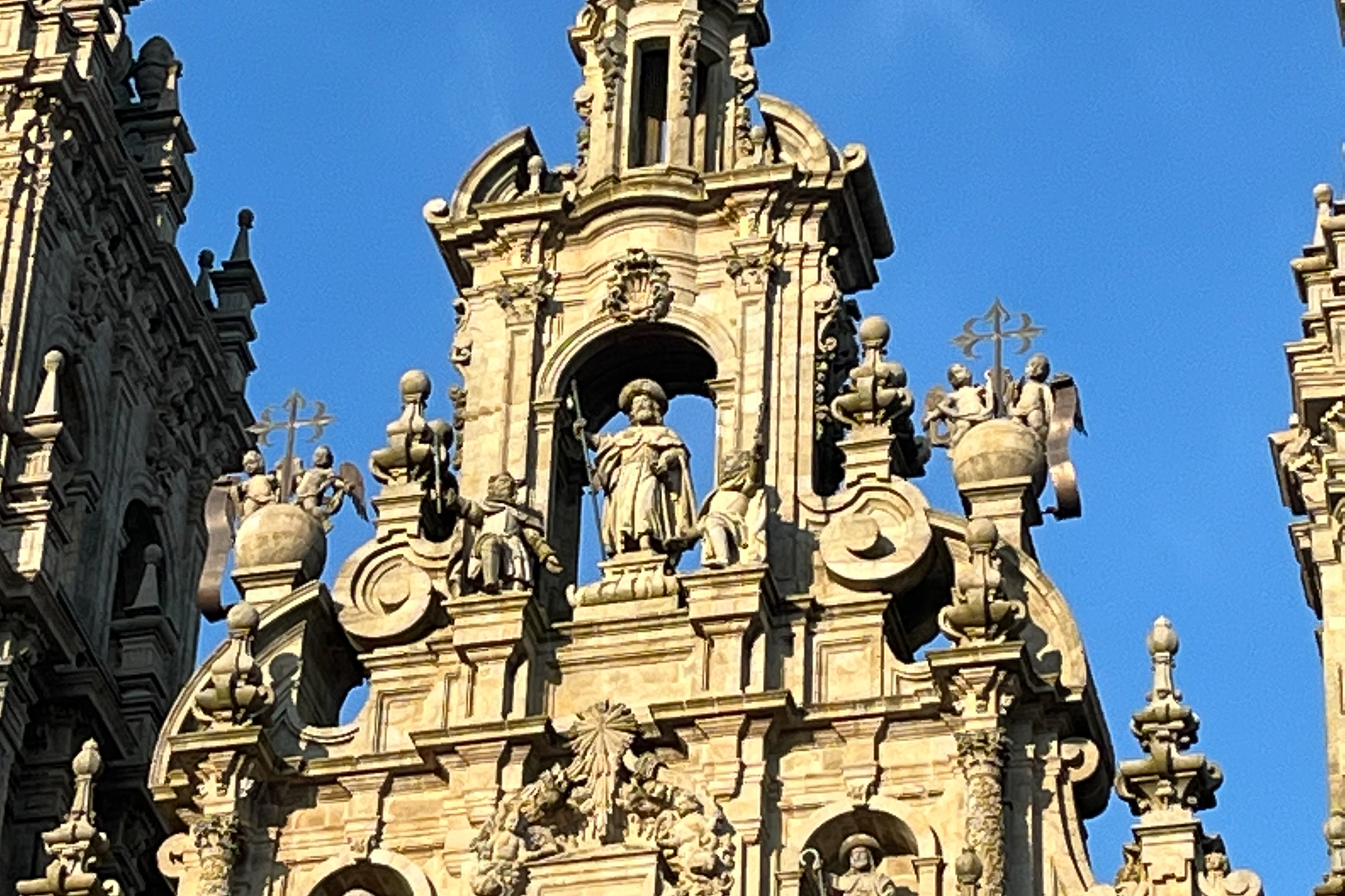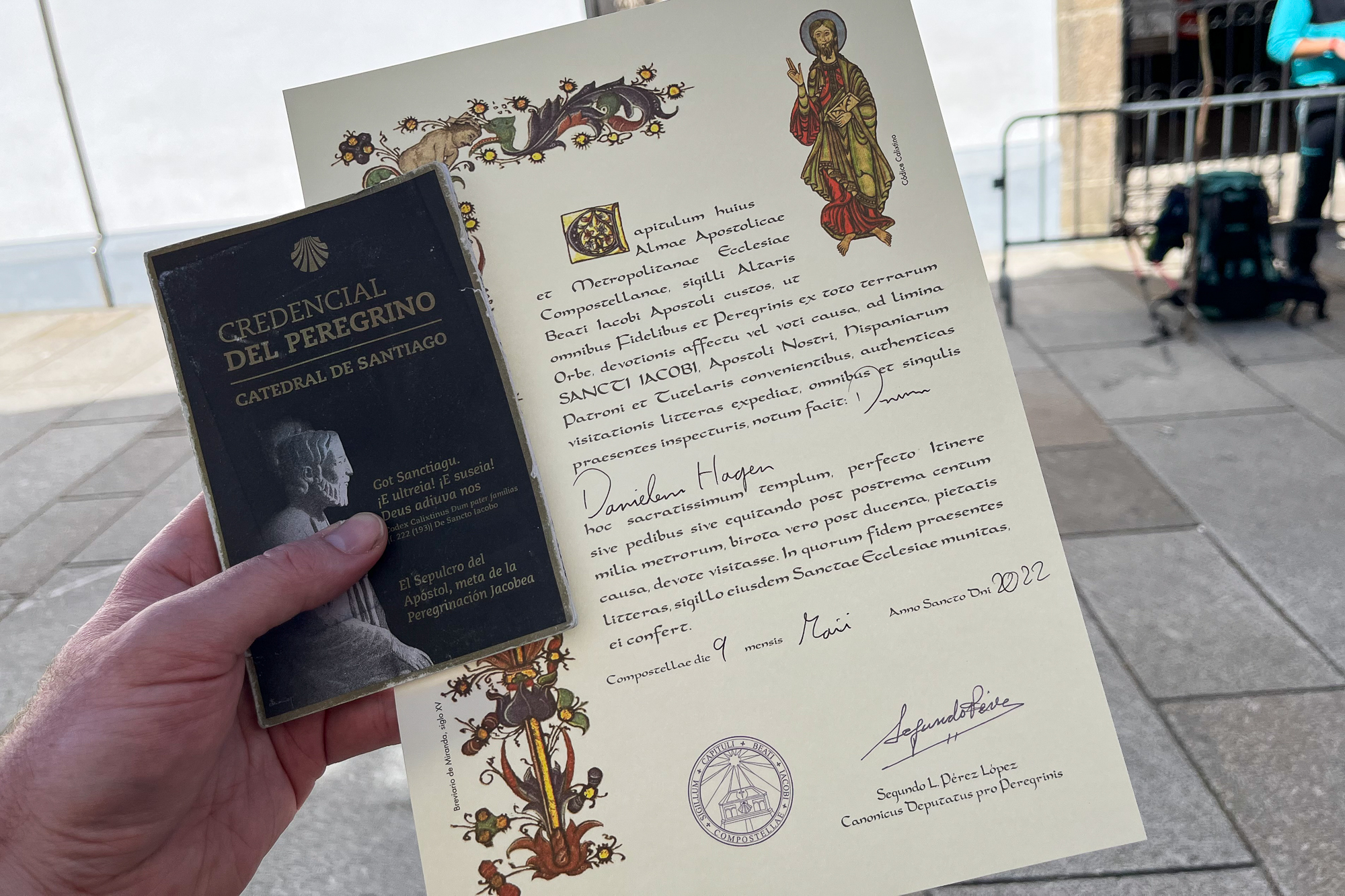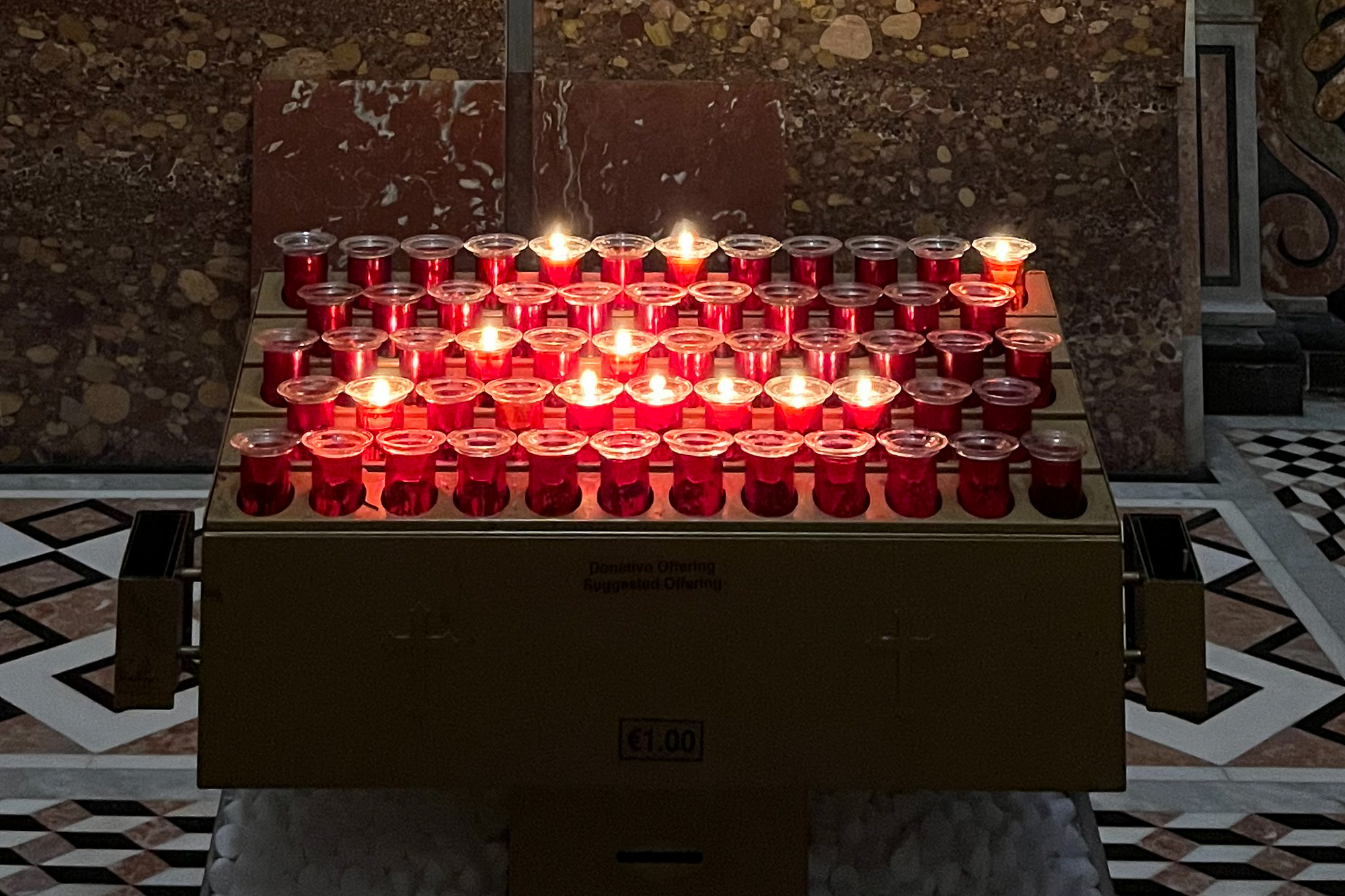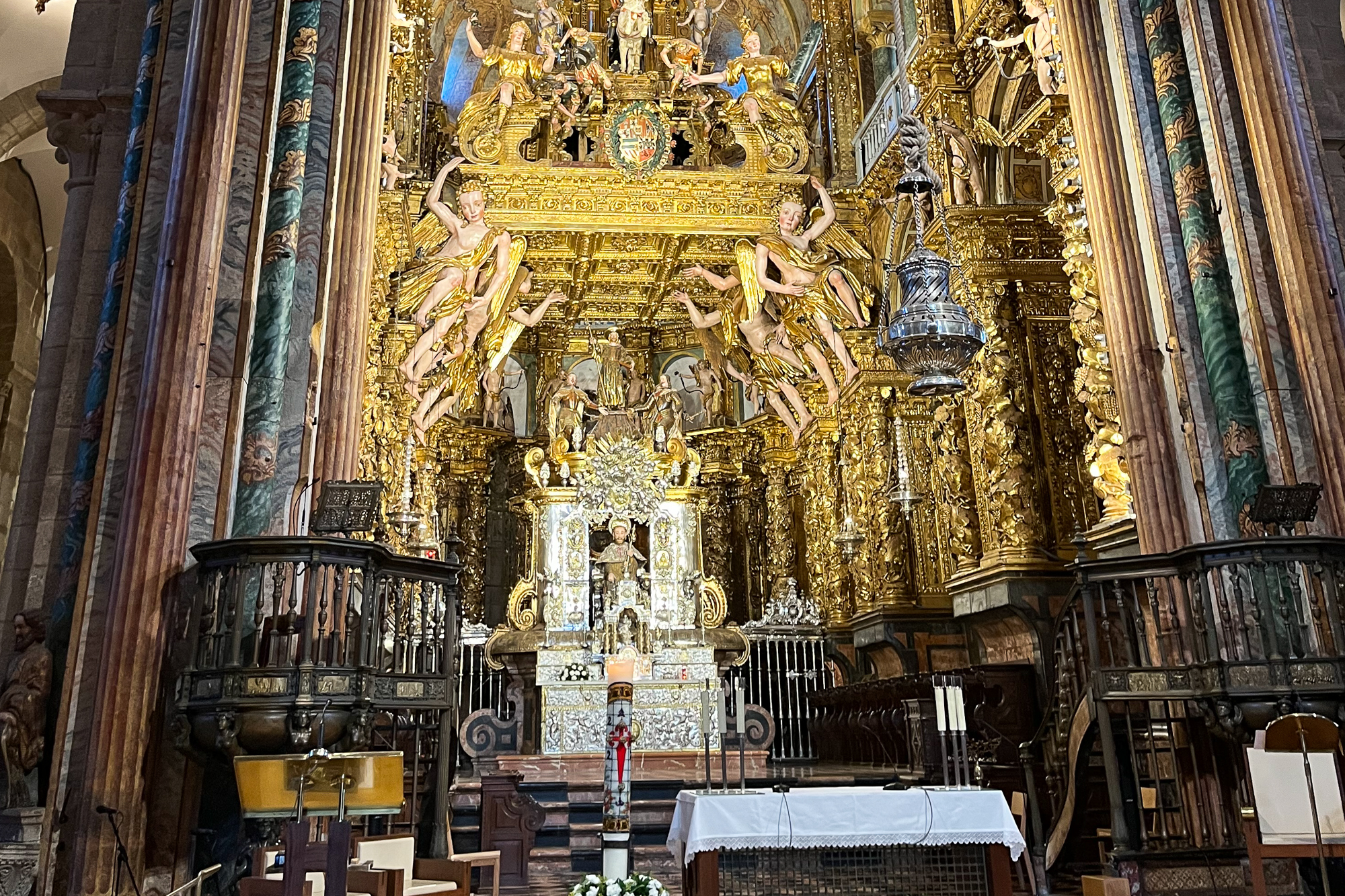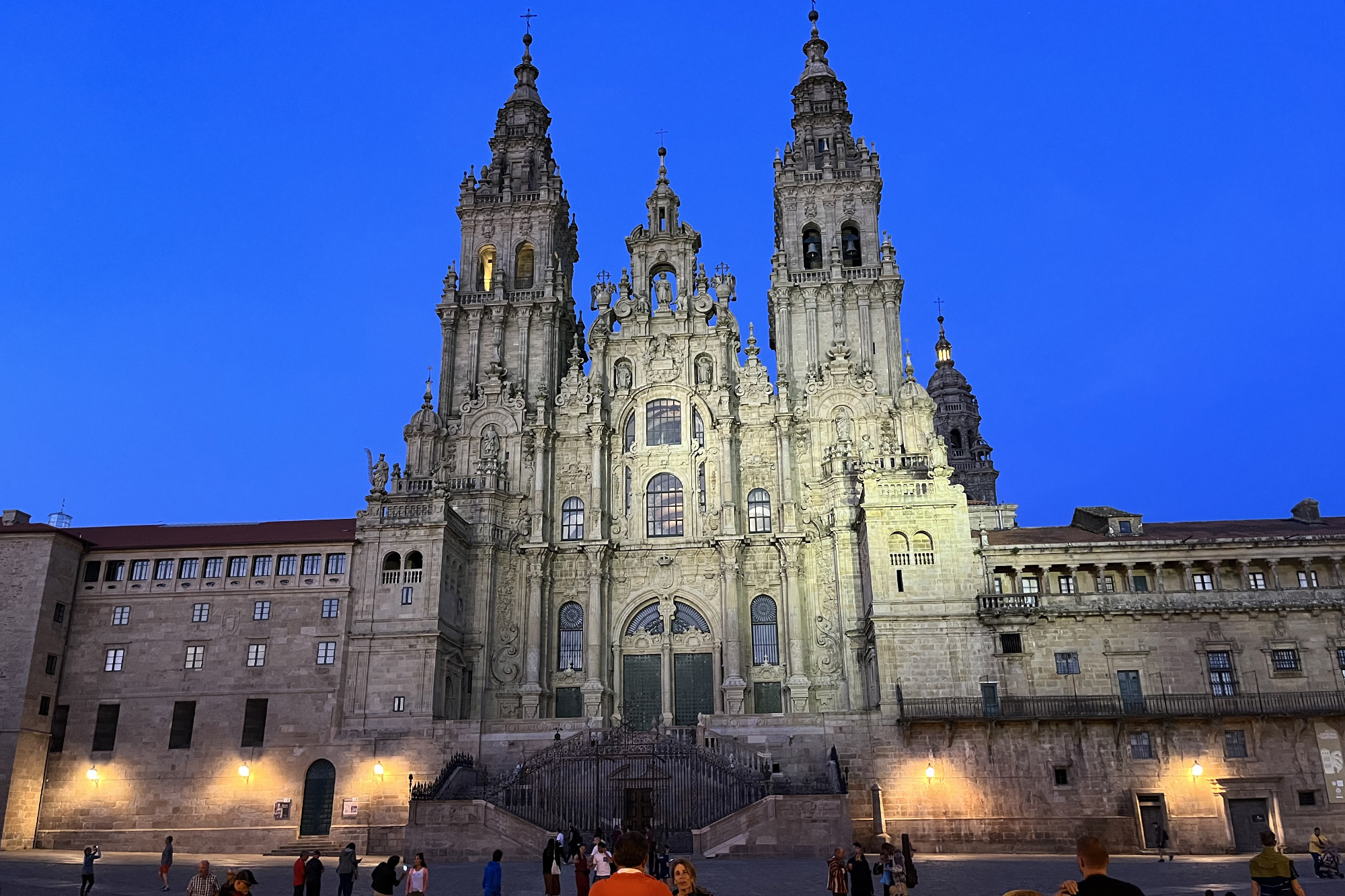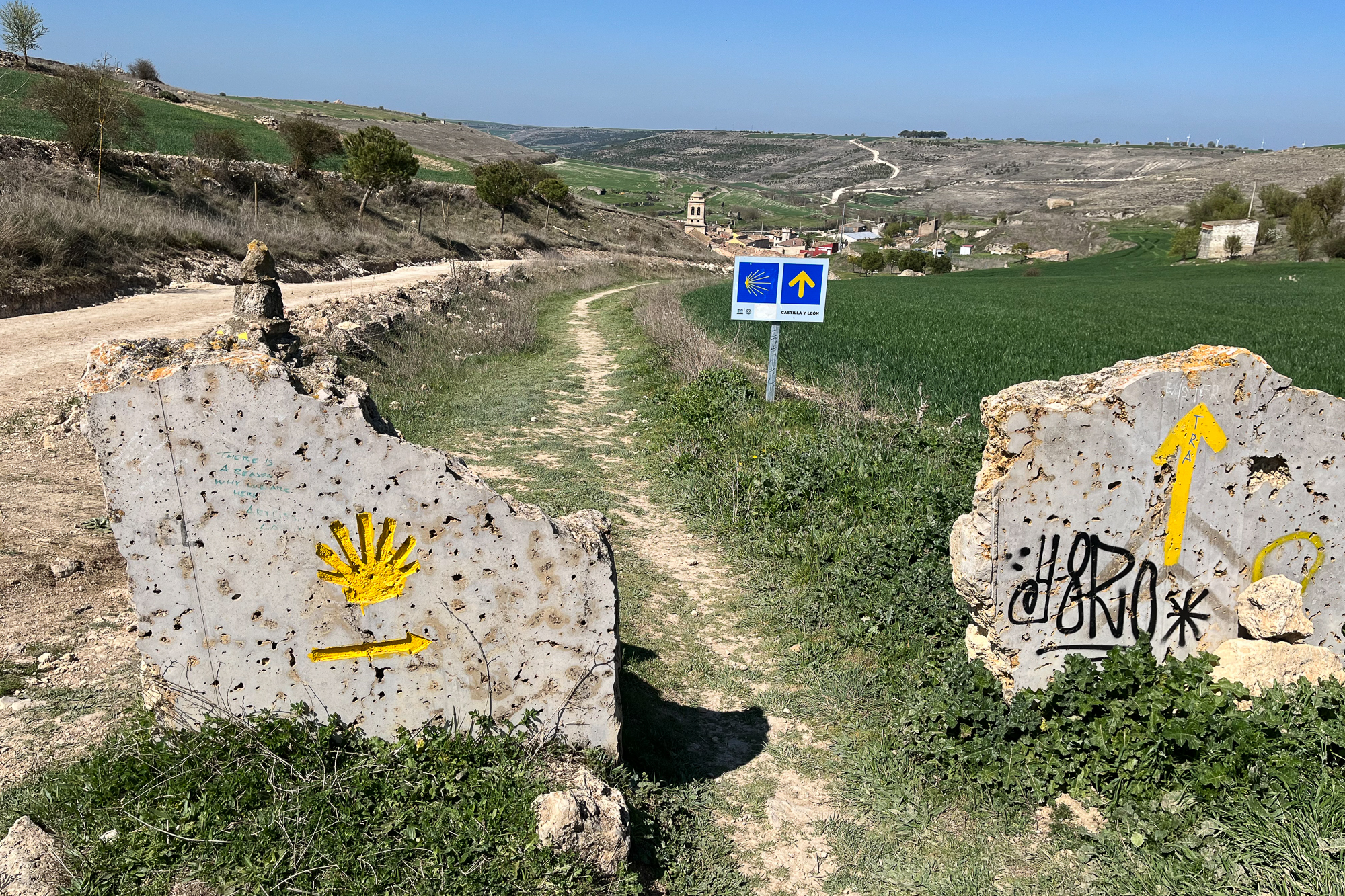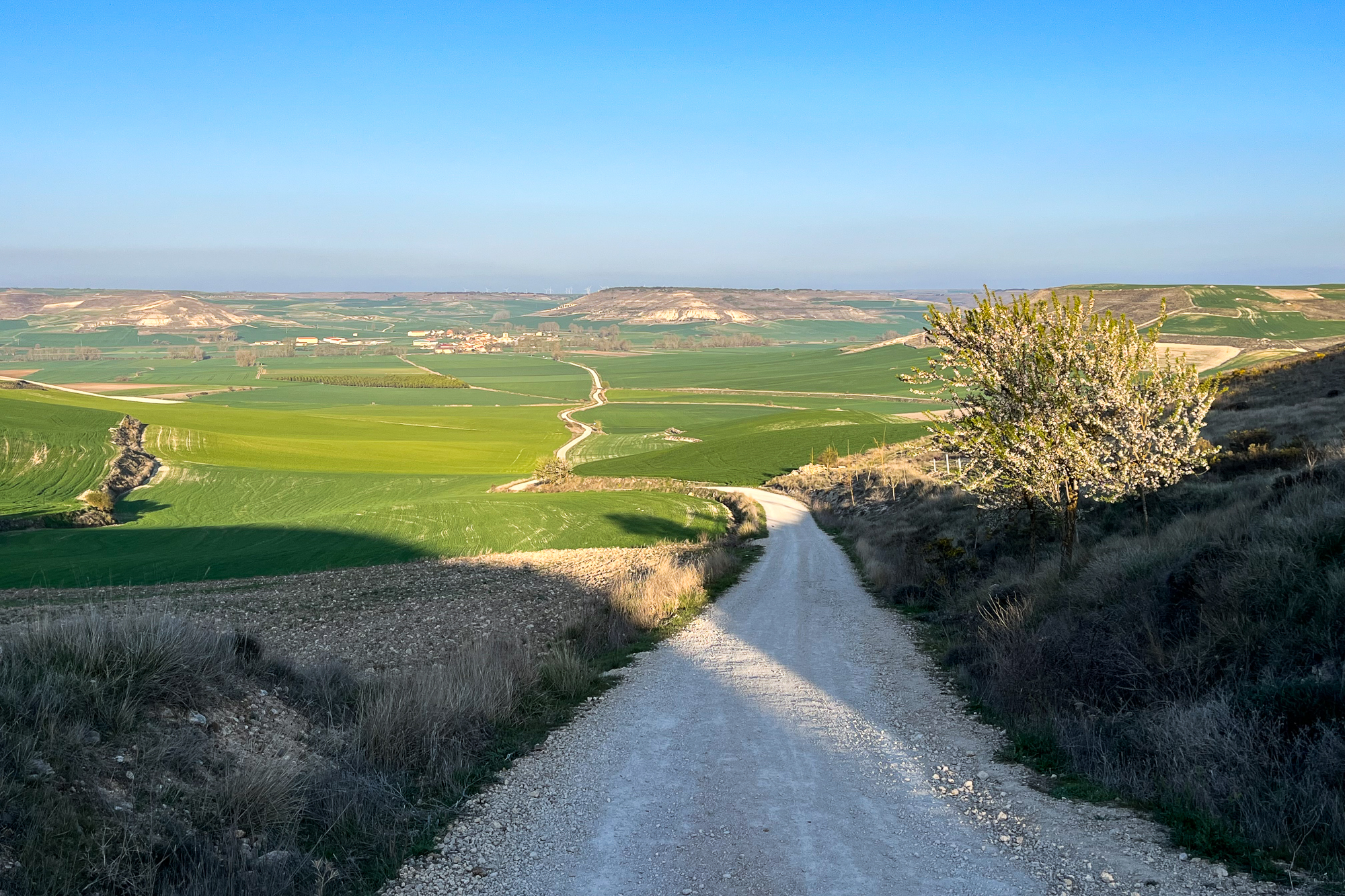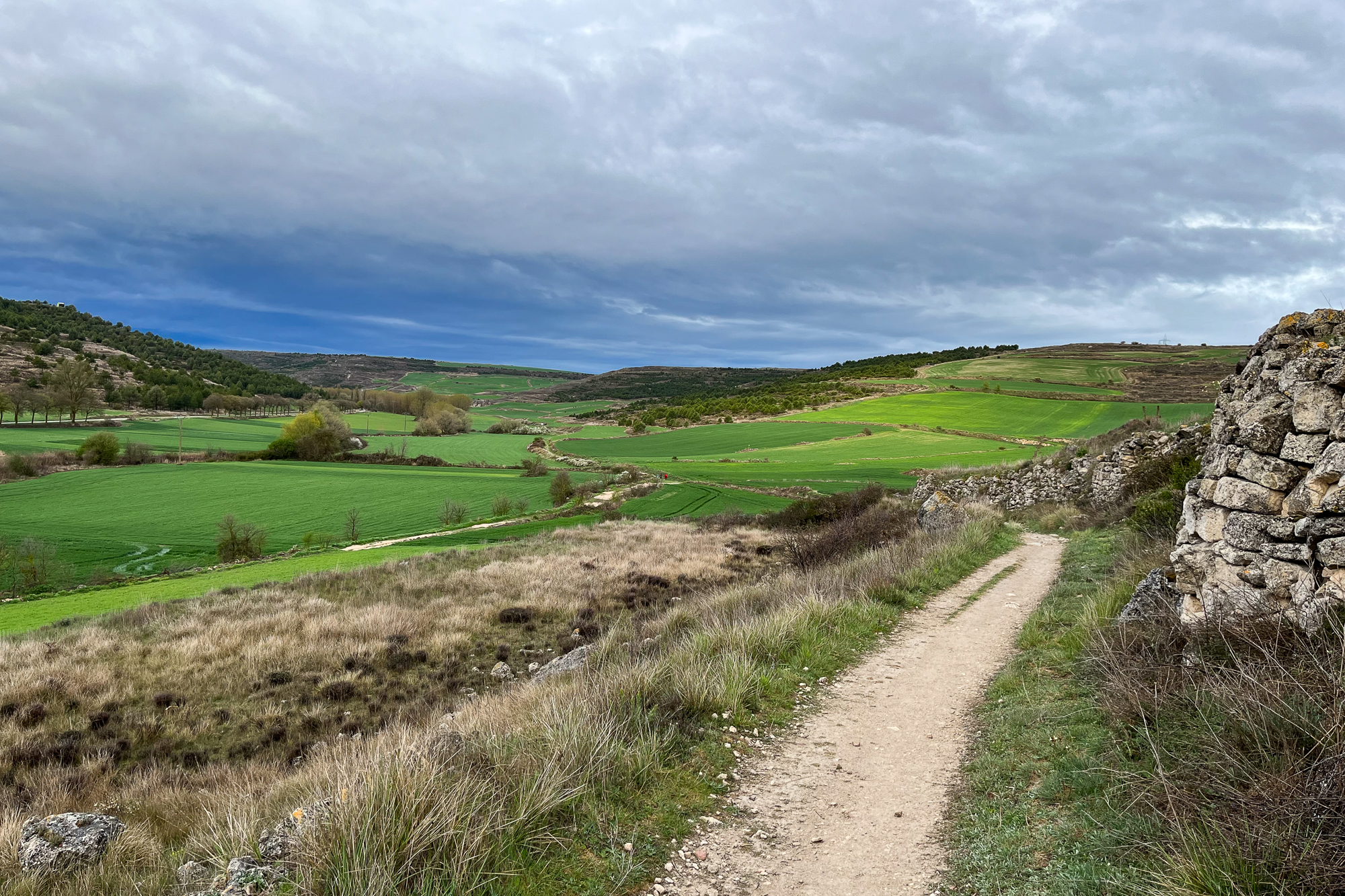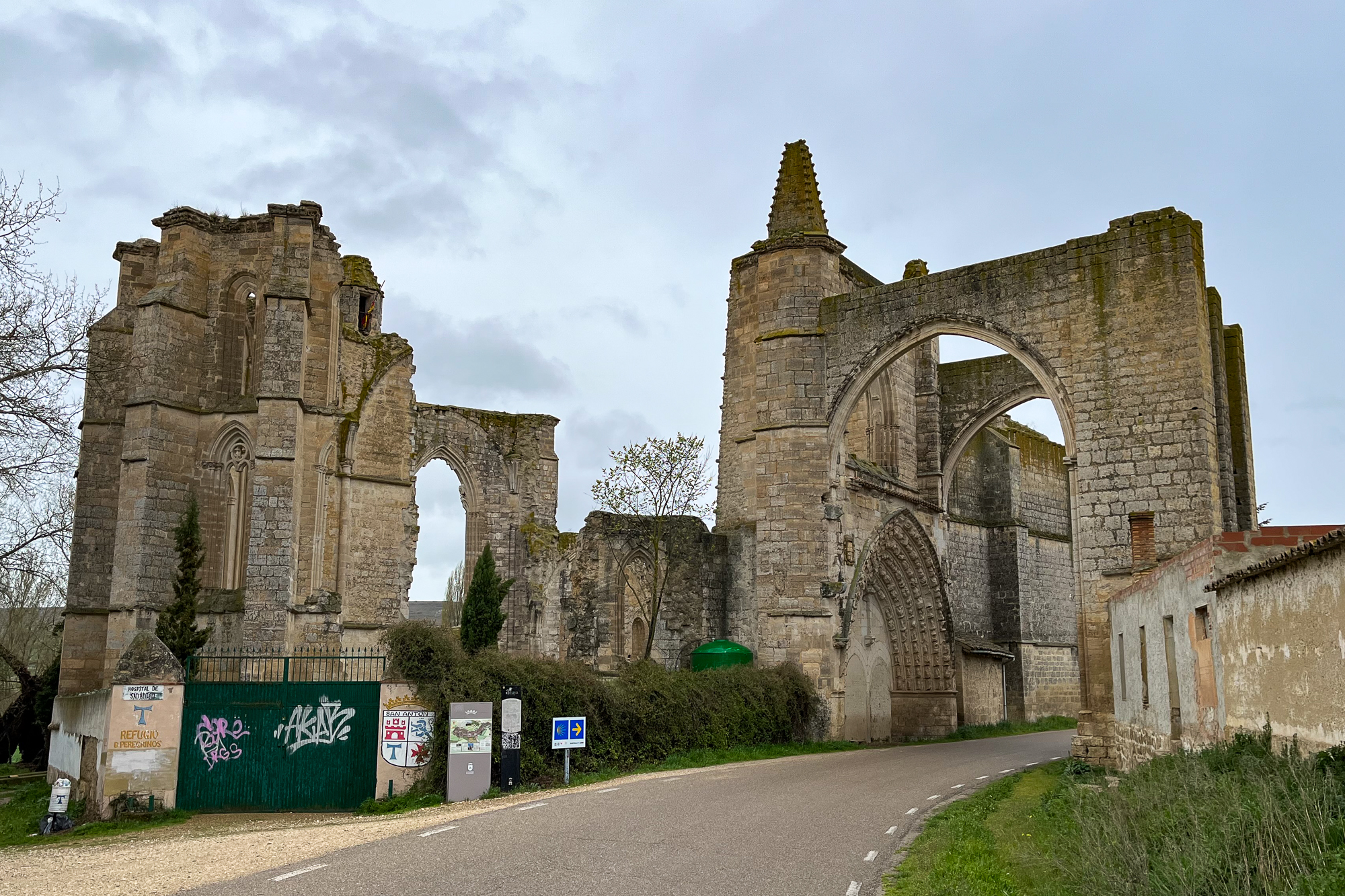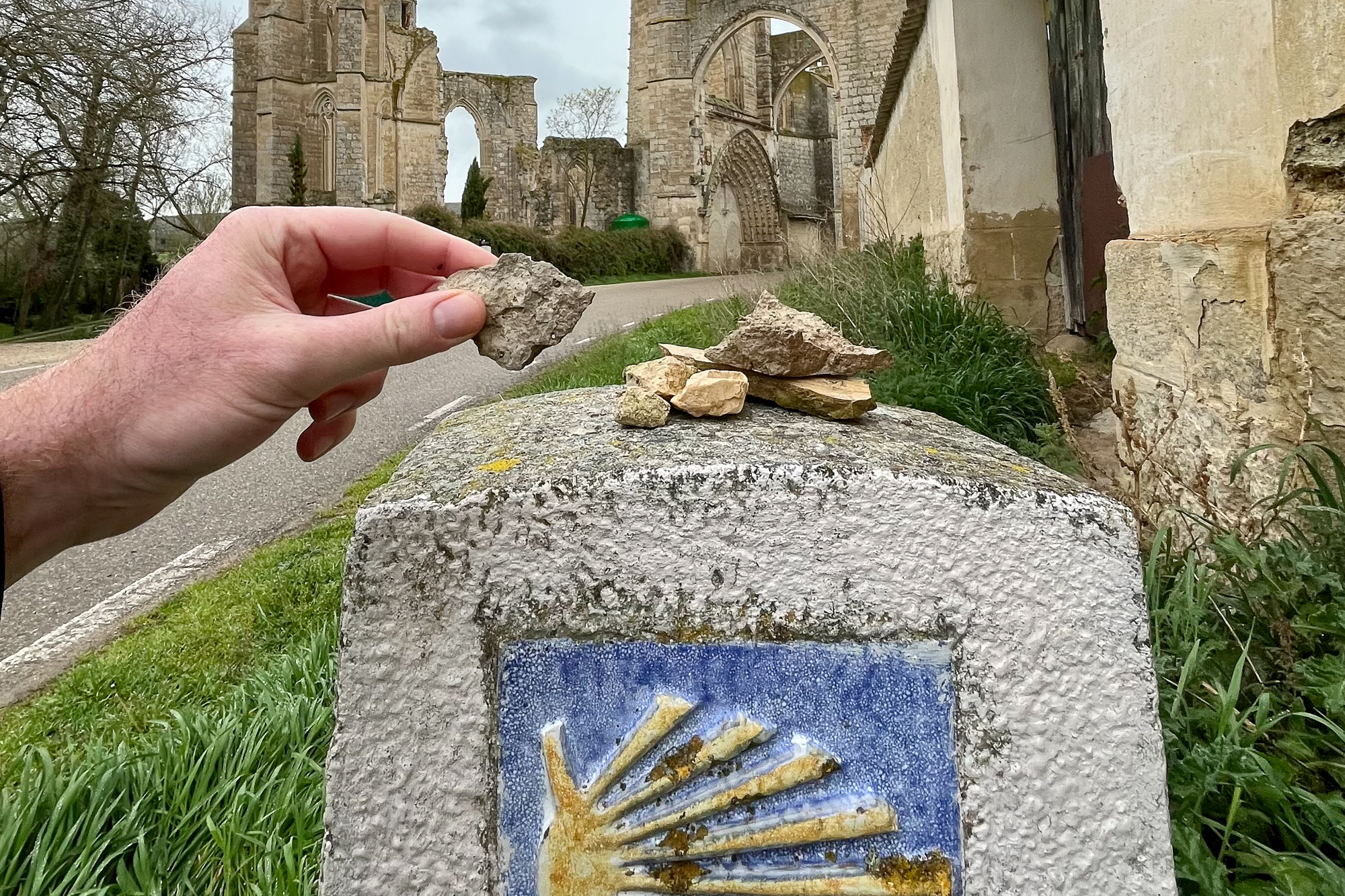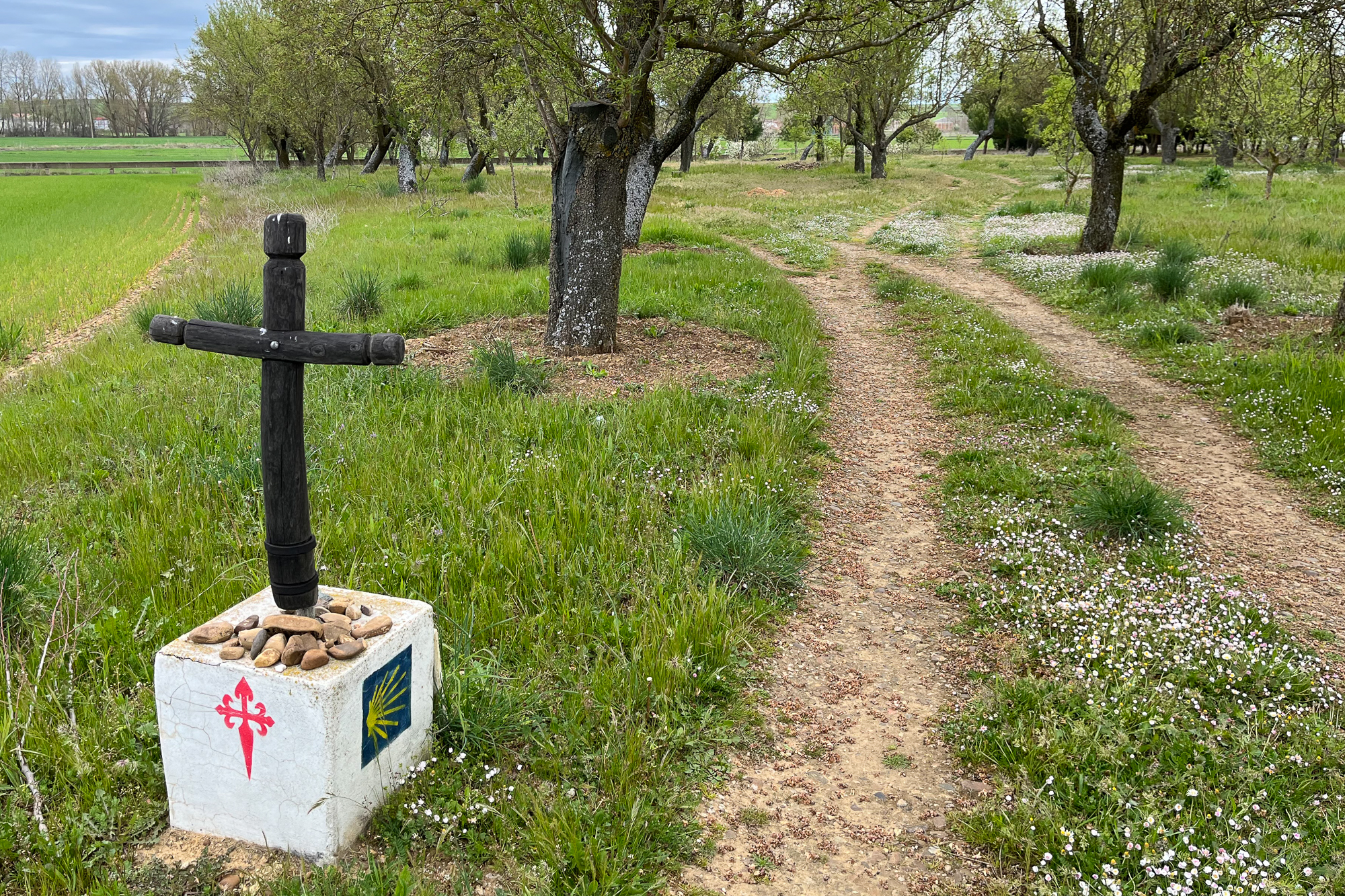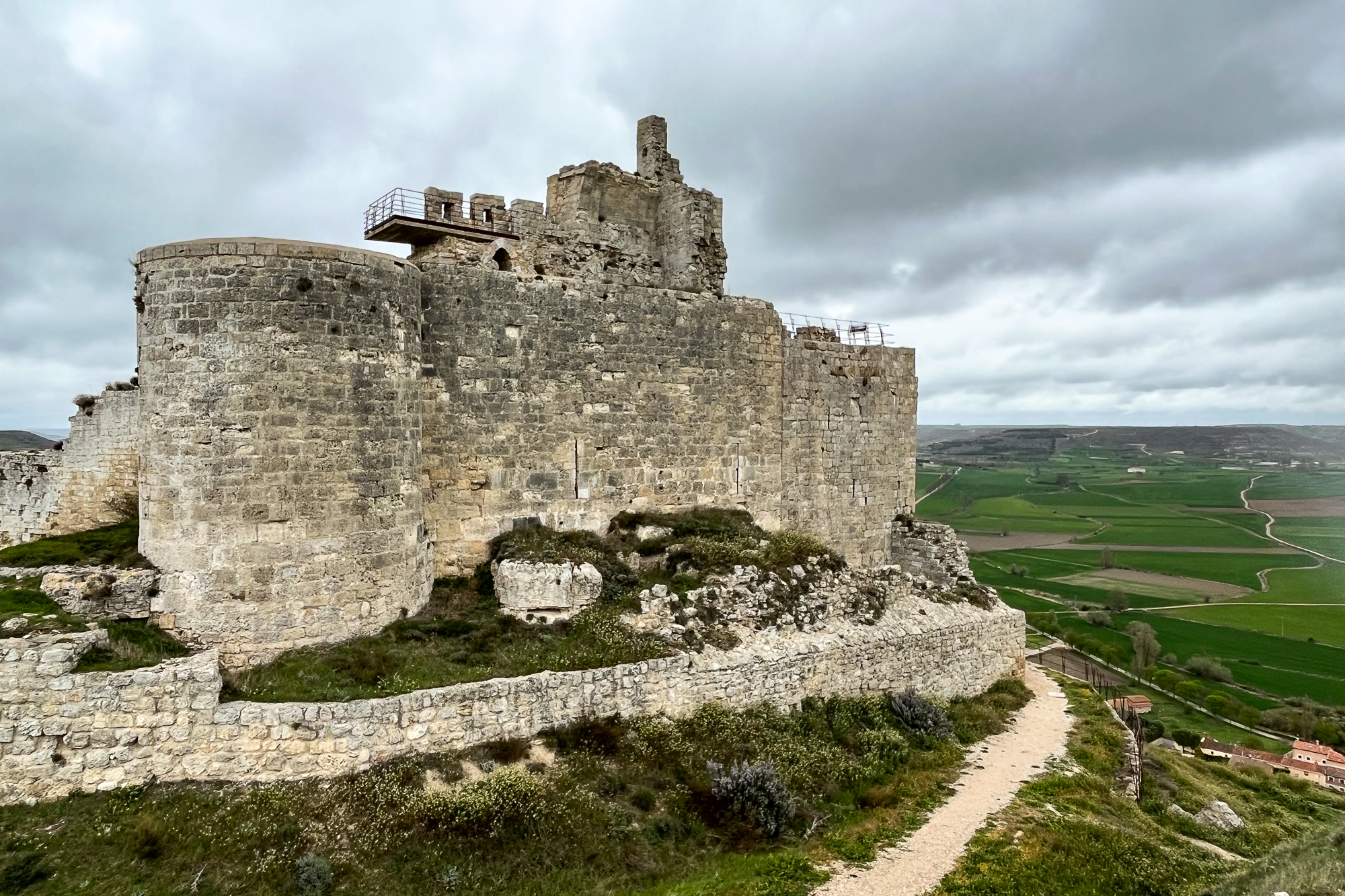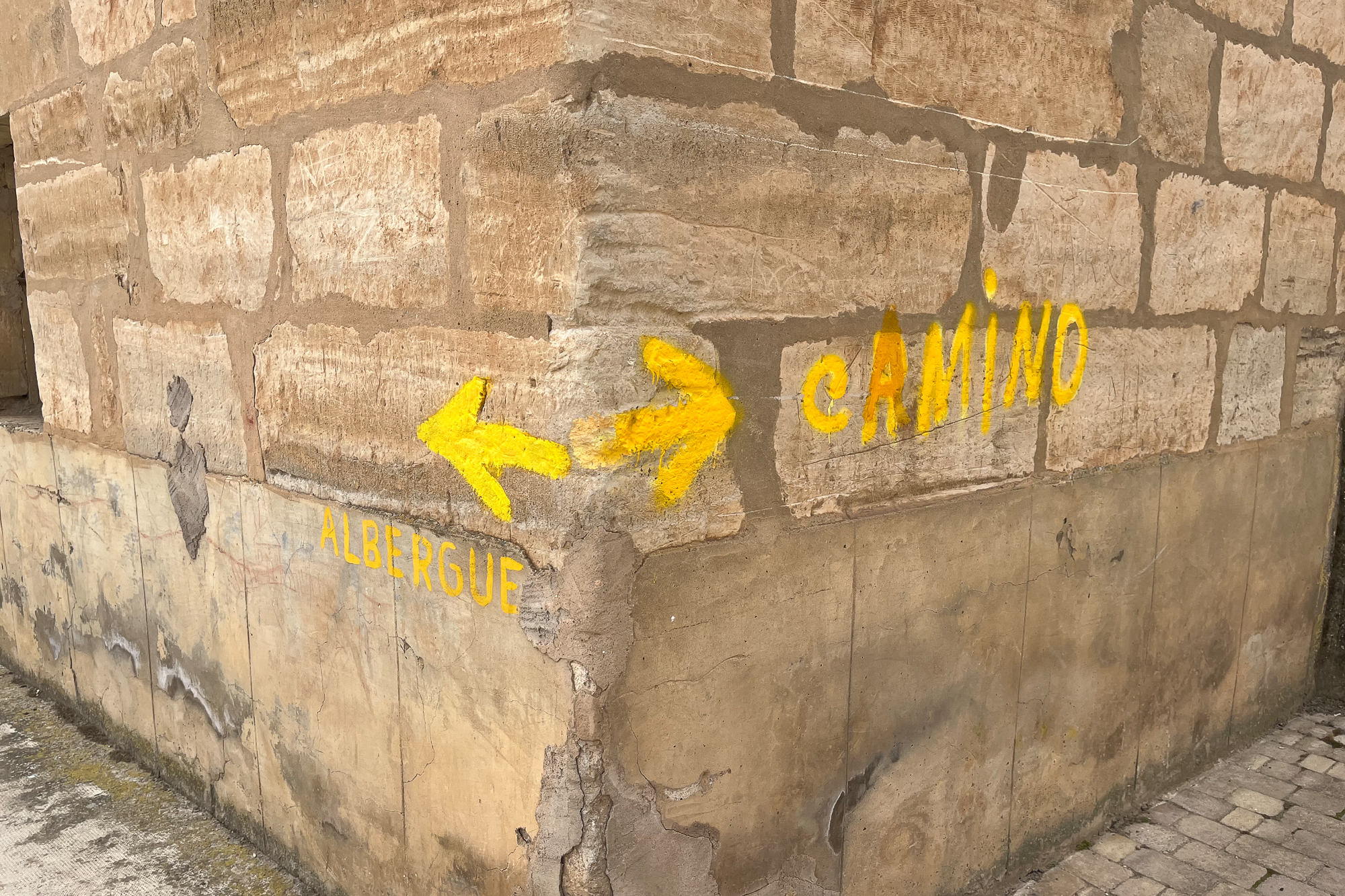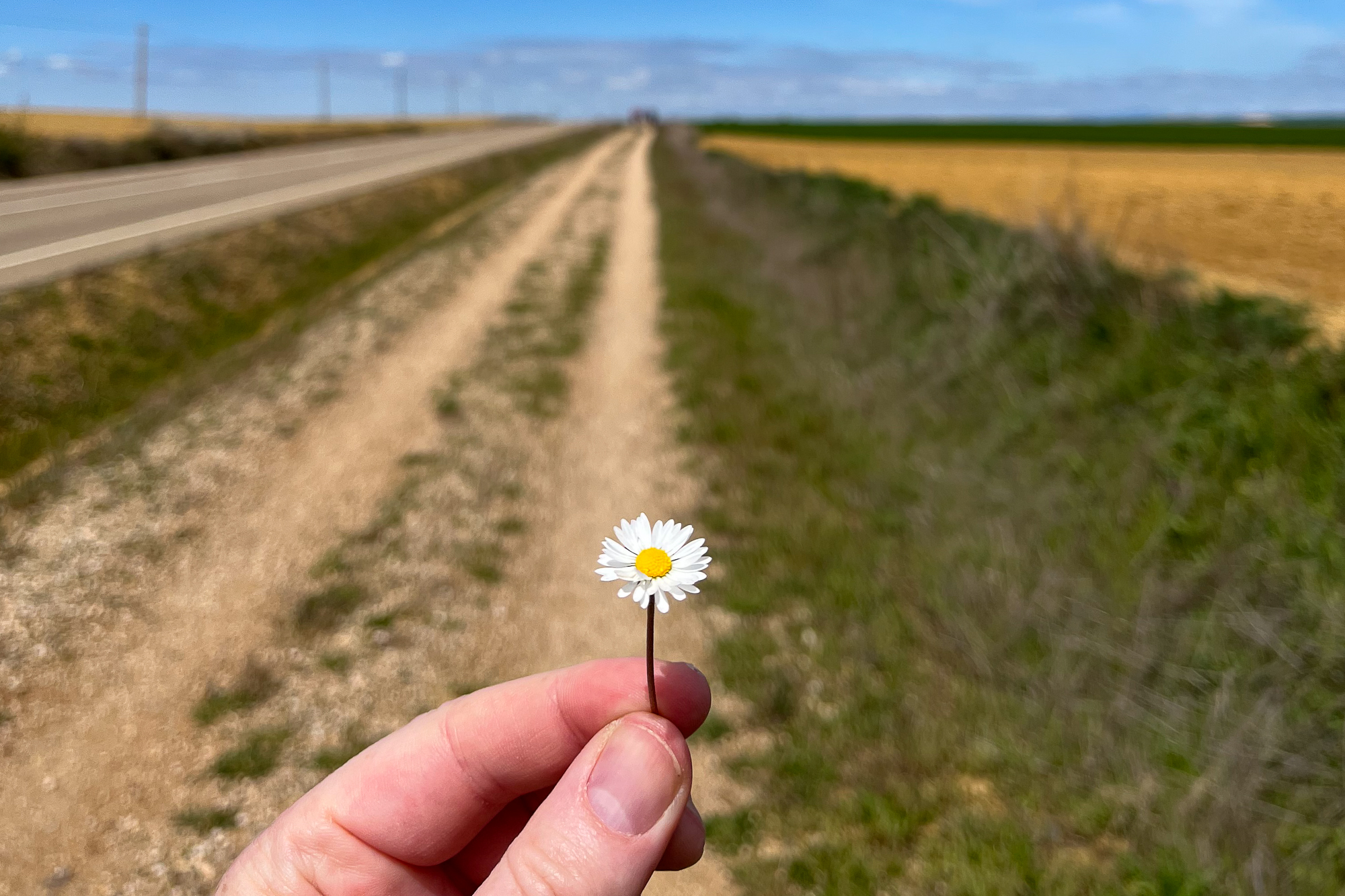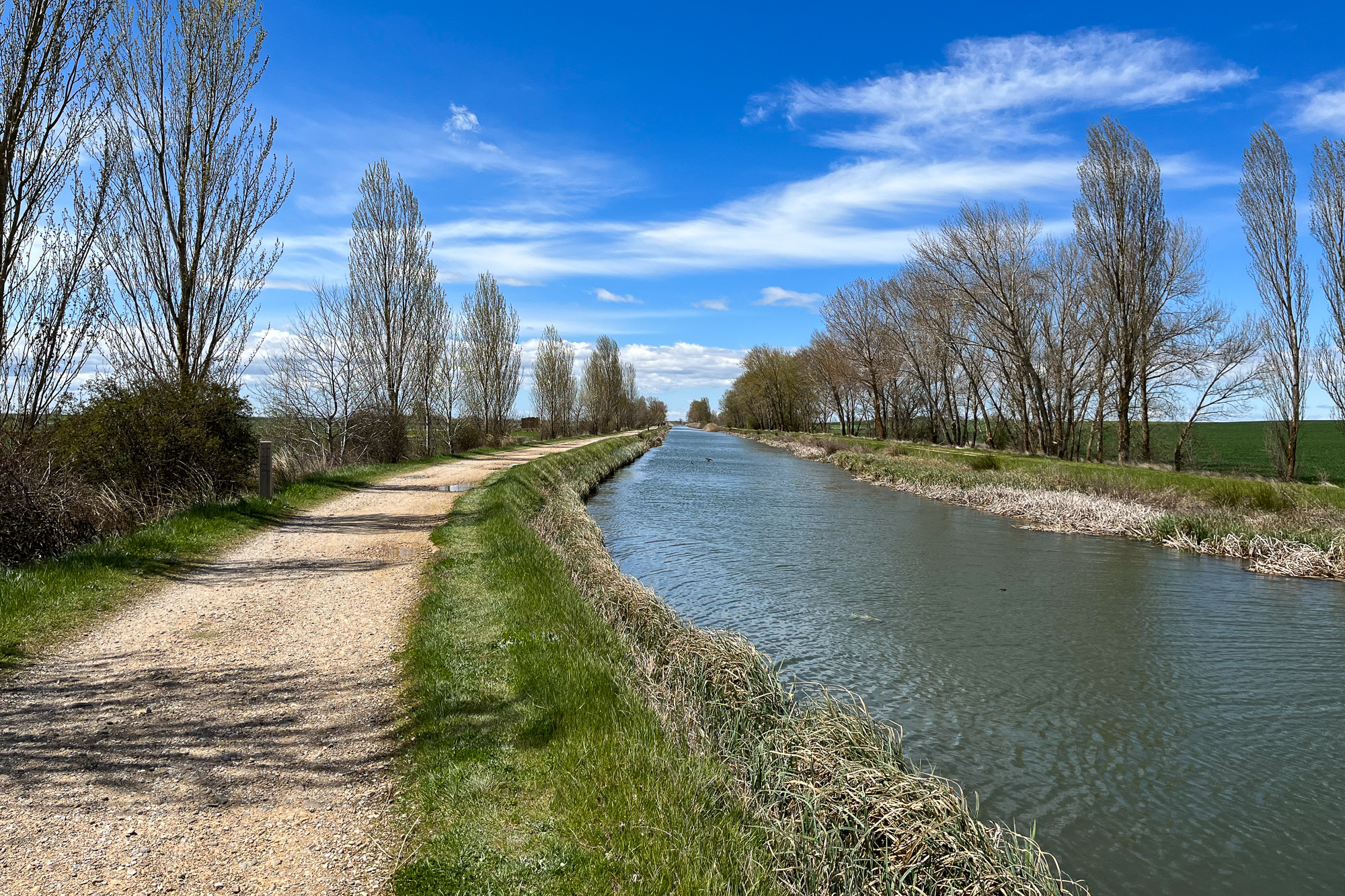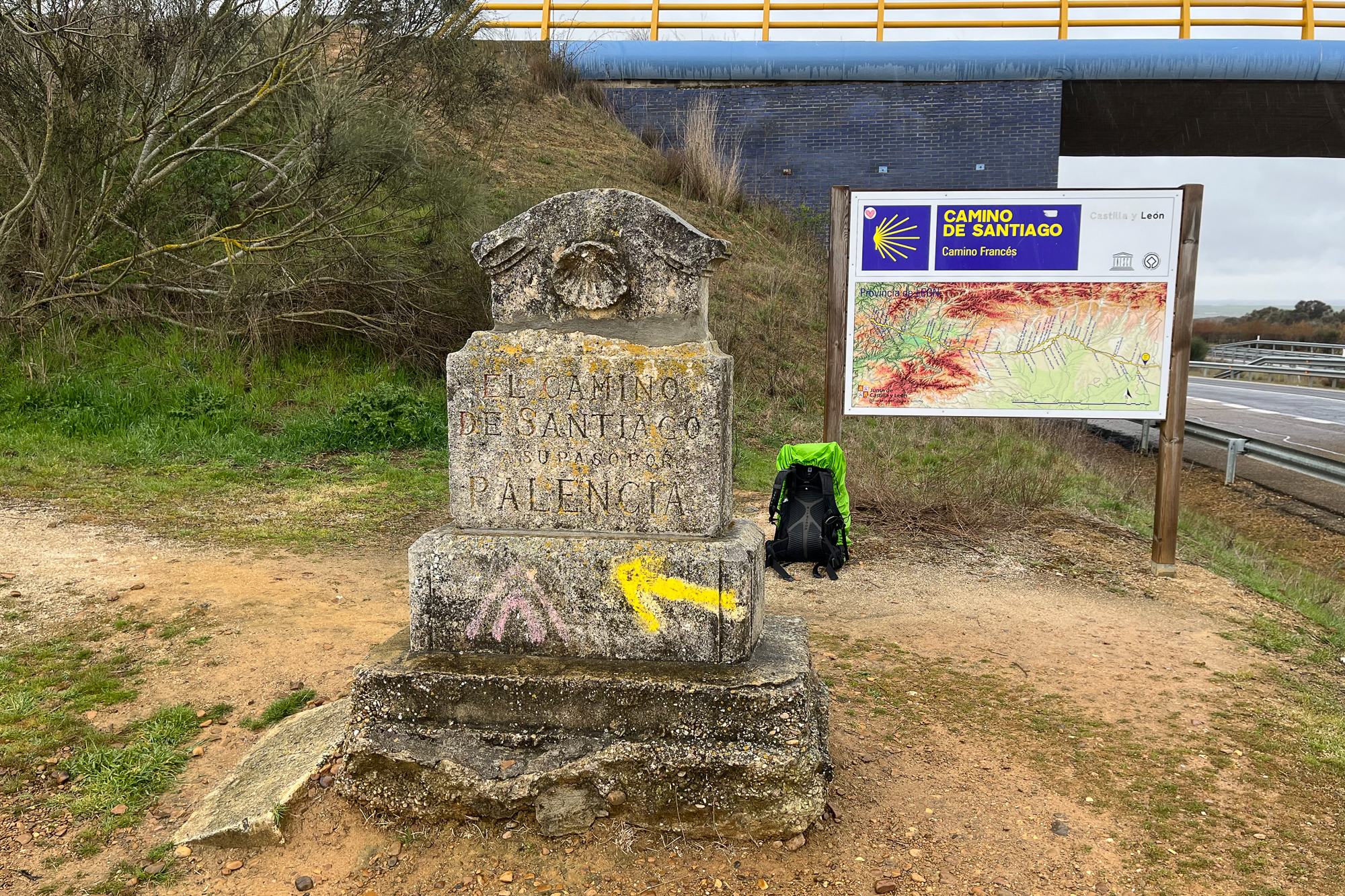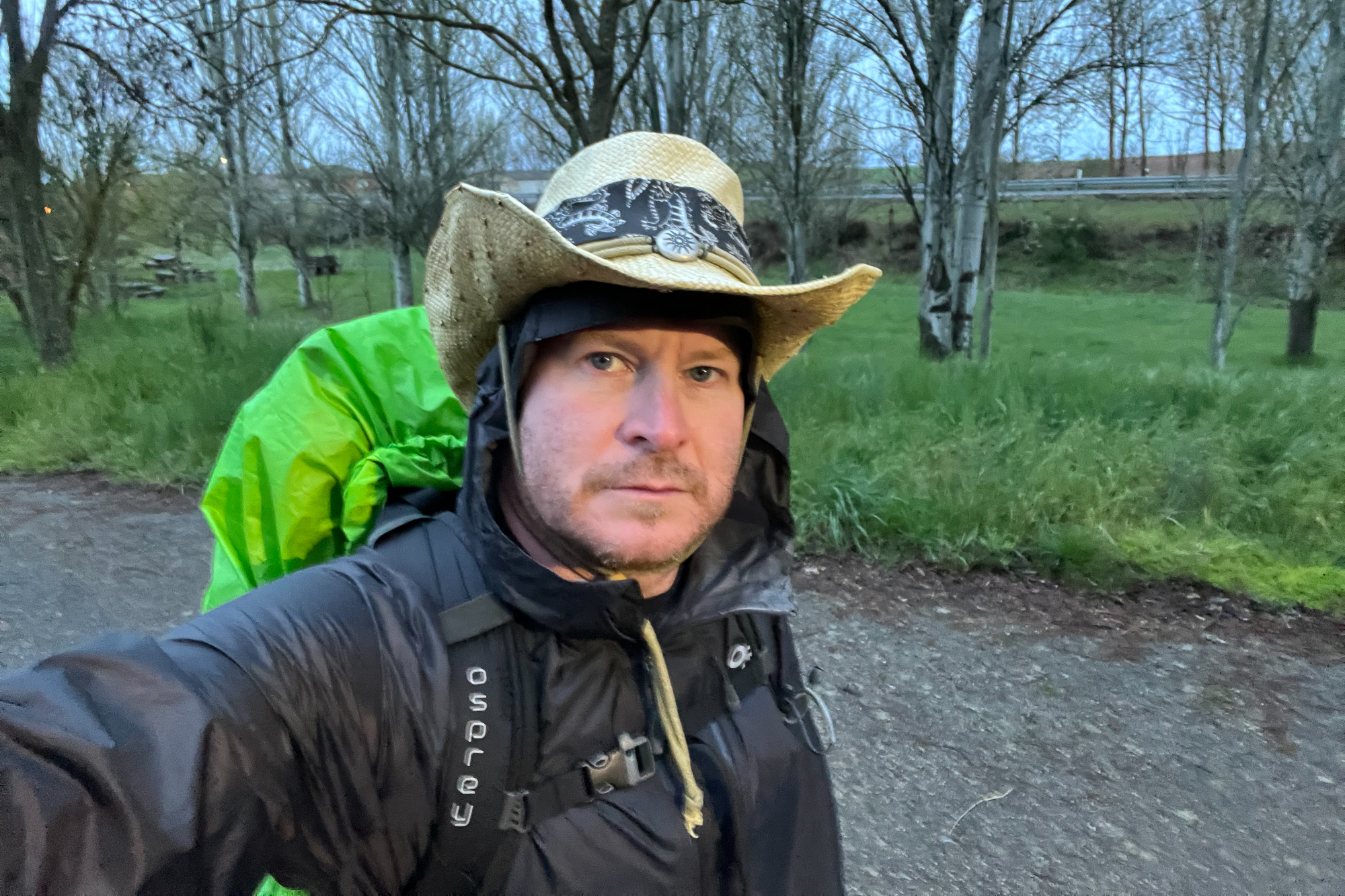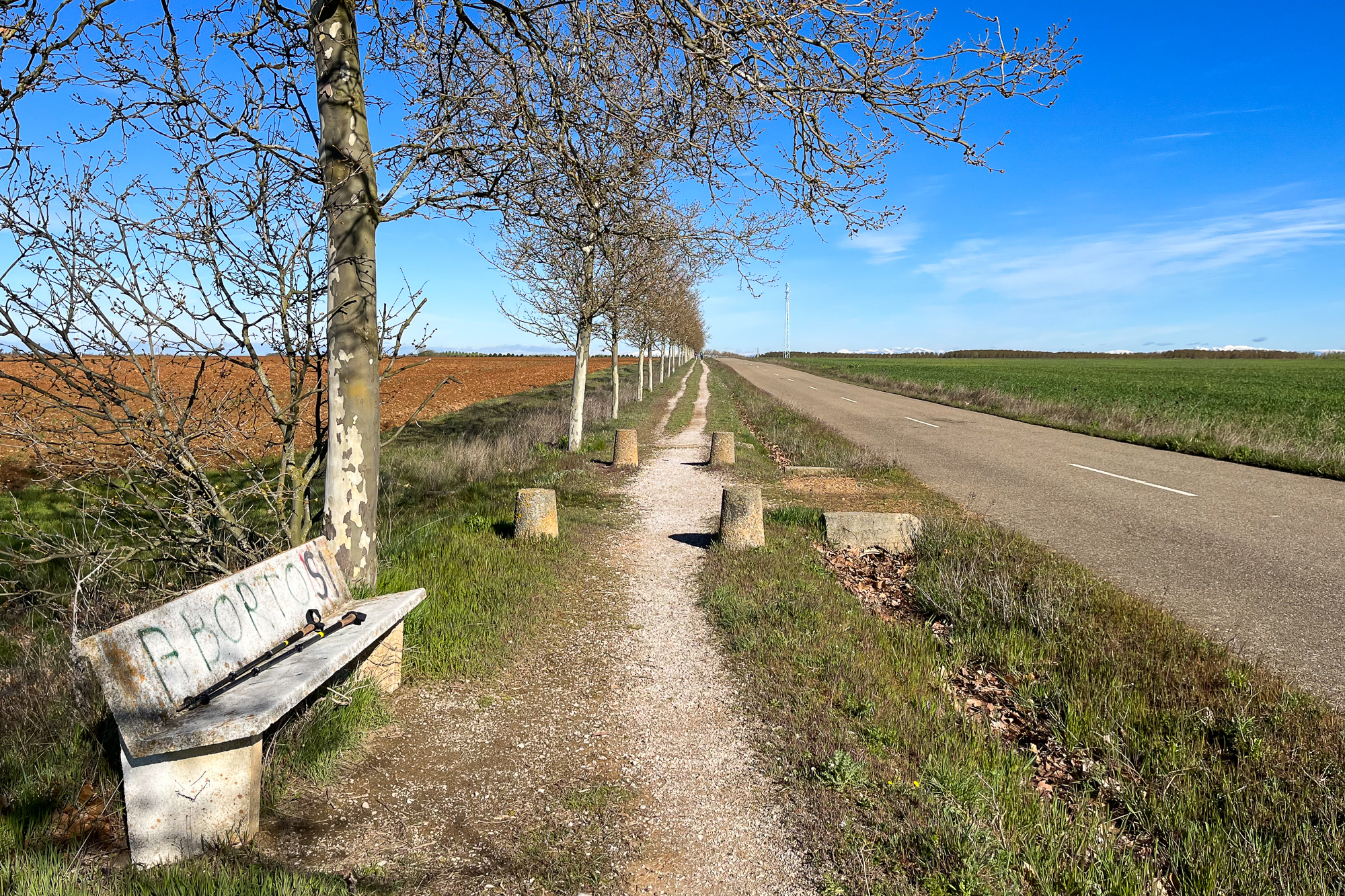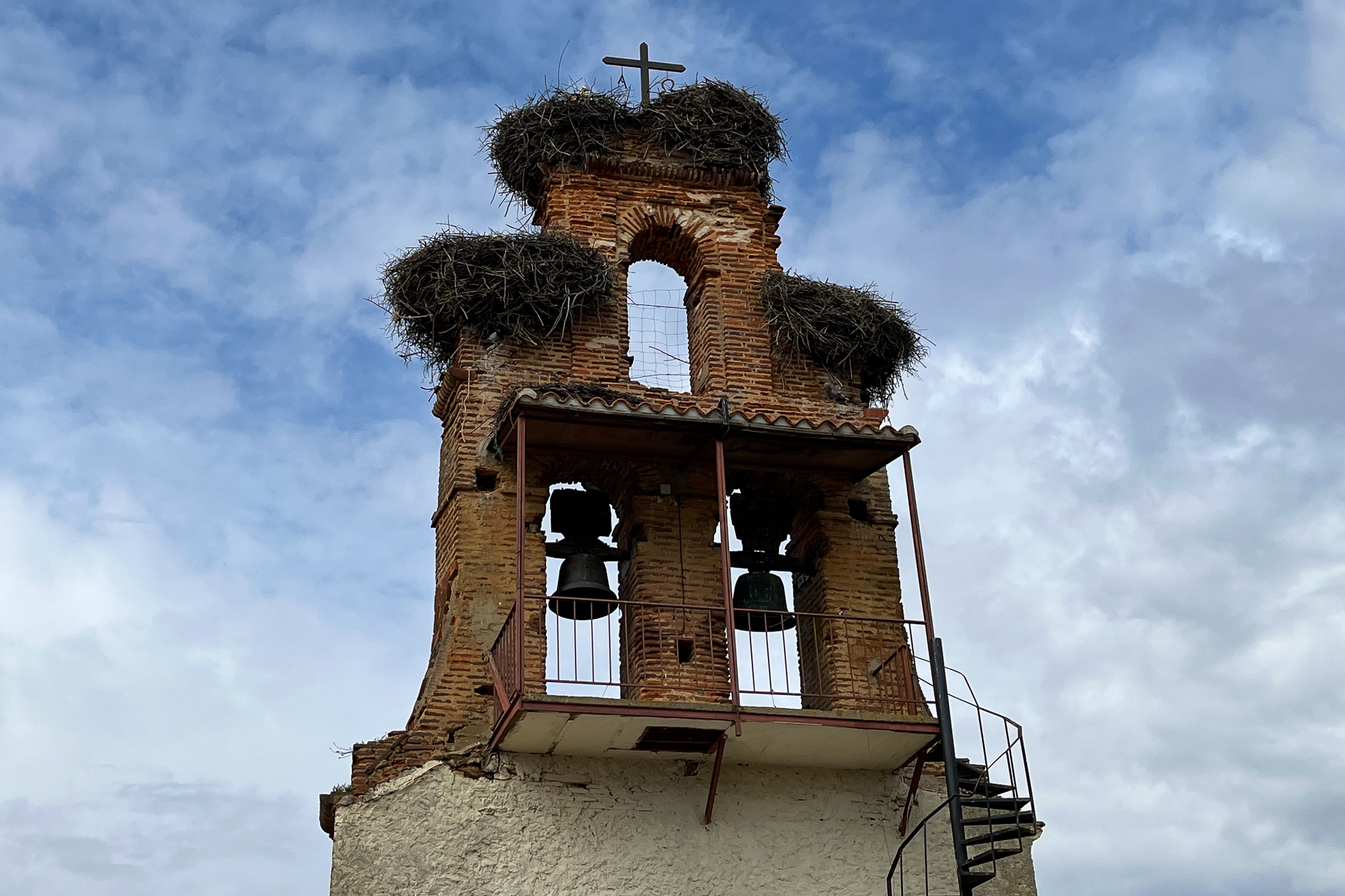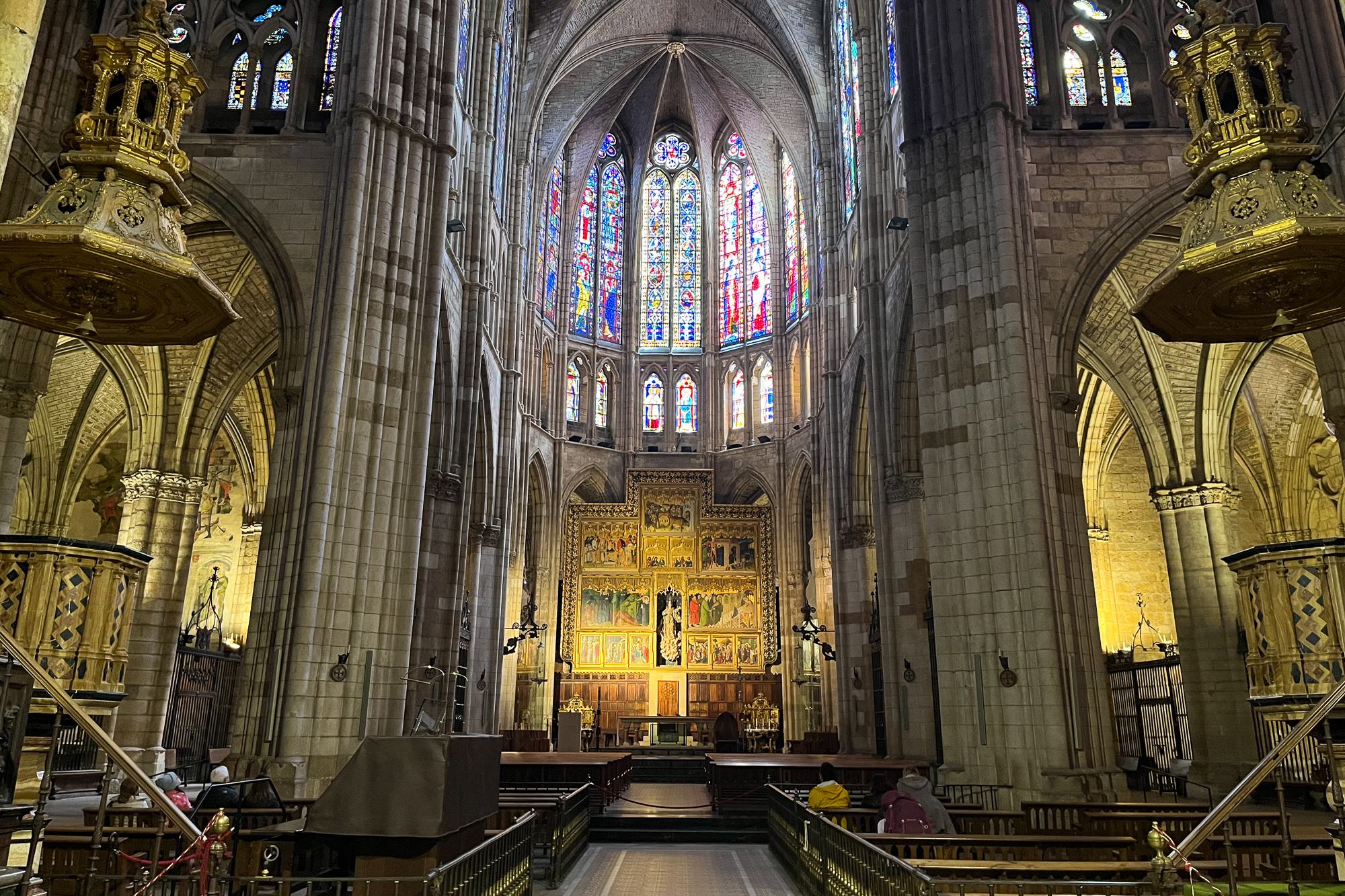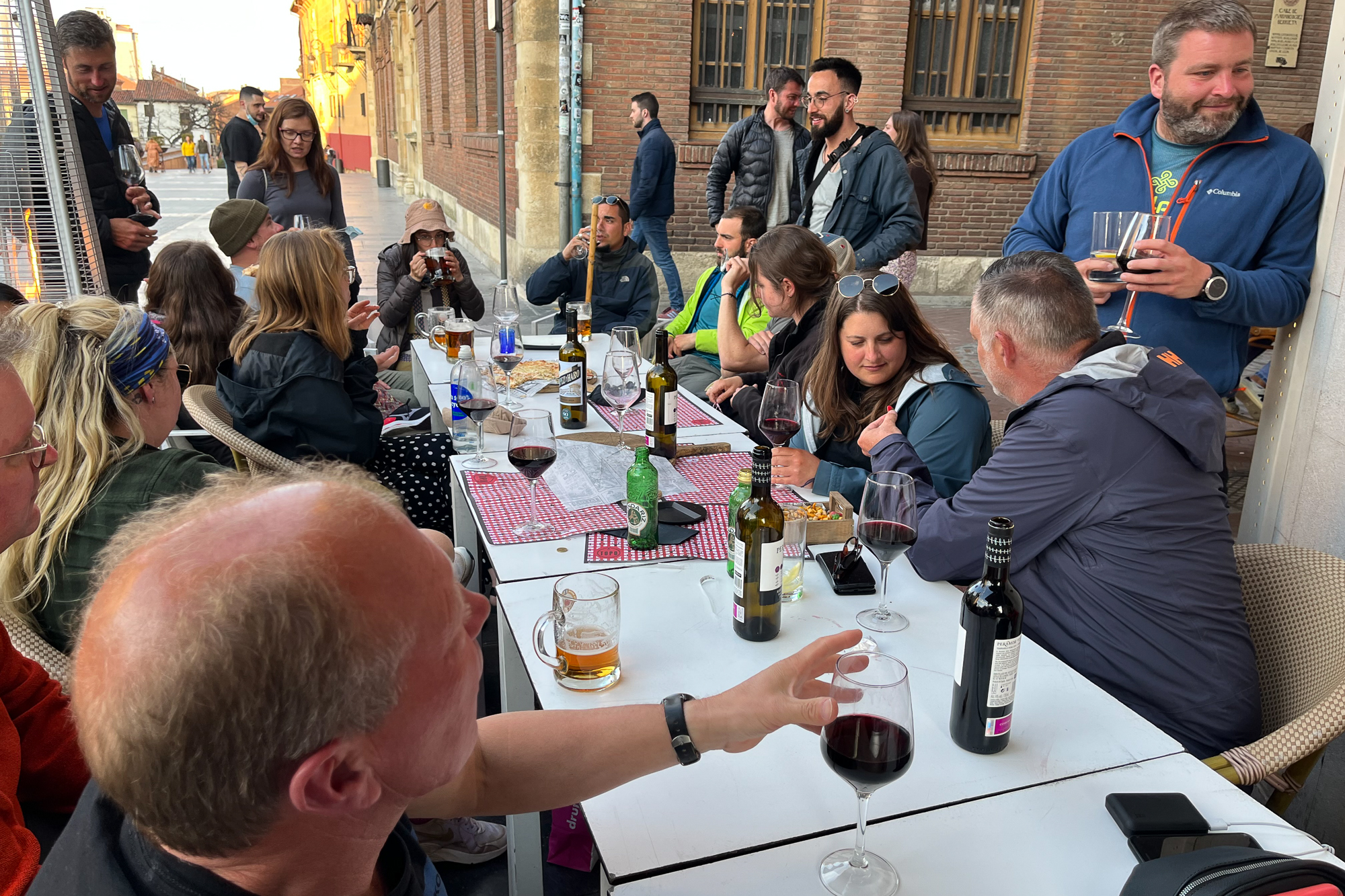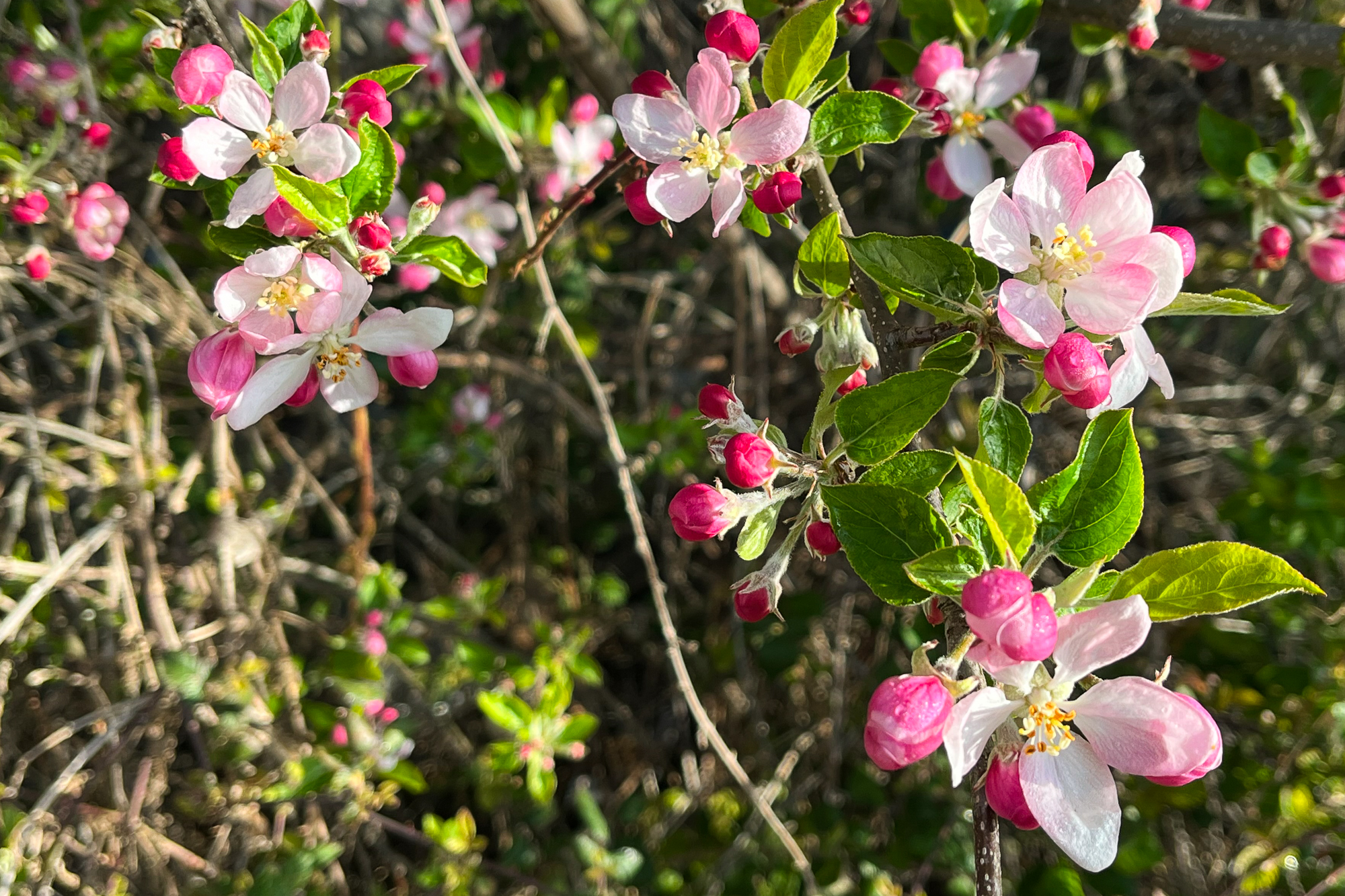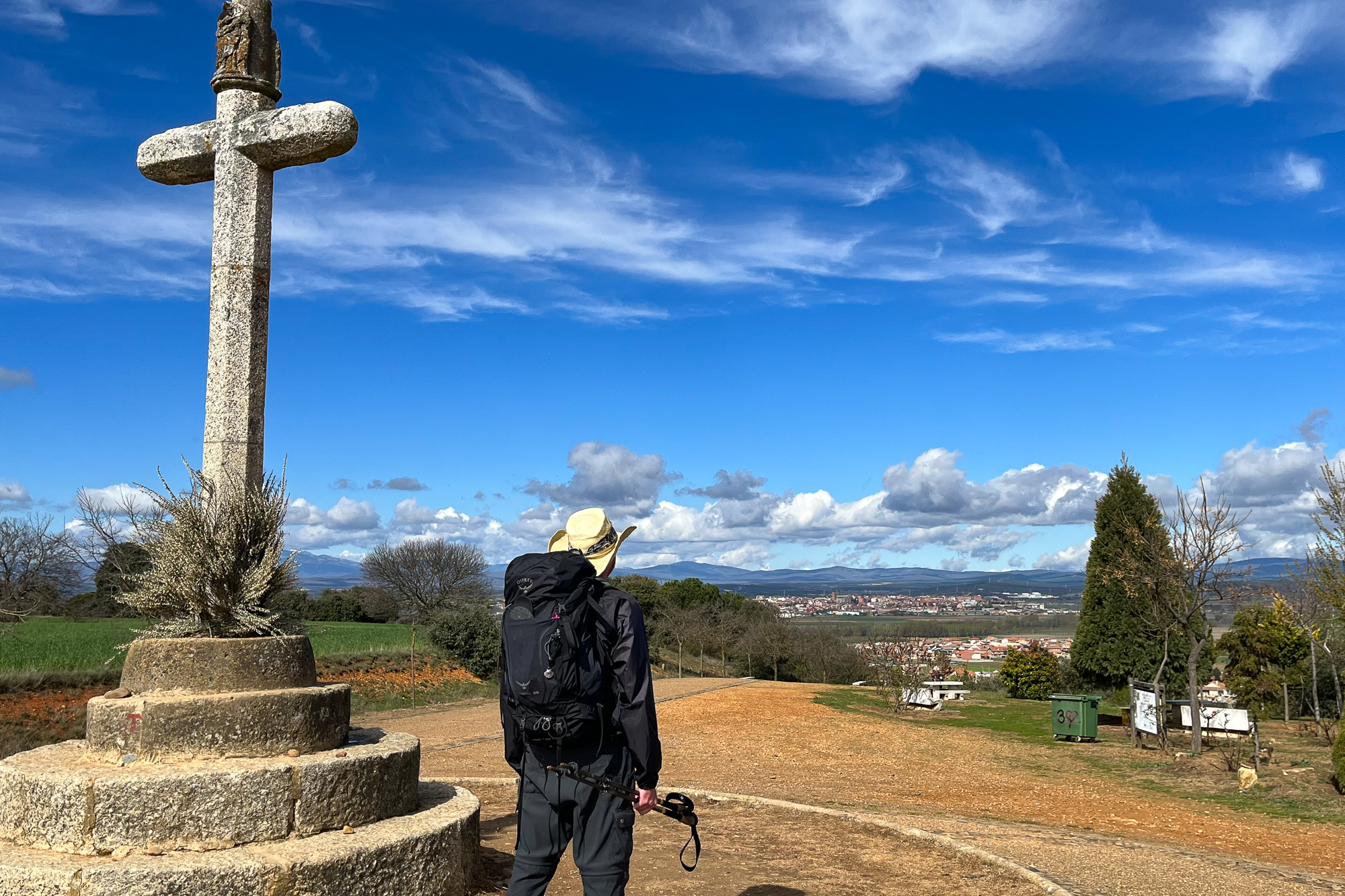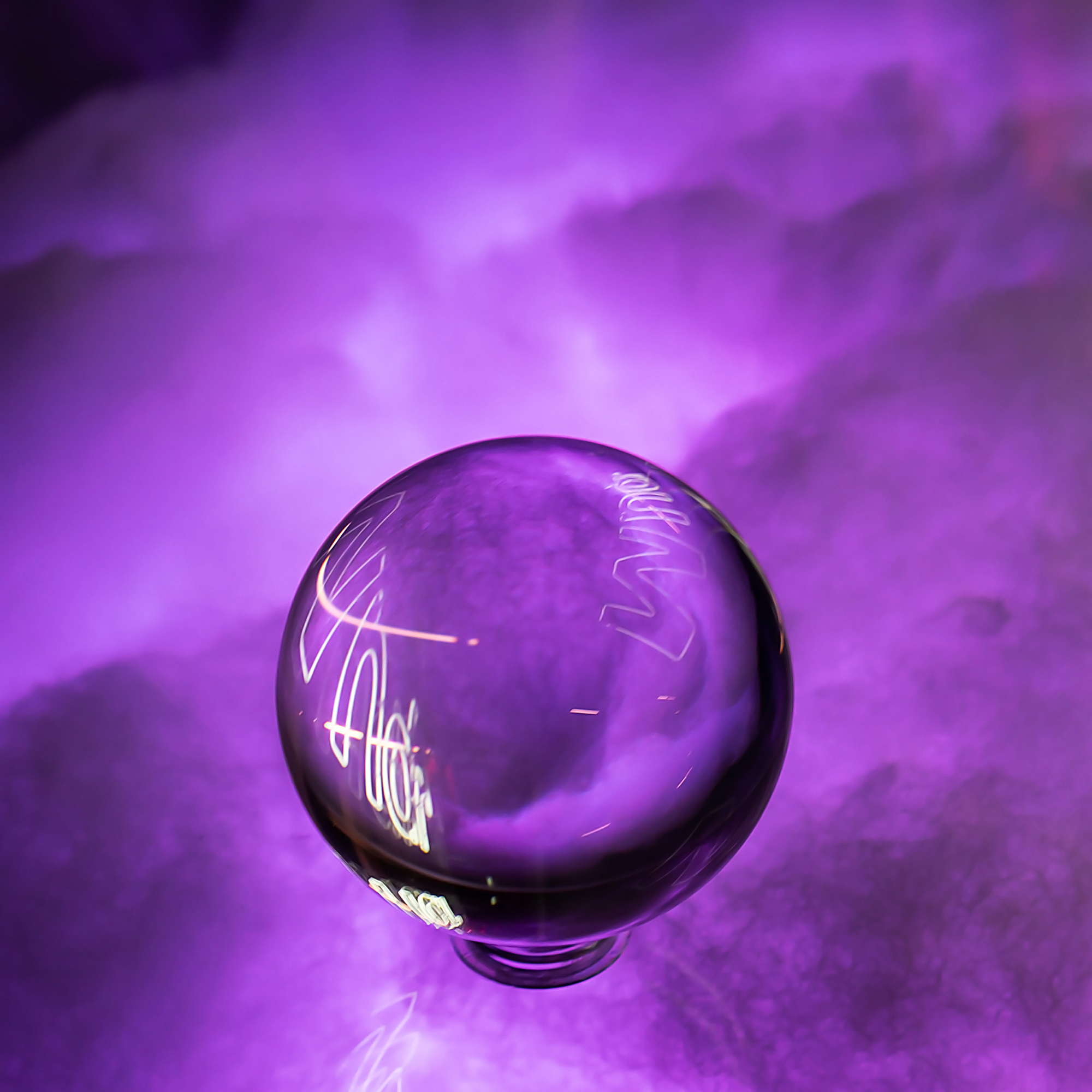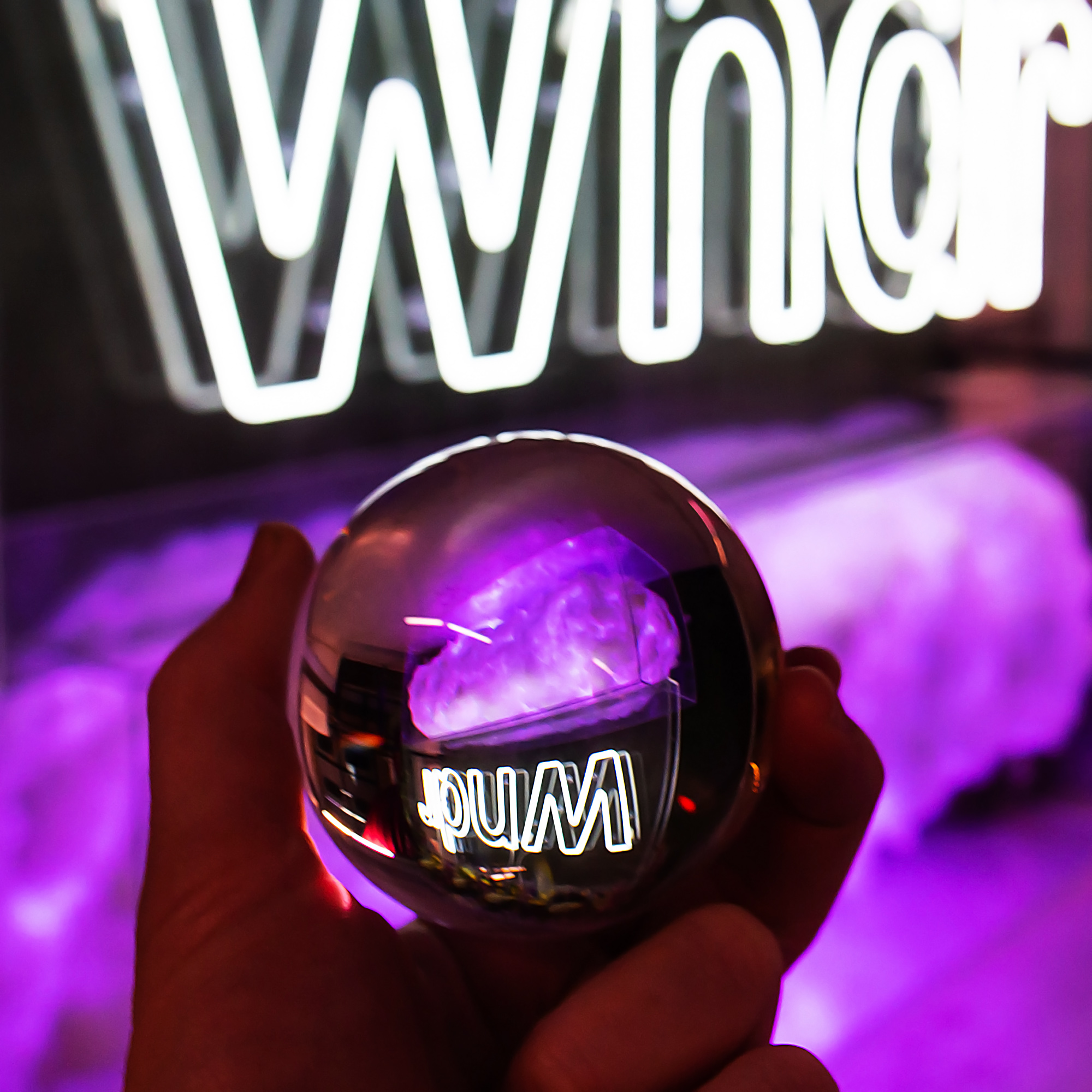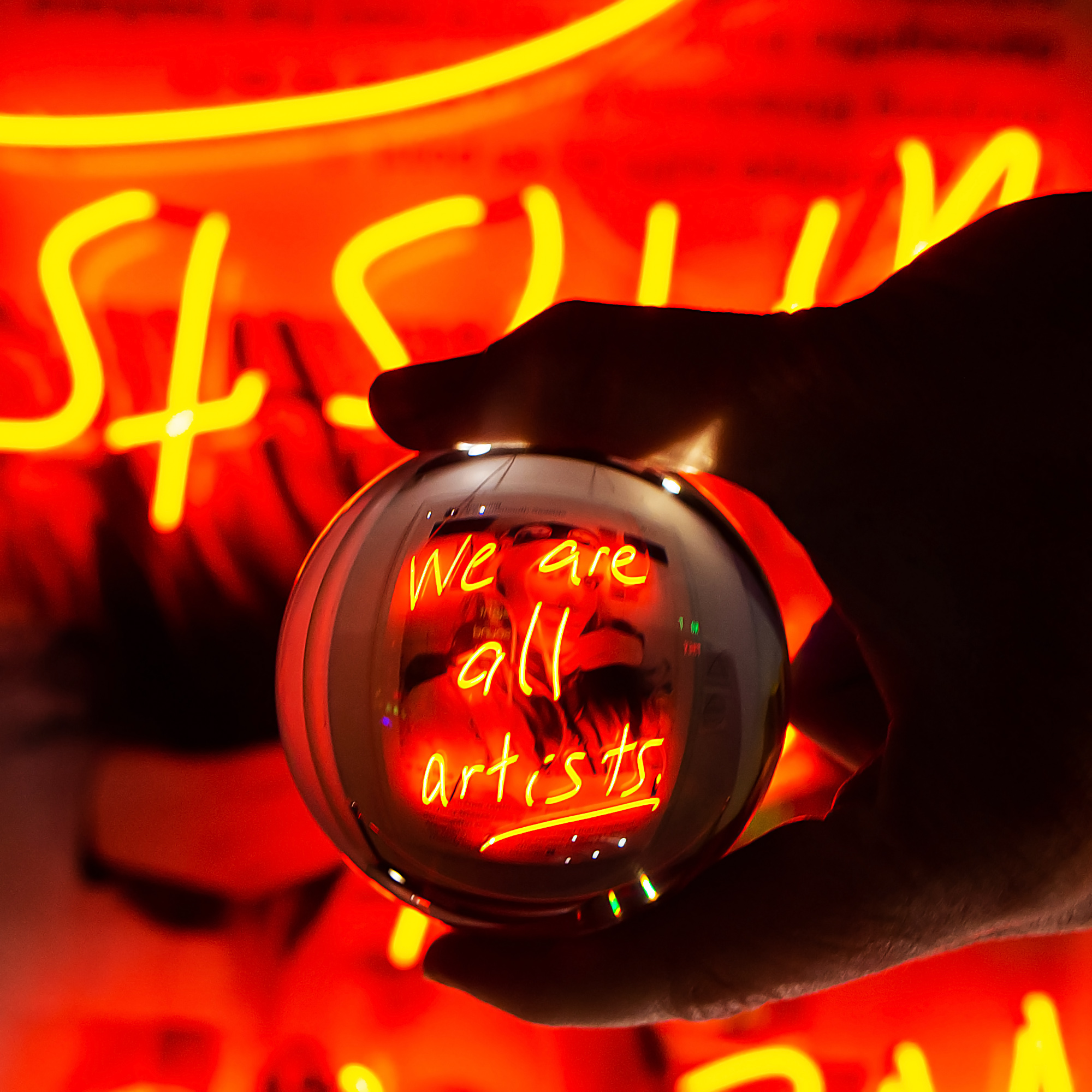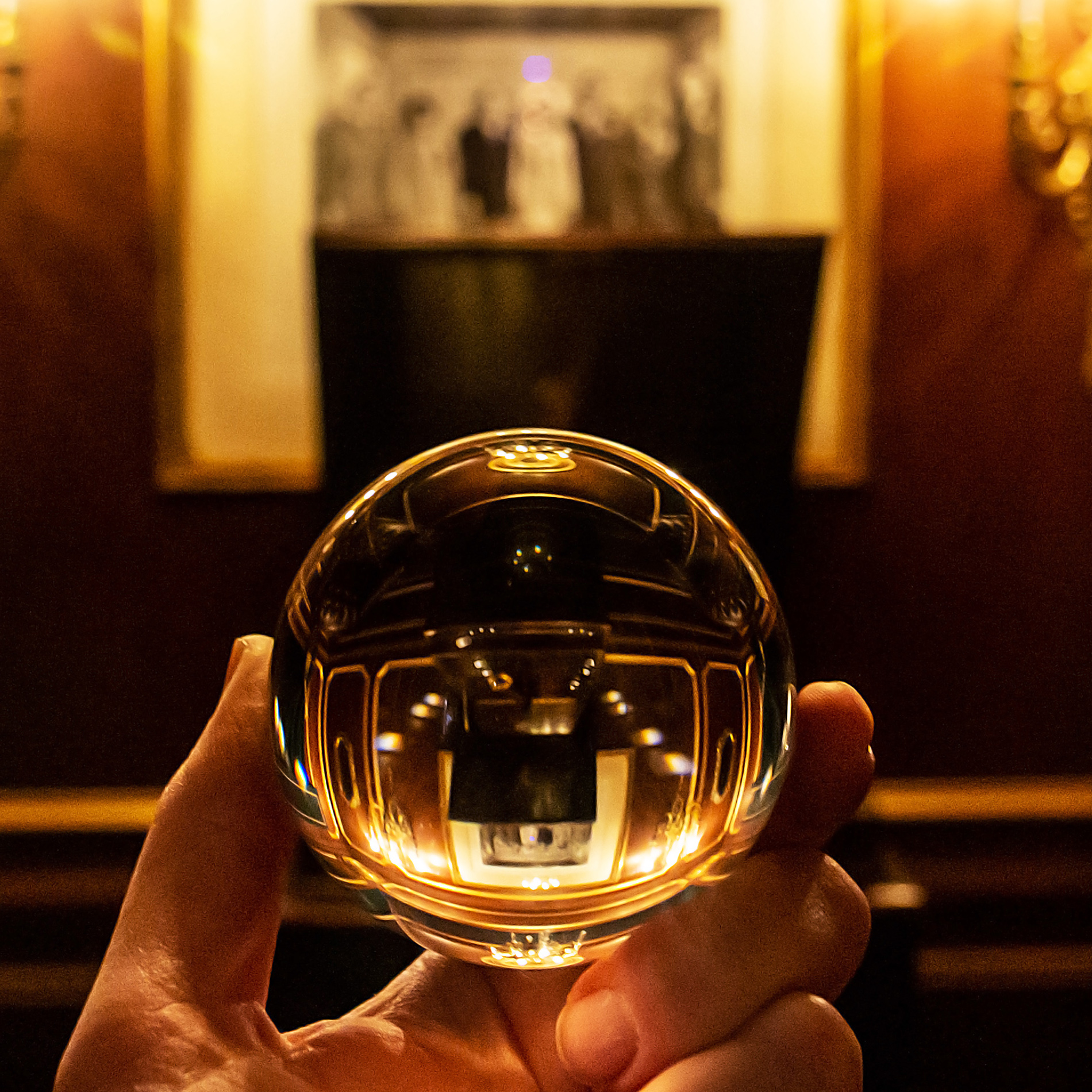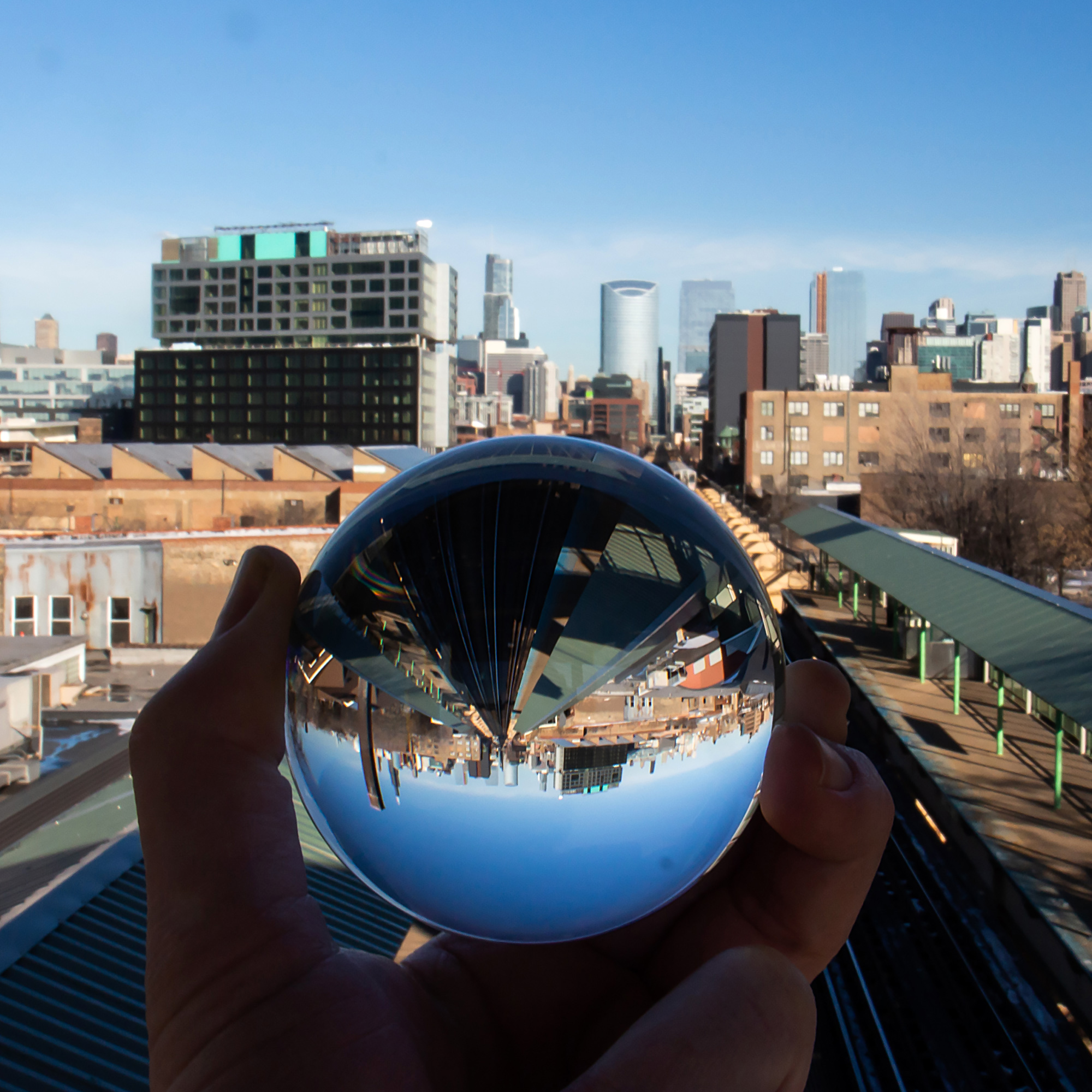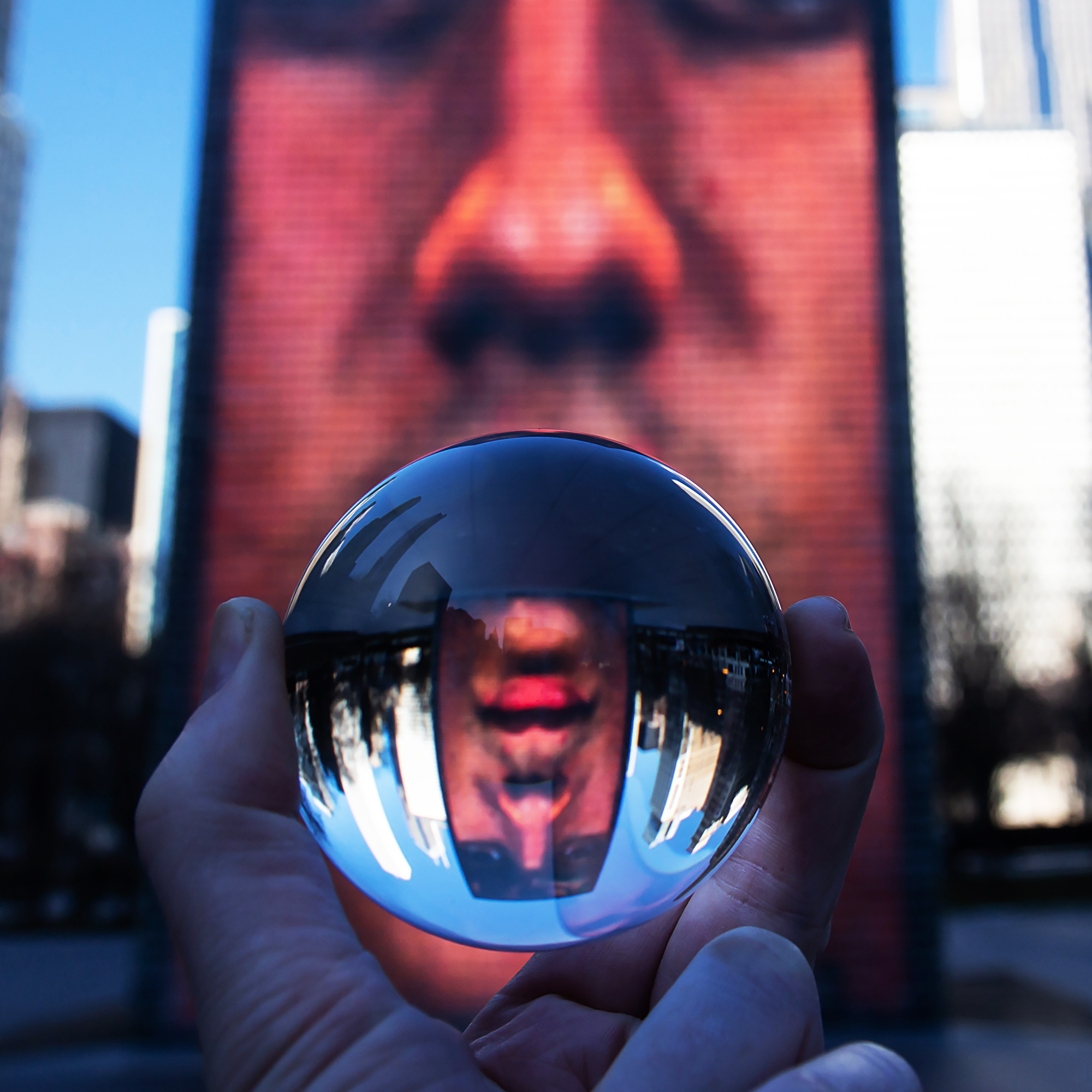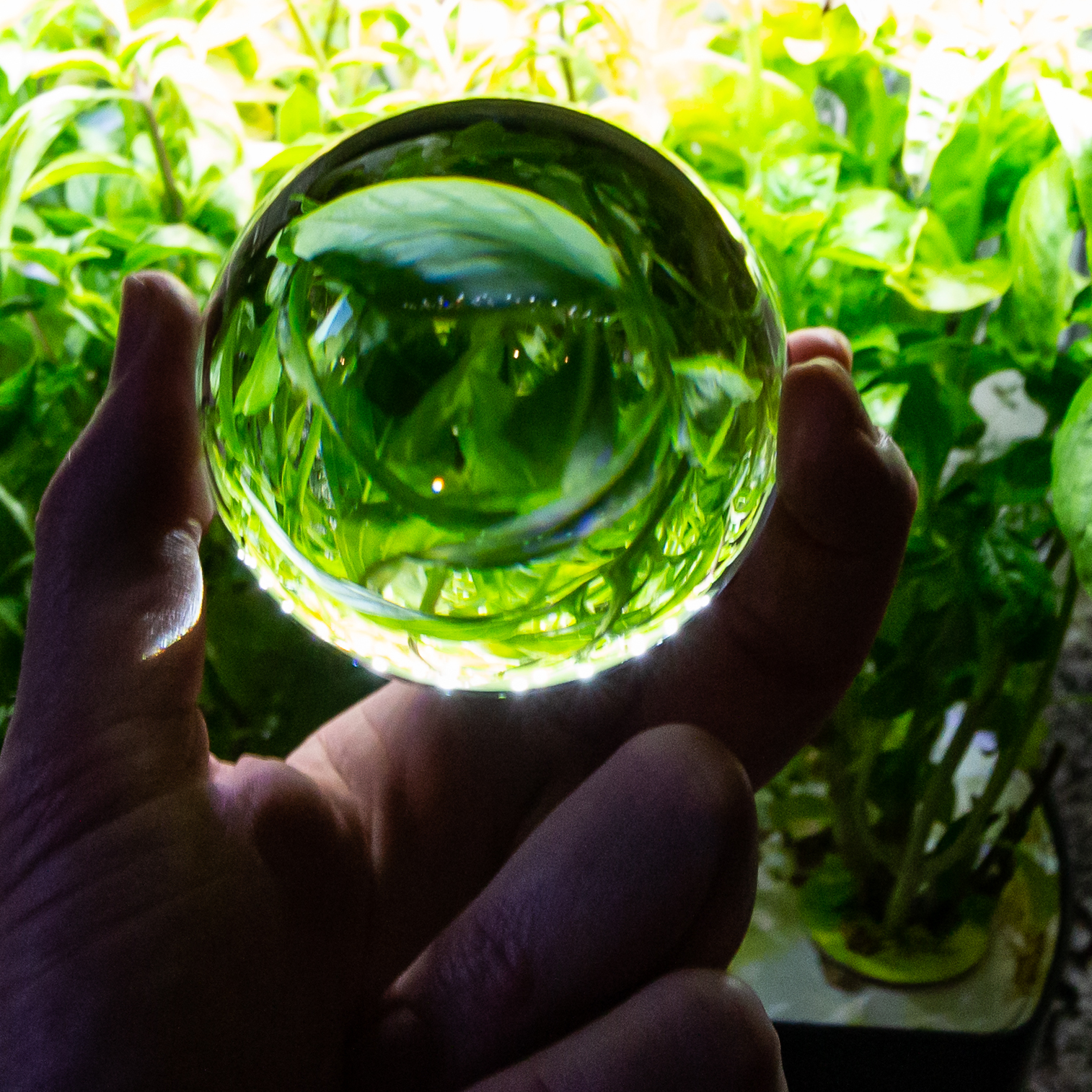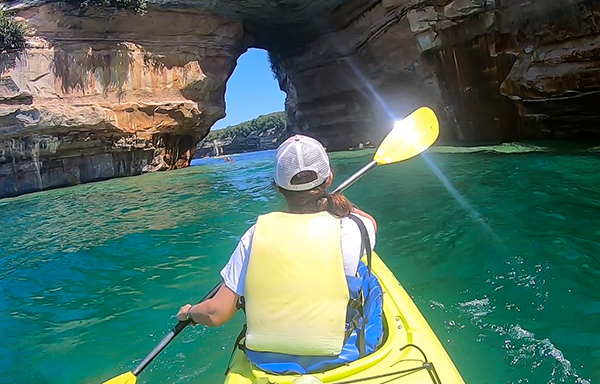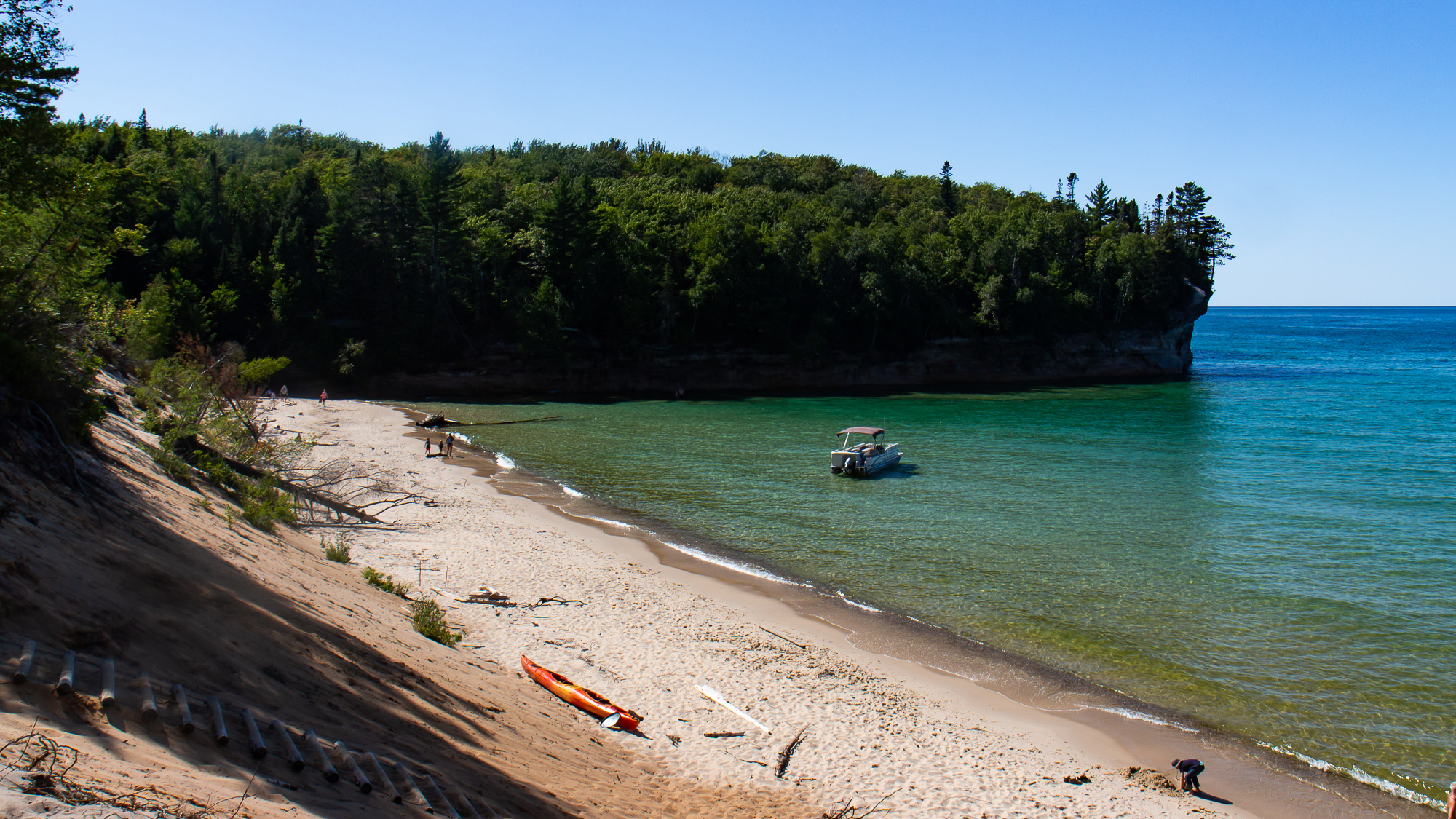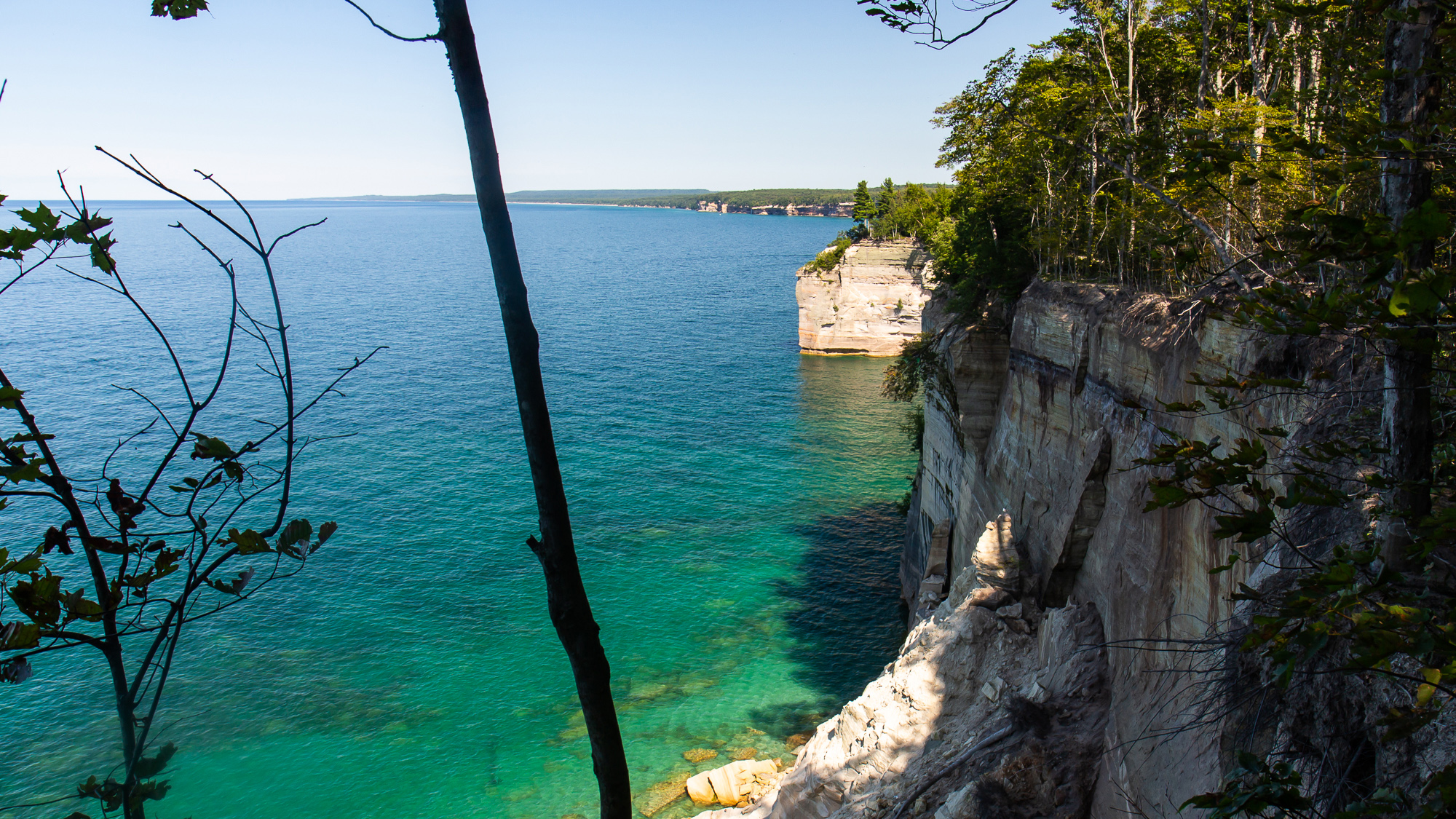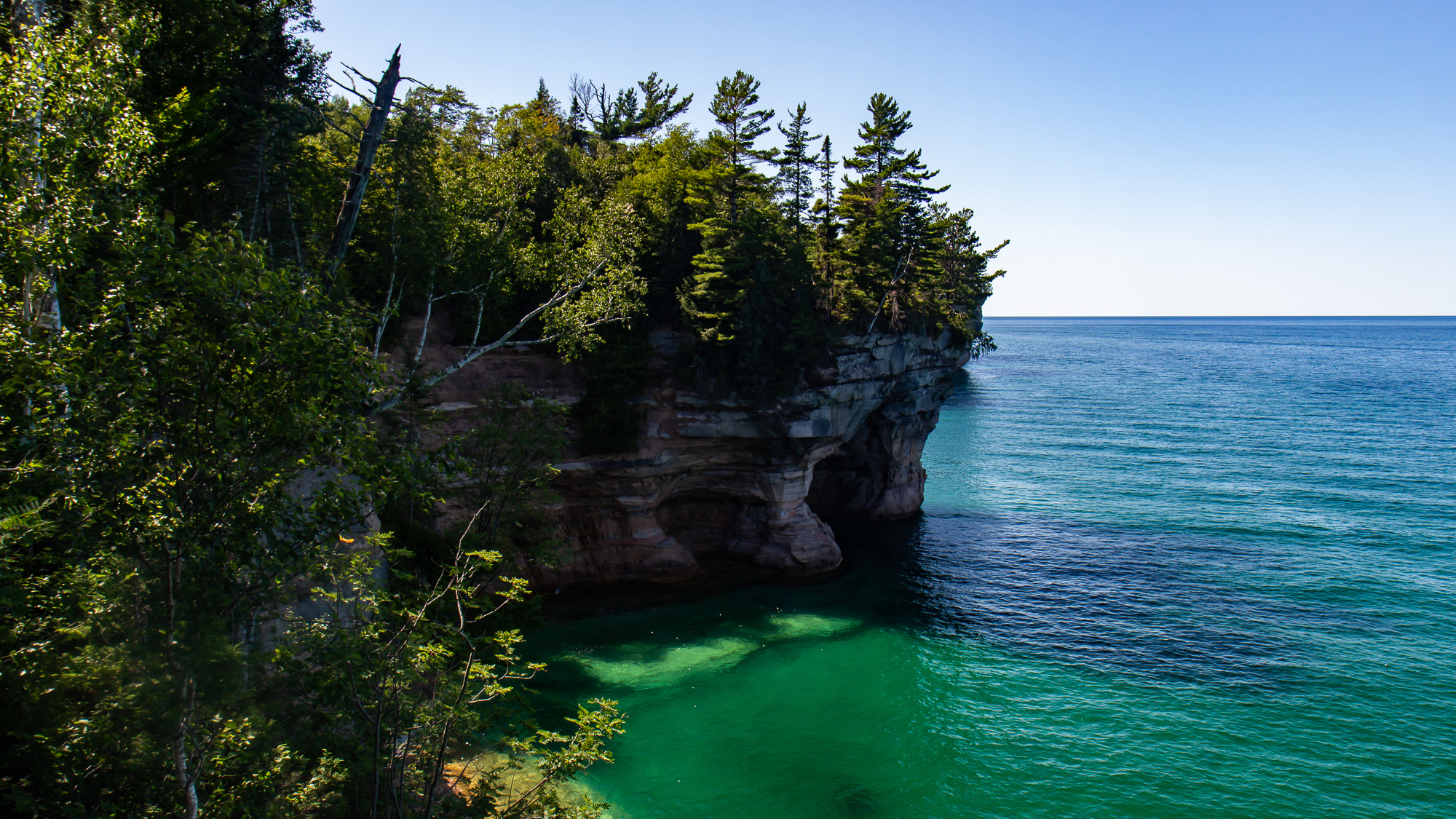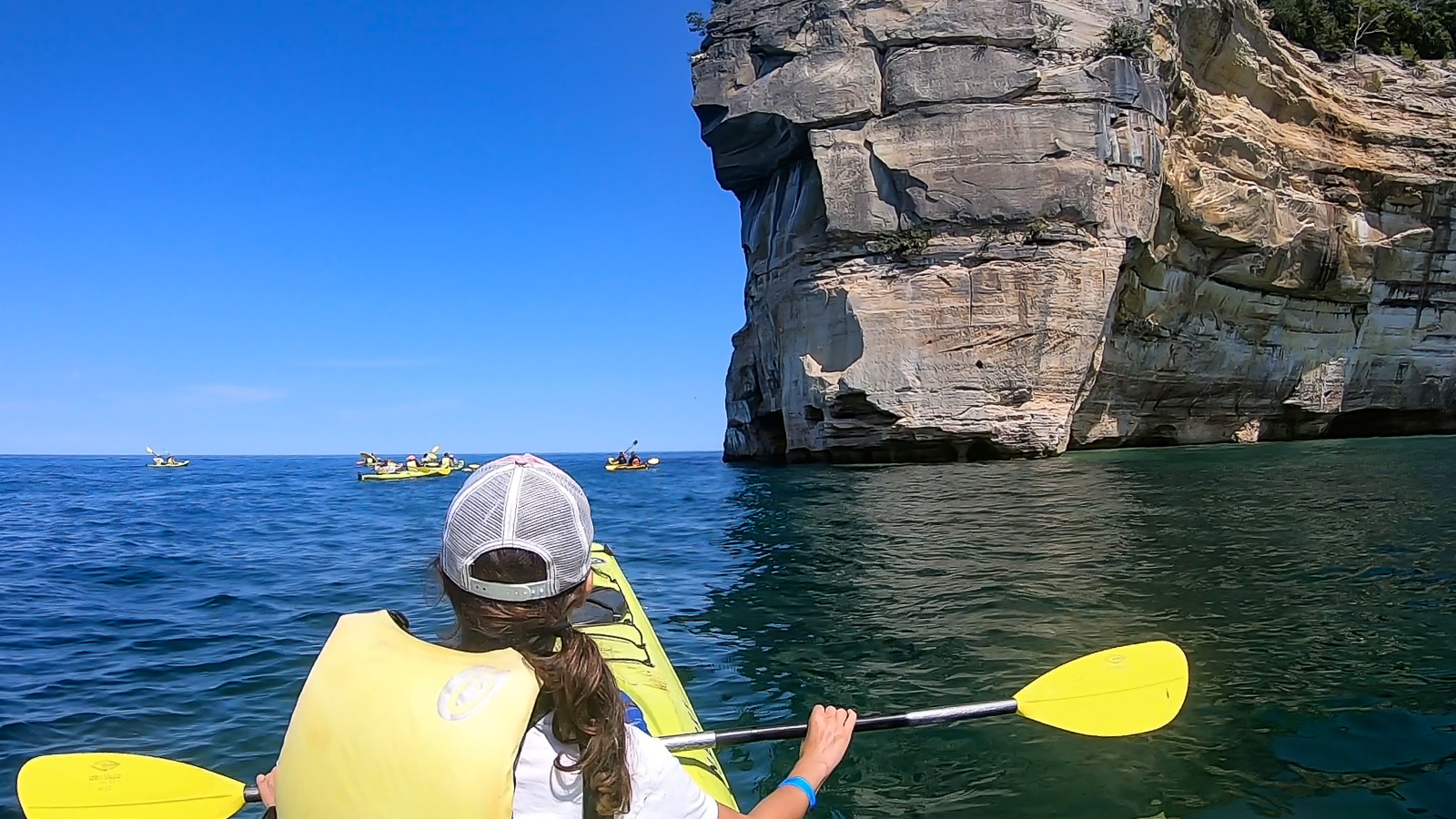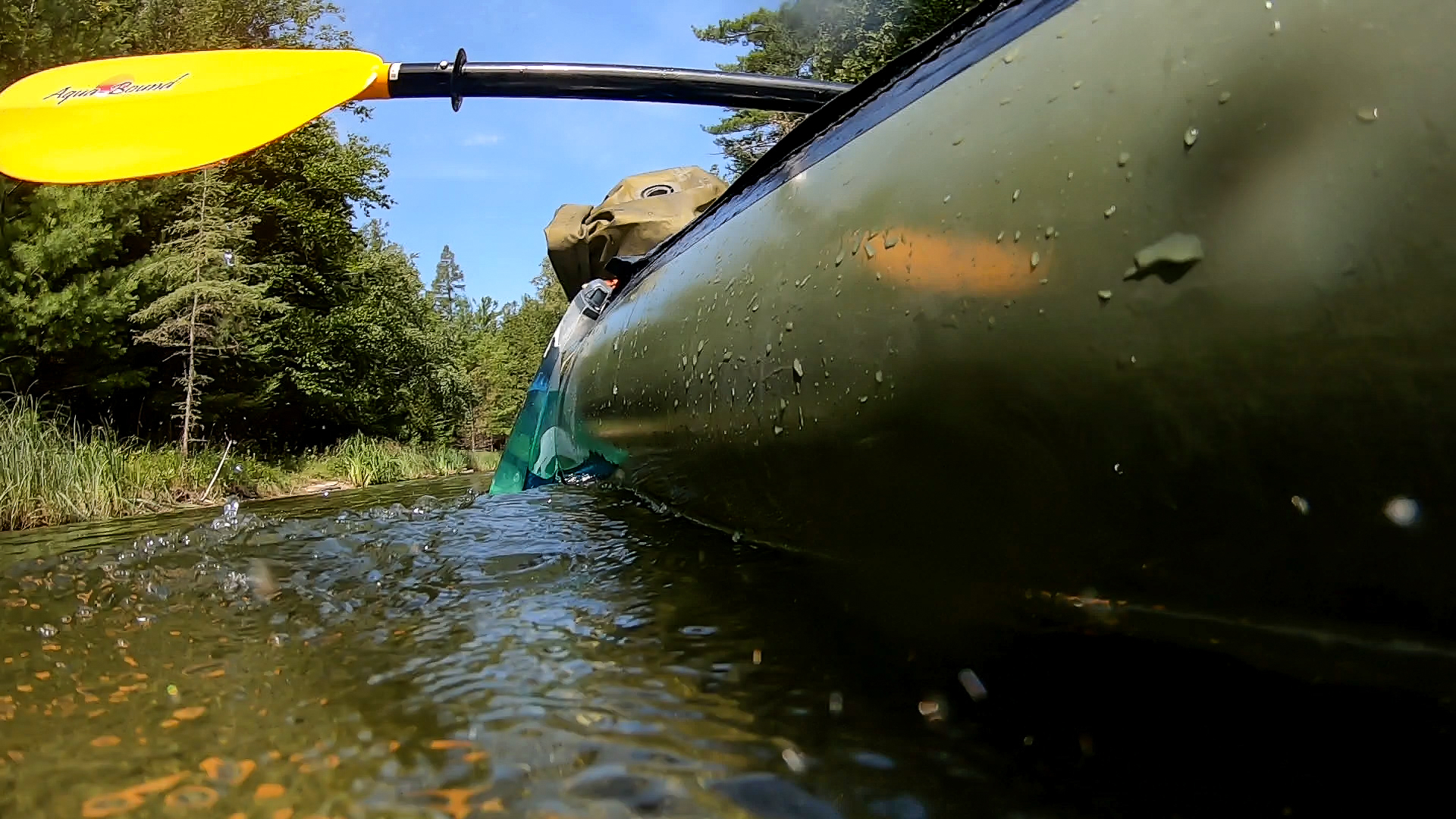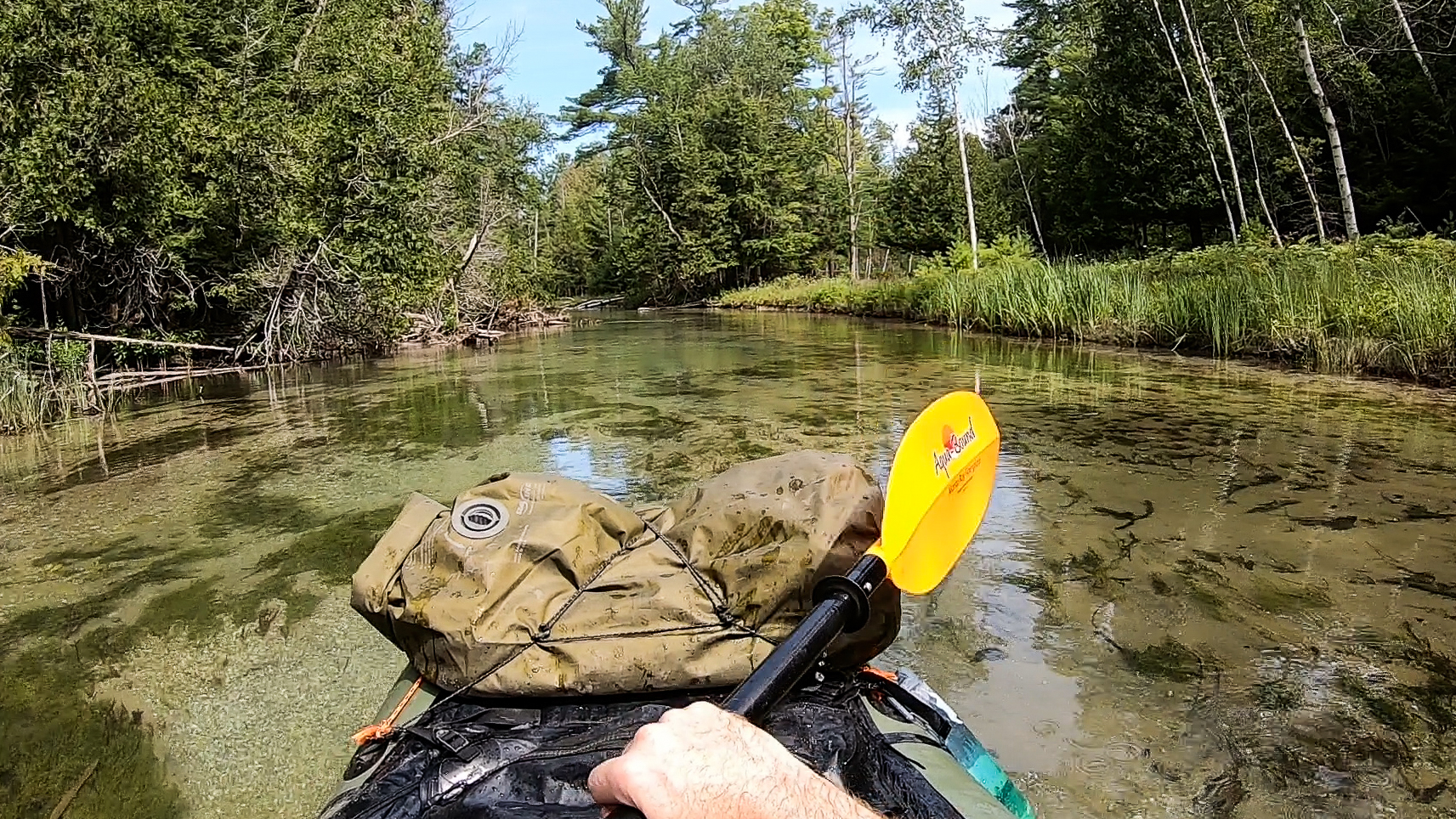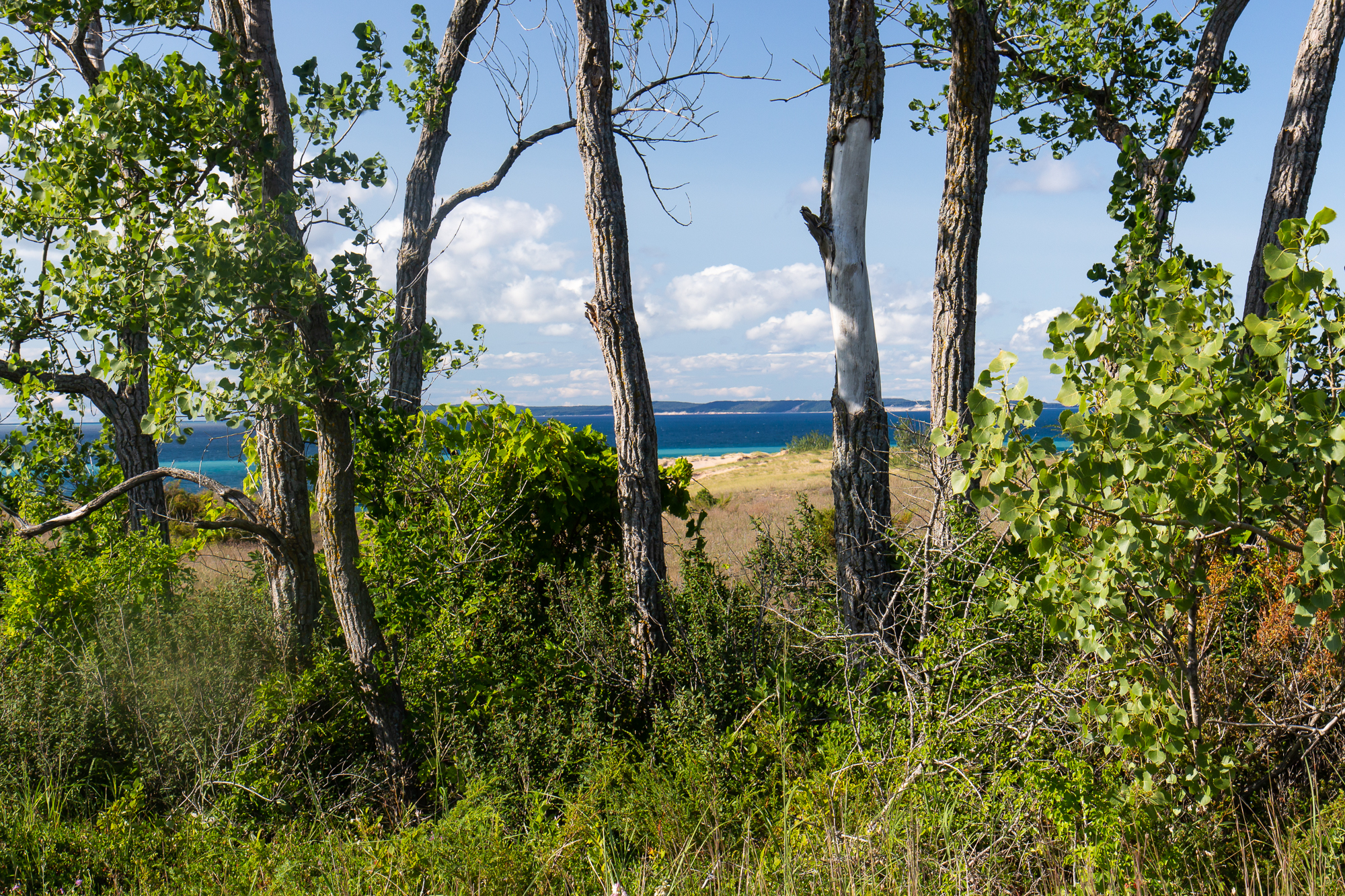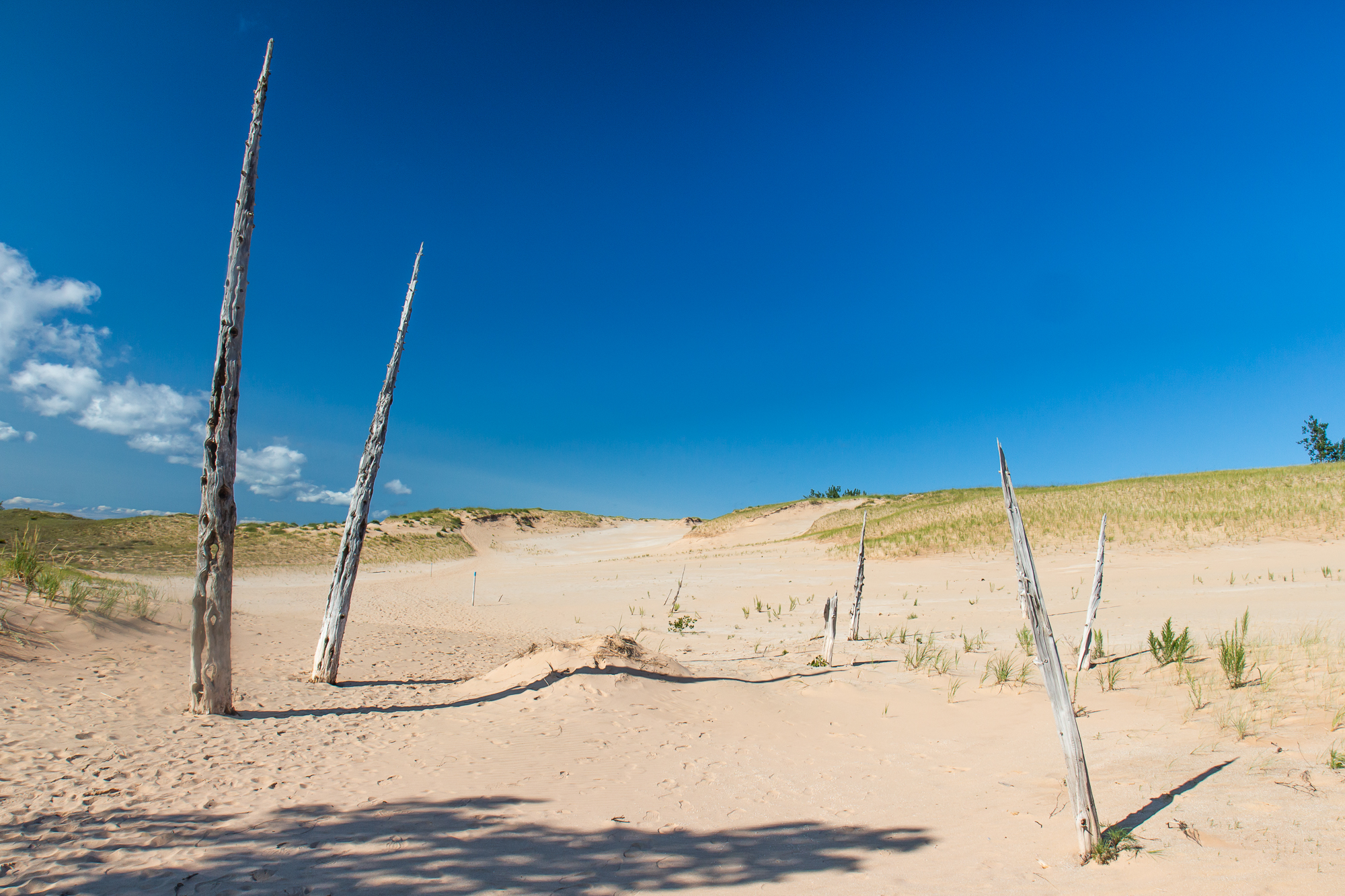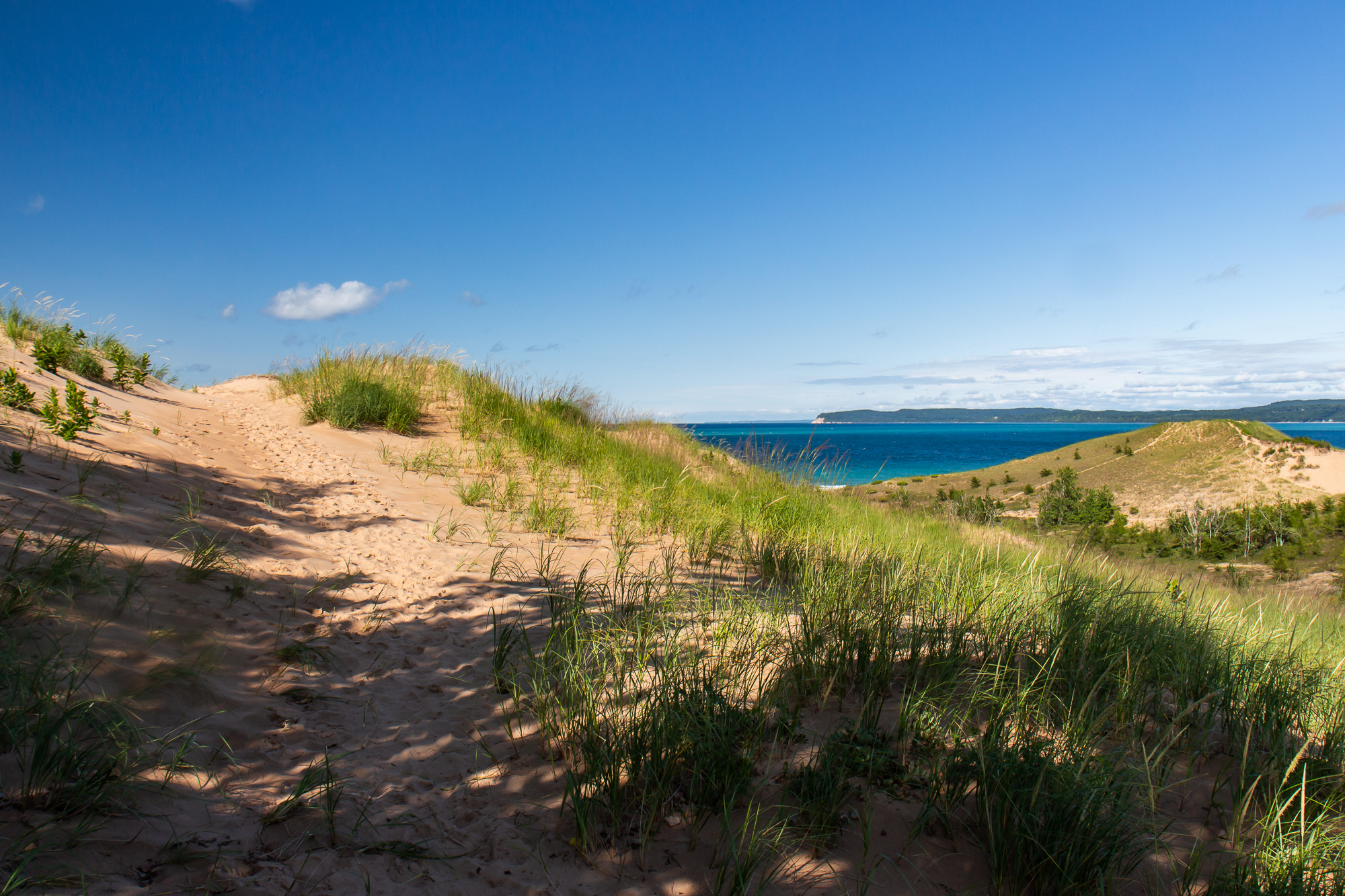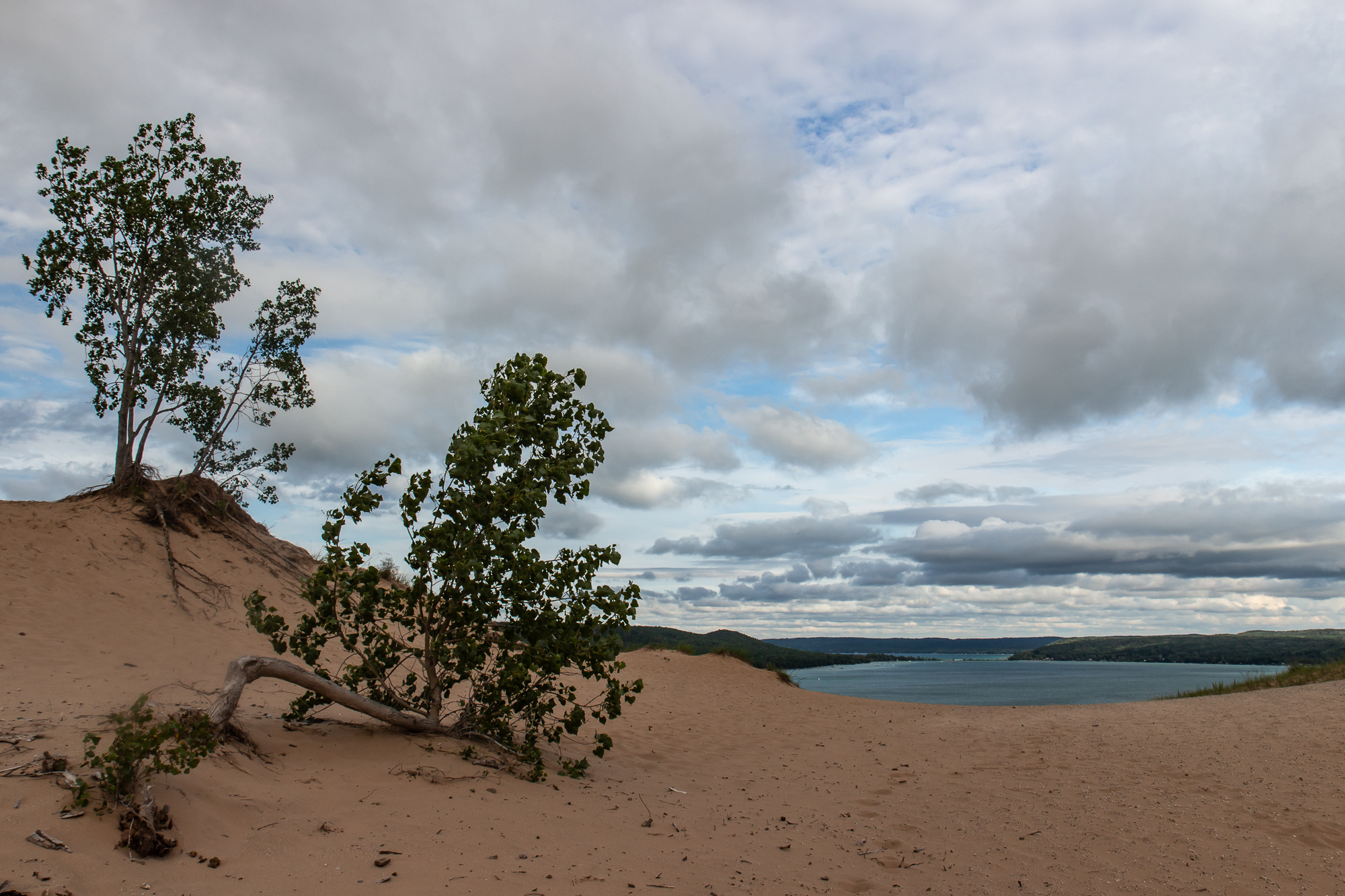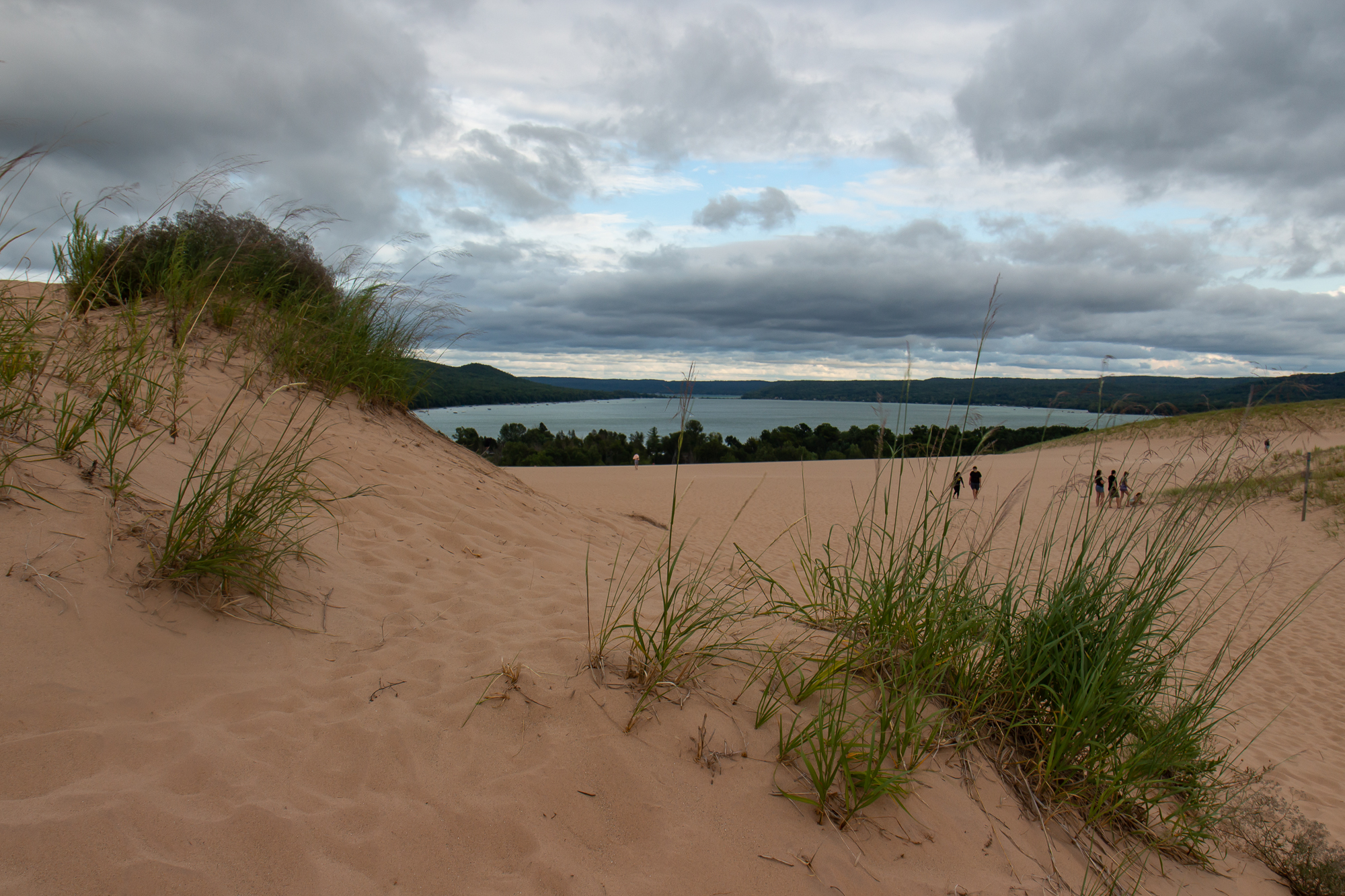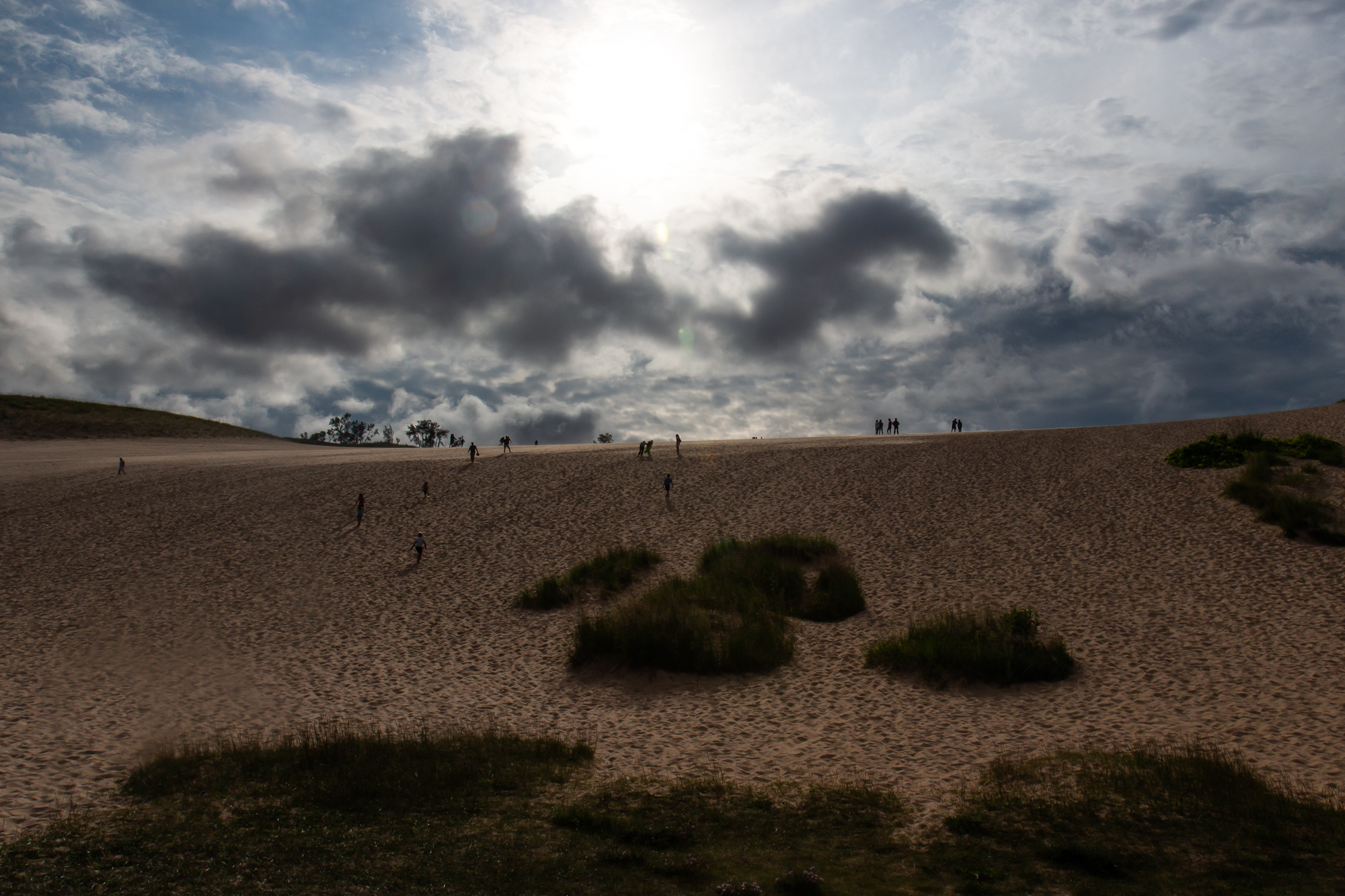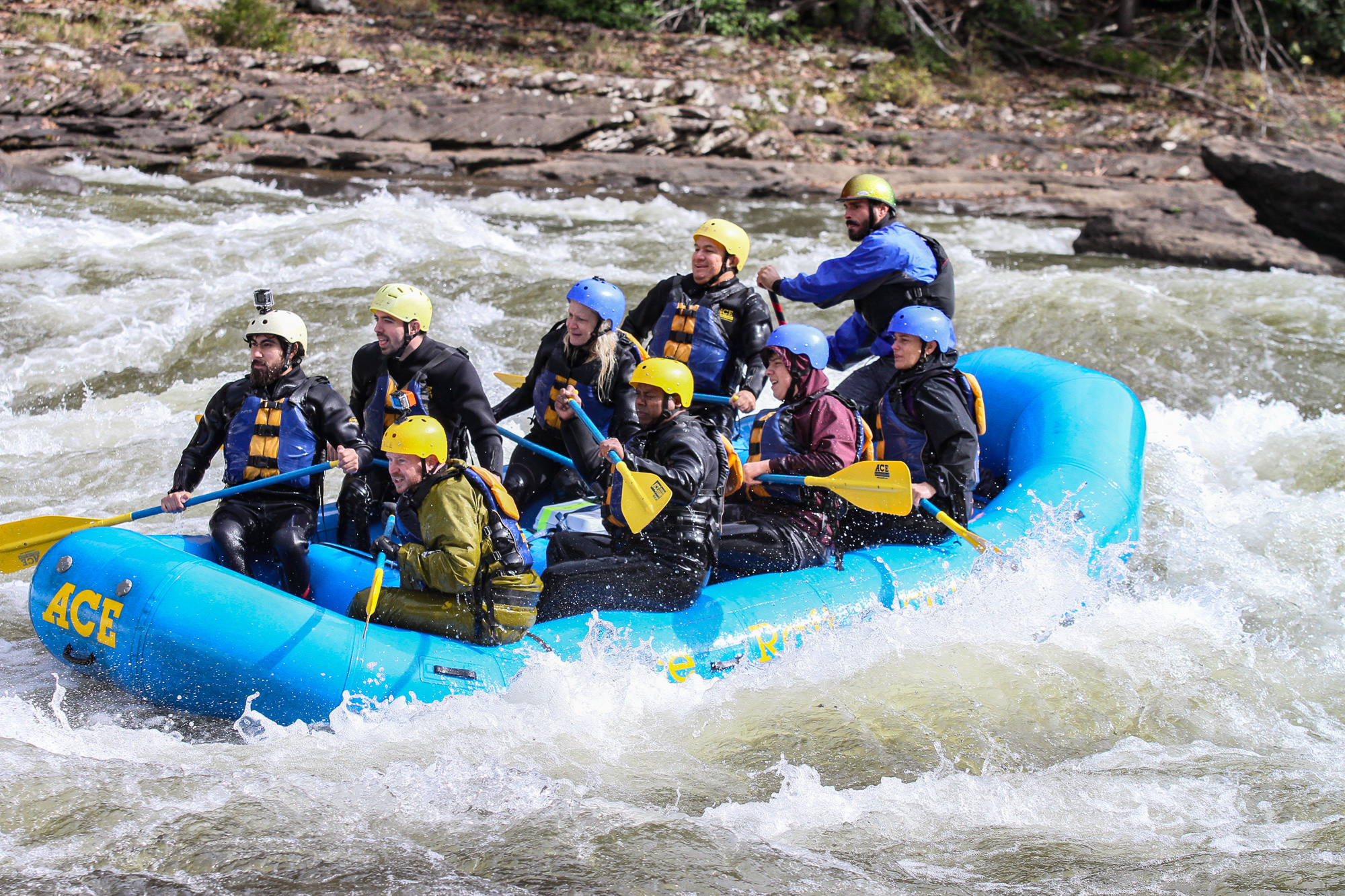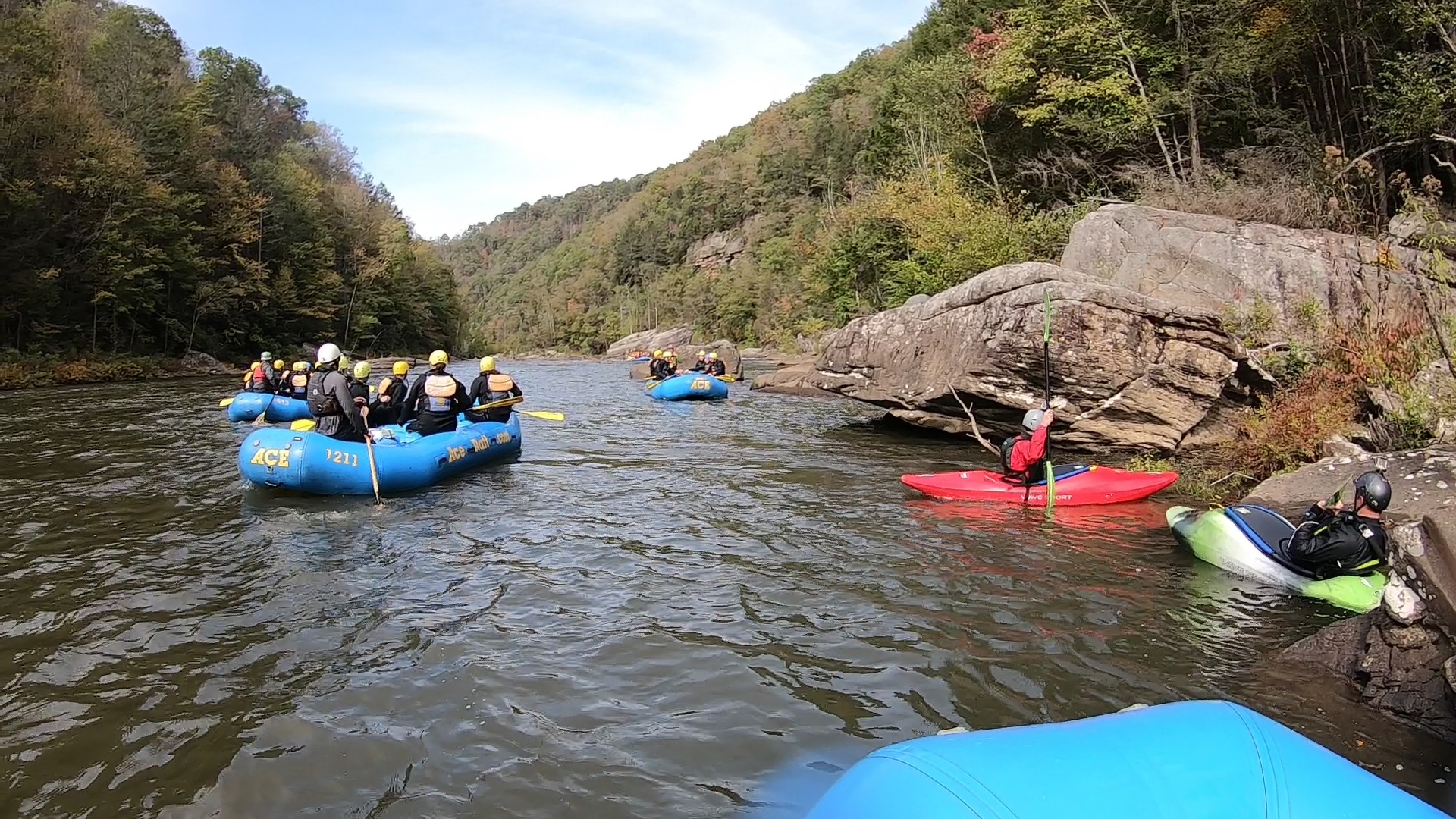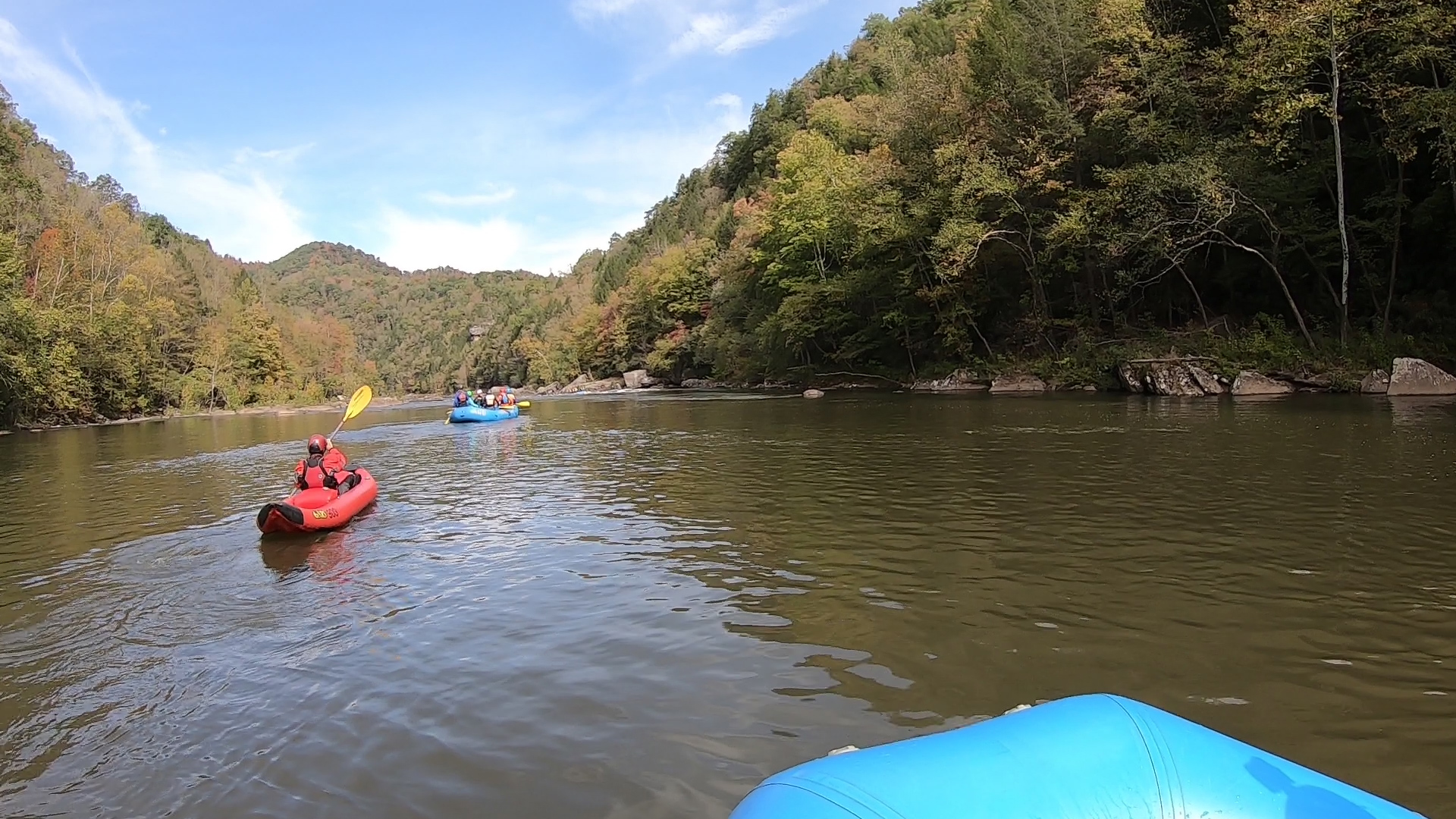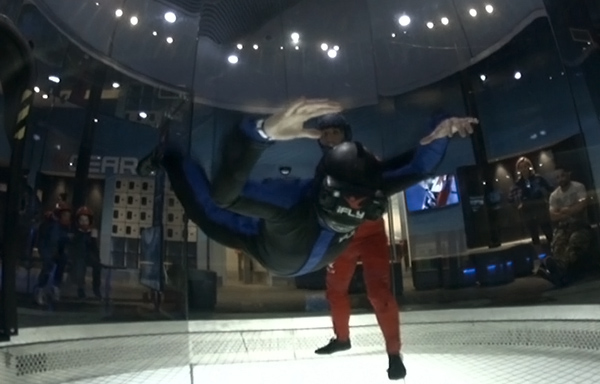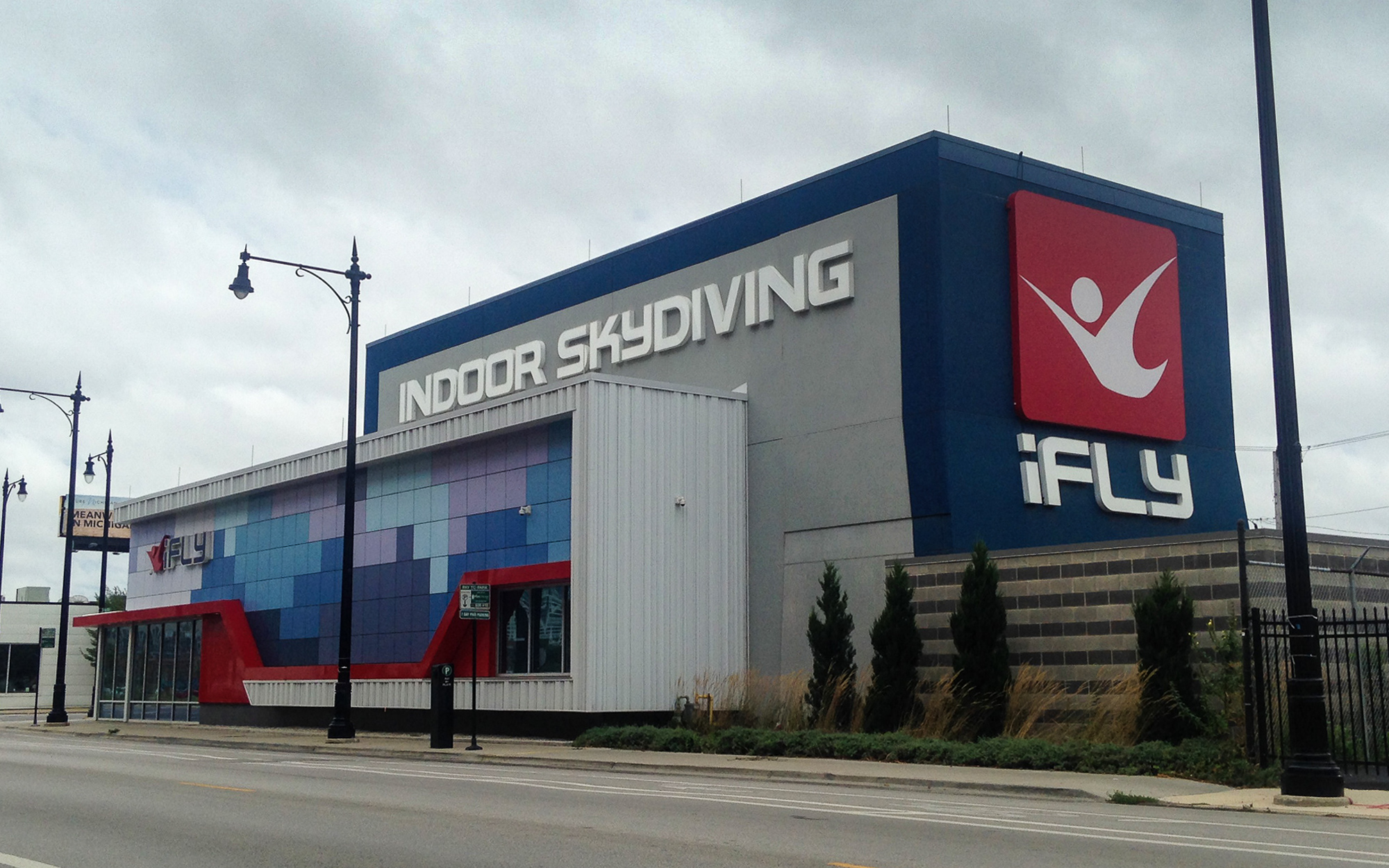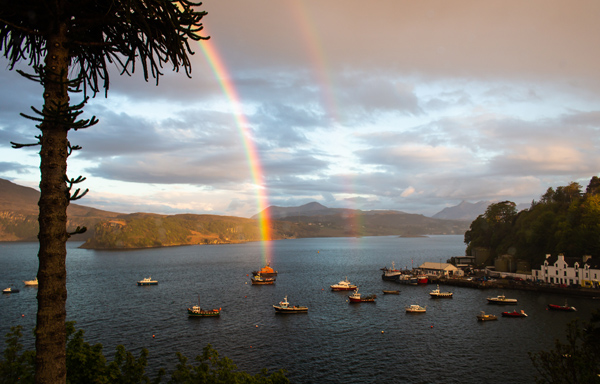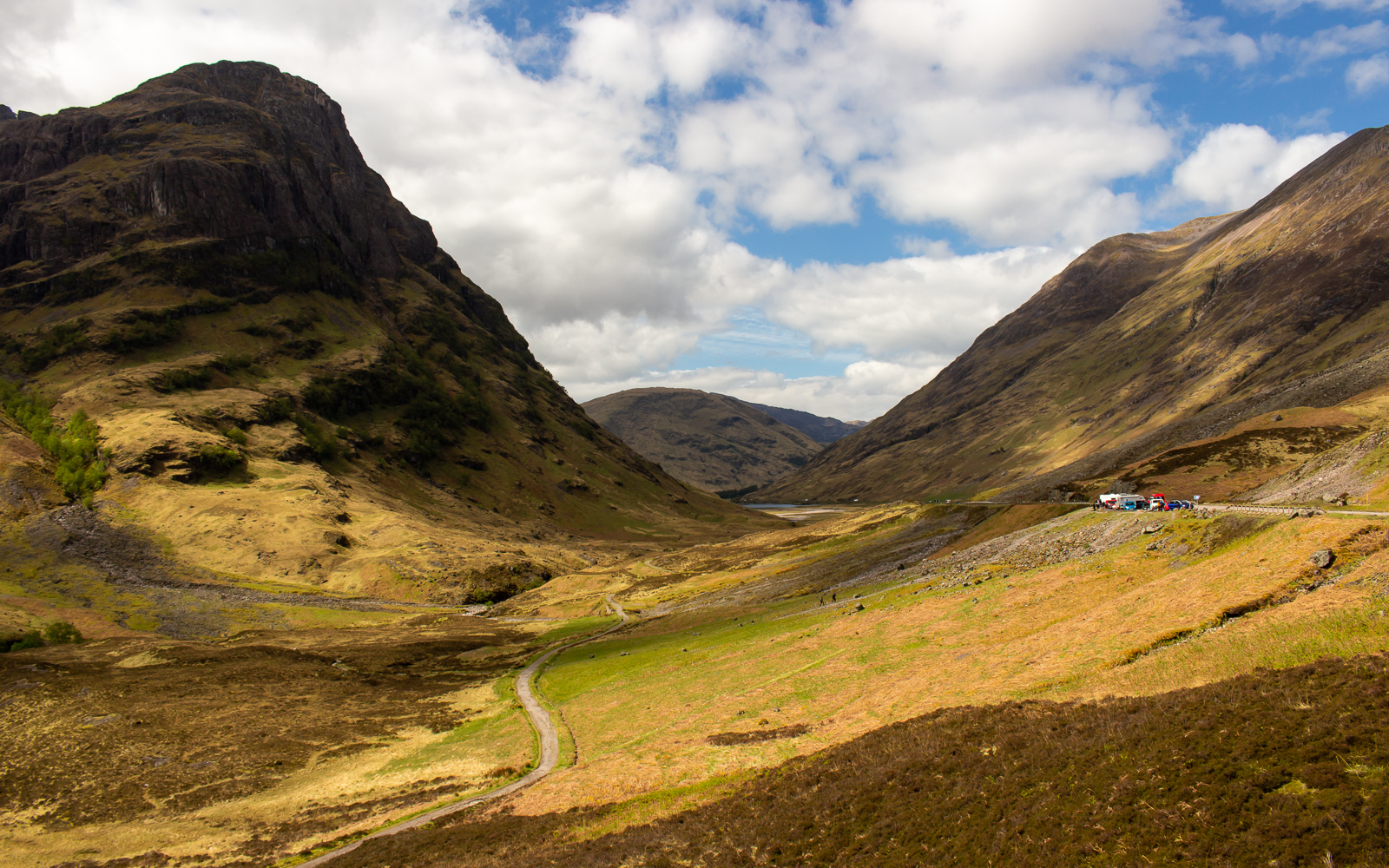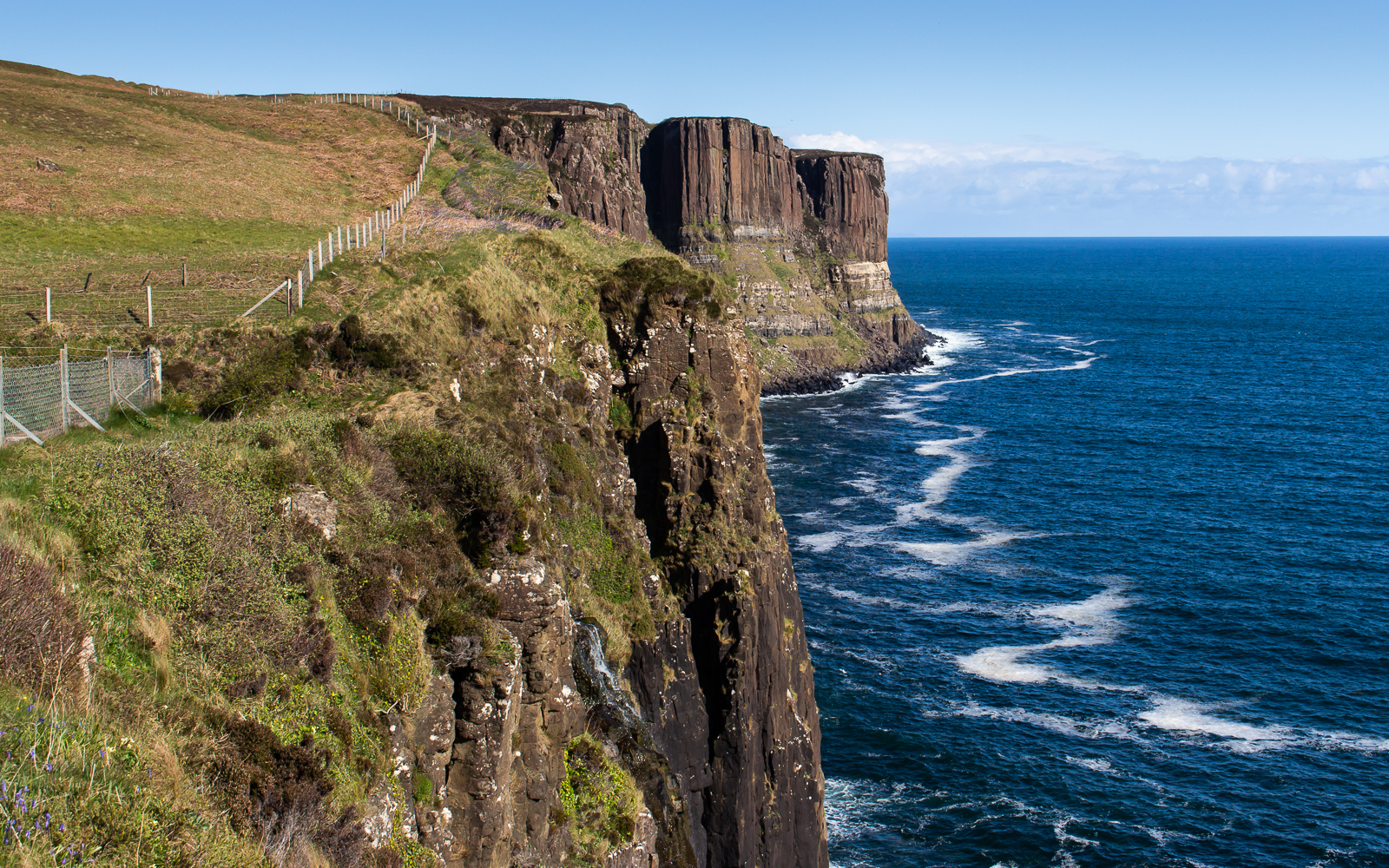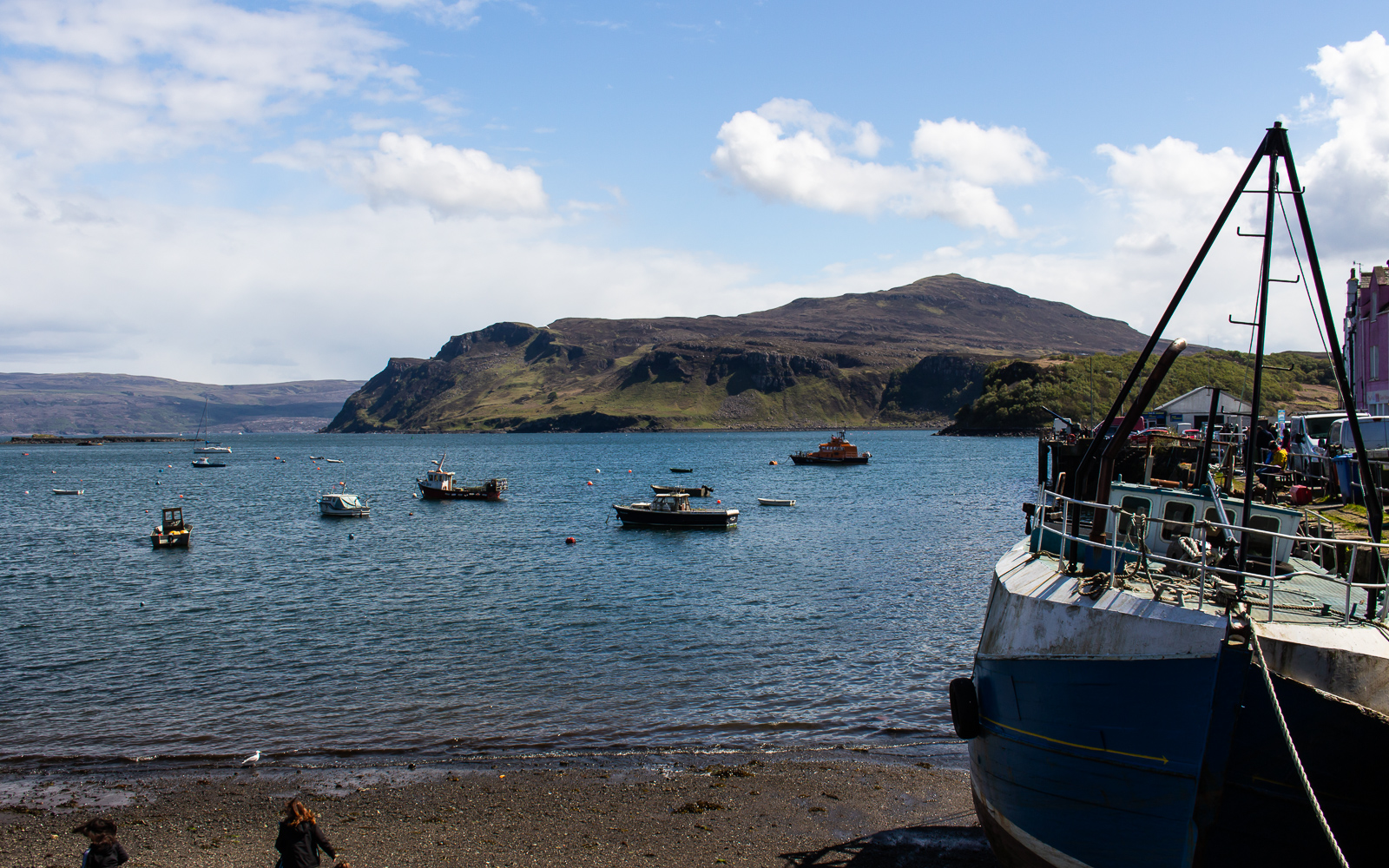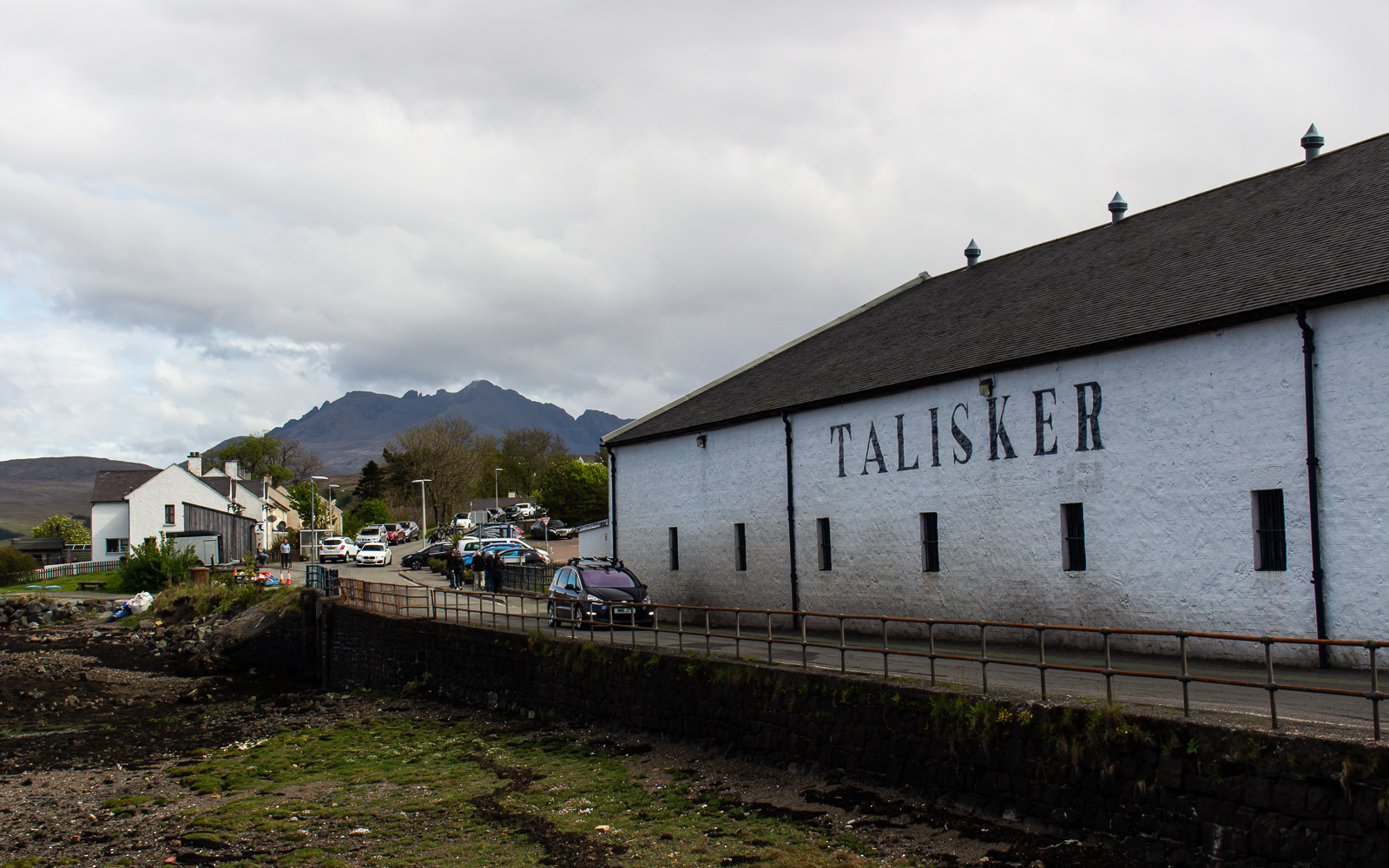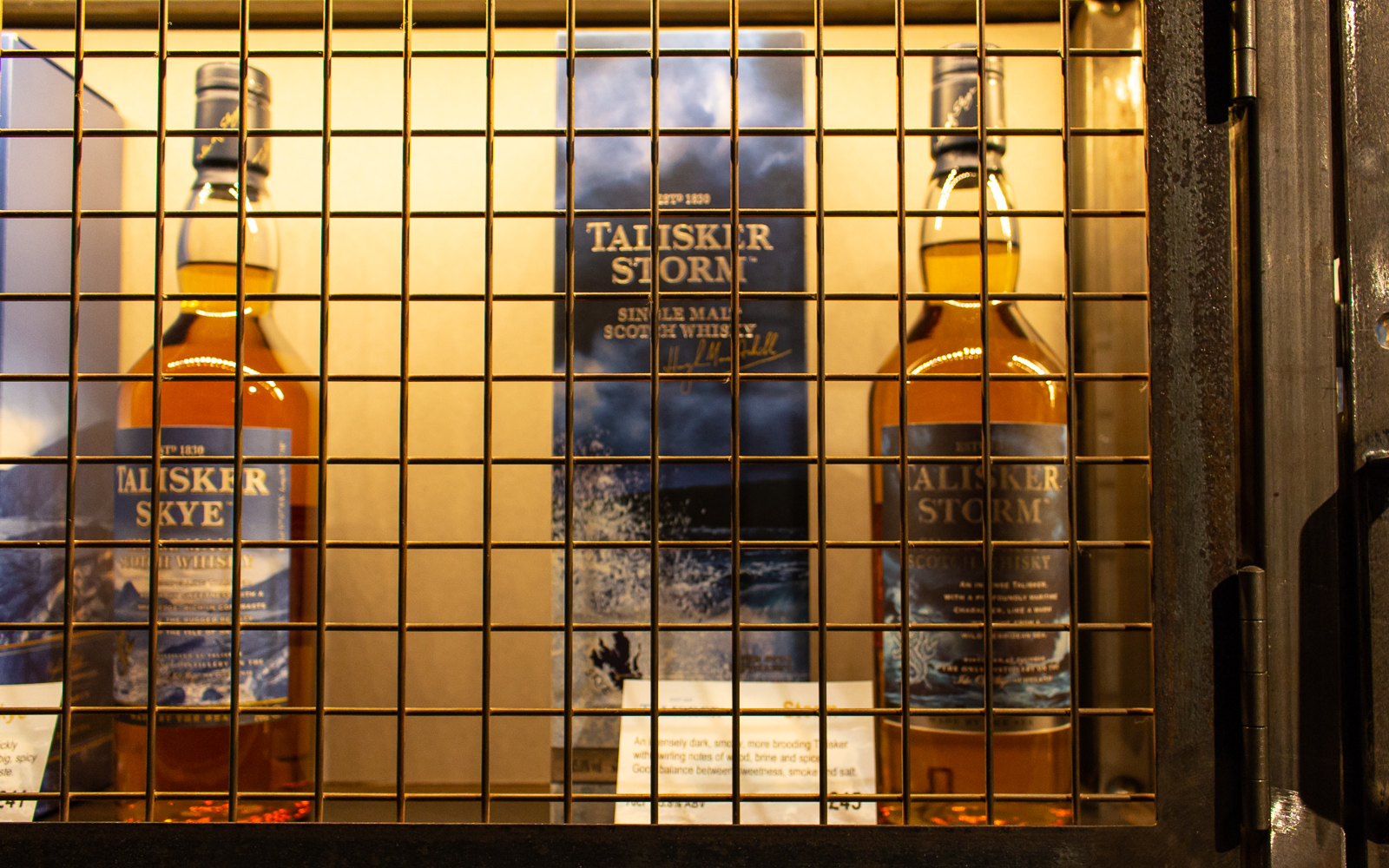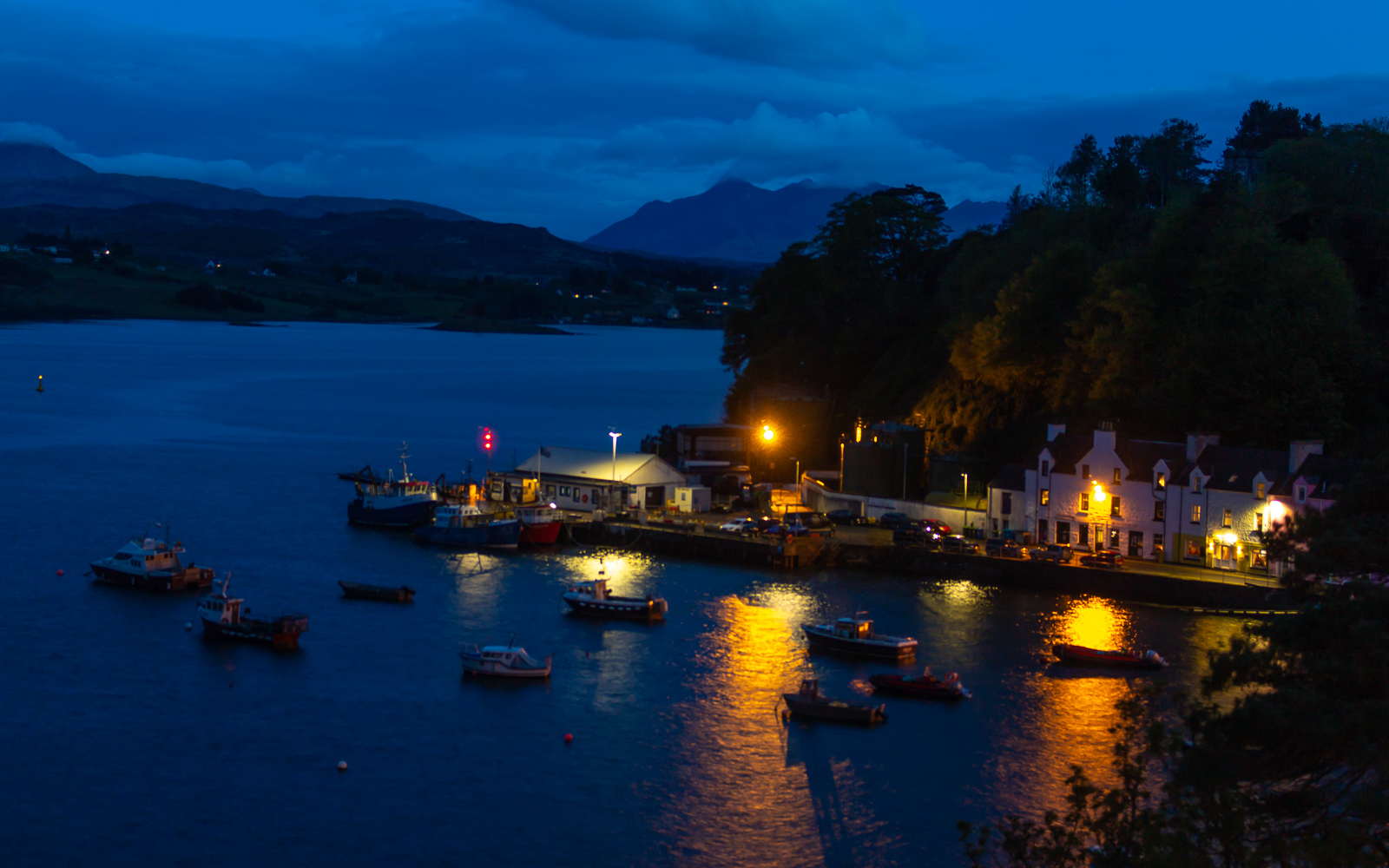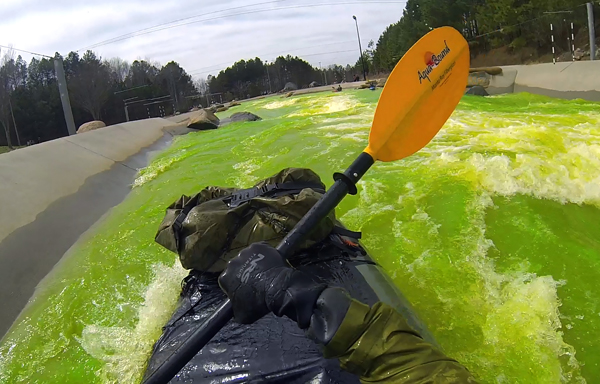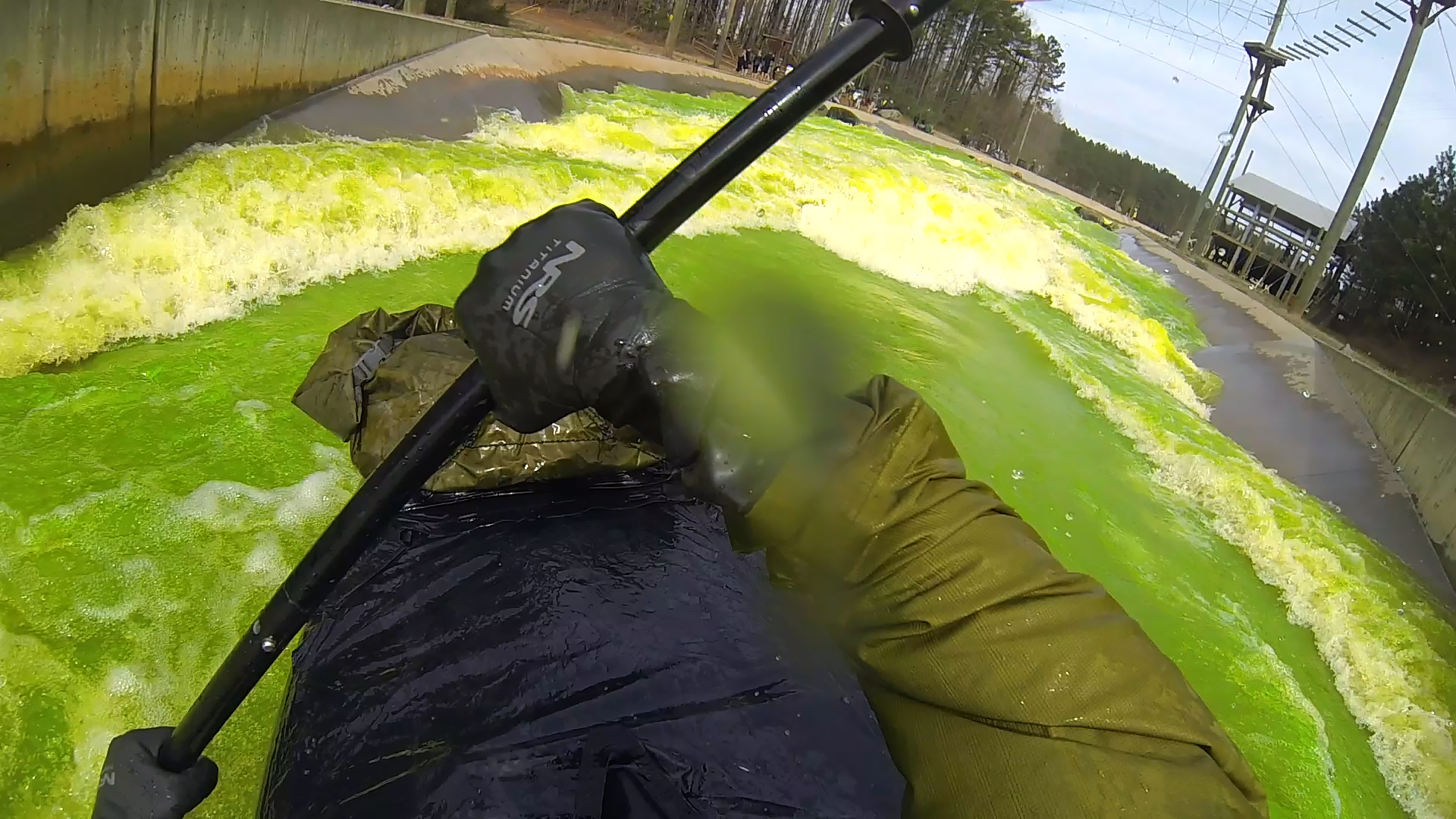The Camino de Santiago Part 5: Cape Finisterre
The Camino de Santiago Part 5: Cape Finisterre
…continued from Part 4: The Way to Santiago
The towers of the Santiago Cathedral are shrouded in morning fog. Leaving west from the plaza, I follow the Camino Fisterra, ocean bound, through the western edge of town past old oak groves and city trails. Santiago is quiet in the early morning, as is this trail compared to the big crowds I saw from the Sarria stage.
I didn’t give much thought to the elevation profile, or I would have expected the steep hike up the ridgeside of Mar de Ovellas at midday, which despite its difficulty has a spectacular view of the valley behind. Descending the other side, I cross the medieval Ponte Maceria, a picturesque 12th century bridge over the charging waters of the Tambre. Negreira, the largest town before the coast, is just a few miles further. I check in there for the night.
The path continues into a flat valley for half the next day, passing cornfields and cattle farms. Galicia is rich with agriculture, which is evident whenever I see a tractor go by or livestock wander through the villages. I like it in every way but one: All of the farms smell like cow shit. But I still enjoy the overcast day as the Camino leads me along the old farm roads. That night in Olveiroa, I reconnect with Choi the Korean Chef, the only other person from the Camino Frances who I have seen out here. It’s the first meal I’ve had with her since she made dinner for me and the others back in Leon. We have one last pilgrim dinner together with Diane from Australia.
From here, the trail winds into the mountains for half the day. I leave right before sunrise and hike along the ridge next to the charging Rio Xallas and its cascading waters far below. The morning sun lights up the mountain fog behind me in tones of orange before lifting and breaking up above the hilltops. I continue over hills and open fields as I have done now for too many days to count. Finally clearing one last steep ridge, the scenery changes.
Here, pilgrims have journeyed for hundreds of miles far from their homes to reach this place, where for the first time in their lives they see the vast blue horizon line of the Atlantic and the roar of the ocean. Steep ridges descend down to the water along a ragged coast, including those of the mythical edge of the world, Cape Finisterre, which is still a three hour hike away. I hike towards it, passing by coastal towns until I reach Fisterra, leave my pack at the aubergue there, and continue on.
Here at the south end of the cape lies the lighthouse, where the westbound pilgrim can go no further. Like a beacon, it stands high above the eastern harbor and the open ocean to the south and west on what was once thought to be the end of the western lands. To kill time, I hike up the ridge. From the summit I can see the lighthouse, Fisterra, and the neighboring towns, and I wonder how many pilgrims from ancient times continued on from Santiago to reach these shores at least once in their lifetimes – to watch the sky in the west change from blue to gold as the sun descends above the water.
Early in my trip, I spent a night in a village albergue just outside of Burgos where the abuela who runs the place told me something I would never forget just as I was about to leave. She said that as I walk the path of the Camino, that the Camino will show my own path to me. Which at the time I didn’t quite understand, let alone believe. I never doubted her sincerity, but how does something inanimate like a hiking trail show me anything that profound? And how do I find my metaphorical path? What does that even mean? And even though I doubted her at the time, her words stayed with me ever since.
Now I finally understand that she was speaking from her own life. That she too had hiked on these ancient roads on a wonderful journey of her own, maybe even more than once. And that the Camino itself revealed to her the next step to take in an incredible life adventure. And she believed that this powerful place could do the same for me – so much so, I think, that she wanted to see the same Camino in the eyes of each pilgrim who wandered through her hostel in that tiny village.
And I can’t deny how right she was as I watch the sun descend like a giant ball of fire over the horizon line of the sea. I think that there is something about this that resonates with me more than I will ever know how to say in written word, photos, videos, or anything else. I didn’t believe it, nor did I look for it, but that didn’t matter.
The Camino finds you. It calls you. And if you answer, it will show you your path.
Clouds light up above the red sun as it slowly falls behind the edge of the world, still casting a soft glow on the cliffsides while waves crash on the rocks below.
At last, as the curtain of nightfall covers the ocean, I get up and make my way on the trail back to the town in the fading daylight, already thinking about my next adventure.
Thanks for reading! This story begins in The Pyrenees!
The Camino de Santiago Part 4: The Way to Santiago
The Camino de Santiago Part 4: The Way to Santiago
…continued from Part 3: Crossing the Meseta
I have been hiking all day on a winding mountain road past little towns, highland farms, and wandering cattle. The terrain – and the weather for that matter – is a welcome change from the continuously flat Meseta and its April showers that consumed the last week of my life. I’m a few miles out from the Cruz De Ferro, an iron cross standing at the top of the pass just after the hillside village of Foncebadón. I check into an aubergue after a hard day uphill.
Many pilgrims regard the Cruz De Ferro as an important place to address the burdens in their lives, symbolized by a stone that each person brings with them on their journey. They hike for hundreds of miles, carrying their stones and the emotional weight of their hardships that it represents to this summit, cast their burdens at the foot of the iron cross, and continue on, hopefully in a better state of mind and heart. I too had my stone that I carried with me up this mountain. In my case, my burden was guilt.
There was a family dog who I neglected in my teenage years when he needed me. We didn’t know how to handle such a wild dog, so we left him chained up in the yard most of the time and I became busy with other matters. Eventually my family brought him in the house when he was older and calmer, but it was long after I had left. Only later in life did I realize the weight of my mistake – not being part of his life – far later than I would ever have the chance to repair. Before I started my journey, I went to his burial site at the family farm and picked up a stone. I have carried it with me, and the weight of my guilt, on the Camino since the very beginning. Now, I stand at the cross at the top of the mountain, I take it out, determined to never treat another family pet, or any animal, like that ever again and I cast it onto the pile.
The descent from there into the Ponferrada valley entails about three hours of steep, rocky downhill trails before leveling off at the valley floor. It isn’t much fun, but the view is great and the morning is pleasant. Flowers appear along the forests, soon blooming across entire hillsides. I try my best to enjoy the morning without twisting my foot on the rocky trail. I reach the bottom and stay in Molinaseca at the valley’s eastern edge for a night and then continue across the valley for an entire day through Ponferrada’s city centre, going west to the postcard town of Villafranca. The path leads me through gentle rolling hills, vineyards, and hazy mountains in the distance.
I meet Becky from LA, eating dinner by herself at a terrace and just starting her Camino. She has questions about logistics, like how easy is it to find available aubergues, should she make reservations, what the heck is she doing out here, etc. I was nervous on my first day too. Next morning, she already passes me at a faster pace. She’ll be fine.
After Villafranca and its beautiful Castillo, the trail follows a rushing creek along another big uphill ascent to O’Cebreiro, the second highest point of the Camino. Leaving the main road behind, I hike steeply up the large ridge for about three hours, soon revealing spectacular views of the valleys below. The Galician border is marked by a large sign at the summit of the pass. Becky catches up and we team up, hiking in and out of the mountaintop clouds before we reach her planned stopping point. I stay in the next town after and we keep going west the next day, hiking downhill out of the mountain fog.
Something dawns on me as I descend on the western side of the pass, going by countless villages and tattered yellow arrows: For the first time ever, Santiago is about a week away. This place that I spent years dreaming about was actually materializing – the end of all of this, by the gods, is in sight. And I don’t know how to handle it. Because up until now, I have been dealing with nothing but frustrating delays and setbacks.
For seven years, ever since I briefly dated somebody who hiked it, I was fixated on the idea of doing the Camino myself. I started learning about it, obsessively watched Youtube videos, and even bought a guidebook and outlined it at one point. My obsession snowballed into my first nervous decision to travel to Spain in 2018. Unfortunately, I realized then that I didn’t have the money to take the trip after paying for some unexpected dental work. I couldn’t meet the budget at that time, and I don’t travel in the red.
I tried again in the following spring, but canceled my trip last minute because I couldn’t find comfortable hiking shoes to work with my widening left foot. It’s possible that I could have used what I had for distance hiking, but I’ll never know. It was a situation fraught with anger and disappointment. Instead, I traveled around Europe for three weeks, visiting different countries as a contingency. To an extent the unexpected micro-adventures brought comfort and healing, but it wasn’t where I really wanted to be.
The third time I attempted the Camino was in the fall of 2019. I successfully hiked for the first third of the trek, finishing at Burgos with the intent on returning the next year to reach the end. Unfortunately, I didn’t have the foresight to anticipate an imminent global health crisis that might well complicate my plans.
The fourth attempt was derailed in 2020 by worldwide Coronavirus lockdowns.
And the fifth time? Well, that was my decision. It was the fall of 2021 and tourism was allowed again in varying degrees between America and the EU. The problem was that even though travel was allowed for vaccinated tourists, I could still be exposed to the virus – and if so, be required to quarantine for 10 days in a hotel. But where? How does it even work if I catch the virus in a remote village without any hotels? Further, I would also need a negative Covid test to return to my own country. And if it fails, I could end up in Quarantine Gulag for that as well. It led me to the conclusion that we as nations really didn’t have a grip on this problem yet. And places like Spain were allowing just enough people to keep their tourism industry from collapsing. Which I understood, but I realized I didn’t want to be dealing with so many unknowns. Is this how I’m supposed to travel now? Wondering if and when I get sick? As painful as it was to come to terms with it, I felt rushed and ultimately wrong in doing this. And so, once again, my Camino was delayed. This time by my own choosing.
And this time, I broke my own heart.
Well, that’s in the past. It’s a perfect sunny morning in the forest after Sarria. I got out of the mountains a few days ago and Santiago is closing in. Despite all of my sadness and hesitation, I’m not slowing down. Rather, I’ve been starting each day with a surge of pure energy. The weather is perfect and the hill country out here is gorgeous.
Galicia is noted for its lush forested hills, farms, and towns of ancient stone buildings, some converted for modern use. Others are left to crumble in time and the overgrowth of the forests. Going from to village to village each day, I’m reminded continuously that despite all of its modern advancements, Galicia bears the history of great kingdoms, old forests, and lovely hillside vistas that have stood throughout the ages. This place feels like a Shire by the sea.
The main cuisine out here is mariscos and pulpo caught from the coastal towns. That along with the local wines, which are always cheap, are perfect after a long hot day. I stop at the famous Pulperia Ezequiel in Melide, and then a cervezeria selling Pilgrim Beer, on my last day before reaching Santiago. Continuing past other bars and cafes, I see numerous people drinking together. They’re not in a hurry. Because tomorrow they will get to the end. And they don’t want tomorrow to come. We don’t want this dream to be over.
I keep seeing Becky, Ginger, Nick the Brit, the Canadian Ladies, and Dan the Storyteller, whenever I stop in the towns. I call him that because he started calling me Dan the Cowboy because of my hat. But every time I see him, he recalls some kind of interesting anecdote from the people he meets. He said he saw one guy on the trail with a cloth photo of a man’s face on his backpack. When he asked him what it was, the guy said it was a picture of his father. And that before this, his father had hiked the Camino eight times. This time would be his ninth.
Another time, Dan met somebody who was carrying a small pack in their front. He told Dan that it was the ashes of his mother. That she always wanted to hike the Camino, and now they were doing it together.
Back in Villafranca, several of us shared a terrace behind an aubergue with a young Spanish lady and her father. She said that he was hospitalized a few years ago with a severe case of Covid that almost took his life. After he recovered, he said to her, “I want you to come with me on the Camino de Santiago.” And there they were.
And then there is the story that I heard from my archive of YouTube videos about a young woman from South Africa whose father was murdered right in front of her. For her, the Camino was her way of working through her trauma and healing from the pain.
I’m sure there are so many other tales like this. So many kind, simple, genuine, broken people – in person or in spirit – who are out here on a journey for a myriad of reasons. We each have something calling us to walk together on this ancient Way of Saint James, ultimately bringing us each to the outskirts of Santiago de Compostela. Here, I choose to spend the night in O Pedrouzo, a half days walk from the plaza.
And so, Santiago is finally in sight.
I start early the next morning, and whatever sadness and hesitation I felt about this place is gone. I’m charging harder than ever through the outer suburbs with an incredible wave of energy like I have never felt in my life. I am unable to slow down or stop. It feels like an invisible wave of energy is literally pushing me from behind. For four straight hours. I can’t put the reasons why into words, but I want to reach the end as fast as I can. My pack is the only reason why I’m not running.
Passing the outskirts of the city centre, I see Kirstie from Scotland, who for the last few days has been limping painfully on an overused, swollen ankle. I saw her early yesterday and was worried about her, but it looks like she’s about to hobble gloriously over the finish line. Which I understand. At this point, something has to physically stop us from reaching the end of this dream. We chat for a bit, and I tell her I’ll see her at the plaza.
HOLY SHIT!!! IT’S THE TOWERS!!!! The spires of the cathedral stand out above the rooftops. It’s only blocks away.
Finally, I descend a stairway and walk into the plaza below the façade of the mighty Santiago Cathedral, unable to hold back my tears. The towers cut sharply in the brisk morning sky. This whole place is full of pilgrims celebrating: relieved, sad, joyful, and victorious people pouring into the plaza all day long. I find a few of my trail friends near the middle, like Caleb the drinking Irishman, the Israeli who reminds me of Borat, and Becky and Ginger arriving soon after, and Kirstie, limping in pain and glory. Below the overpass coming into the plaza, a guy on a bagpipe starts playing Amazing Grace, and with it, a reminder of home. I’m losing it.
Santiago was a lifetime away. But not anymore.
That night, pilgrims and locals of faith alike come together in the cathedral to attend the Pilgrim’s Mass. I don’t find out until later that the priest reads the name of each pilgrim who received their certificate at the Pilgrim’s Office in the last 24 hours, which must have included me. But I sit in awe of this immaculate, beautifully adorned sanctuary as he leads the congregation through each prayer from the high altar. I understand very little, and am certainly not familiar with any Catholic prayers and traditions, but I, a Pilgrim of the Camino, am welcome among them. The priest ends the mass with a beautiful prayer and blessing to the pilgrims.
I stay in Santiago another day, as some of my friends like Becky, Ginger, and Kirstie the Limping Scotsgirl, have already left town. But a few people like Dan the Storyteller and Nick the Brit are still around. Then there’s Vivian the Filipino, who was apparently around the whole time, but I only met her yesterday. We find Silvia from Italy at the plaza that evening and invite her to join us for mariscos and wine.
We’re about to end the evening when we pass by another group of pilgrims, already drunk and on their way to the next bar. They became a wild, close group of best friends ever since Pamplona. Before I realize it, we’re all drinking together. Cassie from Australia found them weeks ago. She tells me how she went through an extremely difficult situation in her personal life before coming out here and being swept up in her friendships with them. At the next bar, a guy on a guitar is singing cover songs. Everybody in this room has a smile. Pilgrims and locals alike are singing and dancing. Two of them are in love. I’m on my fifth drink as the guy sings La Bamba and everybody joins in.
And so, together in a tiny bar under the vibrant city lights of Santiago, we celebrate into the beautiful night. I can’t think of a better way for each of us to bring this crazy life adventure to its cathartic and inescapable end.
Only for me, this is not the end and my dream isn’t over. And so as the new day begins, I continue on the path going west out of the city.
This story concludes on the shores of Cape Finisterre.
The Camino de Santiago Part 3: Crossing the Meseta
The Camino de Santiago Part 3: Crossing the Meseta
…continued from Part 2: Pamplona to Burgos
I return to the cathedral and continue west out of the city. Following the riverwalk along a nice grove of trees, Burgos is awfully quiet. This is because it’s the end of the Semana Santa, the Spanish Holy Week and today is Easter Sunday. At 10am everybody is inside the churches attending Mass. And though I could count the number of locals on the street right now, I would find out later that the main plaza will eventually be packed wall to wall with people.
Going out of the city, the path winds uneventfully west along the highway for the rest of the day. Neither I, nor my gear, feels broken in – something that I lost by splitting this trip into sections. Having landed from a redeye flight into Madrid early this morning, my body thinks I stayed up all night as I hike into the afternoon, drowsy and exhausted. I expect my hiking schedule will force me out of my jetlag sooner than later, but right now I would rather lay on the grass than cross another bridge or pass another marker. I check in at the little town of Rabé de las Calzadas, where the only lady in the building stamps my Pilgrim’s Passport, the first of many to come.
Going west, the terrain crosses numerous hills and plateaus in the following days, with huge open vistas and often little protection from the erratic weather patterns that I should have expected in Mid-April. Clouds and scattered showers roll across the countryside as I approach the town of Castrojeriz on the fifth day. It is situated on the side of a large hill with a castillo at the top. I have time to kill that afternoon and leave my pack at the aubergue to scuffle up to the summit. The overlook across the valley is spectacular, revealing the quilted terrain of farms spanning out across the plains and rolling hills far into the distance. Wind is fierce, blasting me in the face each time I look out from the castle walls, but I don’t care.
Hiking on, the chilly wind continues over more exposed ridges under grey skies. People try to ignore it and take selfies on the windy face of each dramatic hilltop overlook. As I climb and descend these huge, grassy hillsides, I feel the sensation like I’m in the middle of a vast green ocean, with swells slowly rising almost enough to break but never quite getting there. Eventually these hills will level into the flat plain of the central Meseta, where I plan to hike for about a week.
Others are out here too. Though we almost never hike at the same speed, I start to recognize more people whenever I stop at a café or hostel. So far, I have met Karen the funny Belgian, and two Germans, one of whom looks like an older Johnny Knoxville. We sit together in the evenings, exhausted, eating pilgrim dinners with some hearty combination of meat, potatoes, wine, and pastries. Karen especially makes me laugh, often being the kind of person who makes others laugh more at their own jokes.
For the most part, the weather is okay during my first week. Well, nothing great in life comes easy. And for every great high point in life that I achieve, there must be a time when my circumstances amount to an absolute, unmitigated pile of shit. Out here, it manifests in the form of what appears on the radar to be the remnants of a huge tropical depression poised to cover the entire Iberian Peninsula. It’s going to start tomorrow and continue for an undetermined number of days.
With no practical choice but to continue on, I leave the little town of Carrión de los Condes in the morning in my rain gear. The first few hours are bearable as clouds and scattered showers roll across the path, and are easily ignored. Continuing into the Meseta’s flat open farm country, hills and mountains farther off are obstructed by the fog and rainstorms. One in particular is closing in from the south like the arm of a giant beast. This dark wall of rain looks like it will get here in about 20 minutes. It hits us sooner.
With nothing protecting us as we hike on a straight road through the open countryside, the rainstorm pummels us with lateral gusts of wind and hard, cold rain pelting us in the face. Hours go by as we each push ourselves through the monsoon, rushing water, and puddles on the dirt road. It reminds me of those nature documentaries where they show those lines of penguins waddling through an Antarctic blizzard. I look down and see shards of sleet on my jacket.
I hate to stop, but I have to go around a bush to pee. I struggle, shivering, to get my fleece gloves off of my numb fingers, and for a second I wonder if my own dick is frozen.
This goes on for ten miles. With no respite. Finally, I descend a hill and see a café at the edge of a small town. It’s crowded with pilgrims trying to get out of the rain. Everyone has a blank look of shock on their faces, like they’re trying to process what the fuck just happened. I find Karen and the Germans and try to warm up with a café con leche.
After two more hours of the same, I finally get to my aubergue. Both my Pilgrim’s Passport and my real one are soaking wet – turns out my rain cover wasn’t enough out there. So I check in, wondering if it’s still valid for border crossings – a question to eventually bring to the fucking embassy in the coming weeks.
That was my day, how was yours?
I leave the next day as the harsh winds continue from the southwest, though the rain seems to have let up slightly. It picks up again around mid-morning as I pass through Sahagún, the official halfway point of the Camino. A nice old abuela gets out of her car. She sees me and yells “Buen Camino!” making me feel encouraged as I continue on with this punishment.
I forget that the Camino forks into northern and southern routes and I lose a couple hours by hiking on the wrong one. Backtracking for hours east, south, and west straight into headwinds and scattered showers, I reach the aubergue, get dinner, and crash.
And then all is quiet. The rain system that ruined the last two days (and maybe my Passport) has moved on. And so has the wind, leaving barely a breeze behind for the next morning. I go back out on the street at sunrise and continue into the country. Sierras in the north are completely covered in snow, reminding me of Colorado. They’re in full display for the whole day as I continue across the drying landscape. I’m set to reach León tomorrow and I’m making an extra five mile push reach a town aubergue just outside of the city.
I want to get to León early and rest for the day. So I leave an hour before daybreak the next morning, hiking slowly on the path under the stars. Behind me, a sharp yellow crescent moon rises above the quiet farmlands. Slowly, a red glow brightens on the eastern horizon, the stars above fade away one by one, and a new day begins.
I reach the city centre of León at mid-morning, and enjoy the rest of the day walking around the main plaza next to the cathedral. There are three of us at the aubergue – me, an older German lady, and Choi the Korean Chef. She invites the host and fixes the three of us a bibimbap dinner, with more than enough protein and rice for everybody. It’s a welcome break from all the great serrano ham and queso bocadillos I’ve been eating since I got here. As it is with this Camino, the dinners often become an exchange of cultures, cuisines, experiences, and the shared ethos of goodwill. Because while we each walk this path for ourselves, we also share a part of whatever this is with each other.
I go out to get something from the supermarket. As I’m walking by a tavern at the main plaza, Kirstie from Scotland waves at me and yells my name. She’s at a table with twenty other people and points to an empty seat. They’re all pilgrims. And they have been drinking here for five hours. What I think started as a small group turned into a party as more and more familiar faces found the table.
There is wine. There is food. There is each of us – all pilgrims celebrating together that we have gotten this far. To the backdrop of the huge cathedral just across the plaza.
“Do ye know tha Space Ghouls?” Kirstie asks me.
“Huh?”
“I said do ye know the Spice Girls?” This is her test to see if people can get past her thick Glasgow accent. I didn’t pass.
Kara the Canadian sat across the table. She ended her Camino at the halfway point a few days ago after some foot problems. The rainstorm was her breaking point. She intends to come back. There was Caleb the loud Irishman, Nick the Brit, the Israeli who reminds me of Borat, and so many others, carrying on into the evening. I decide after a few hours that this is great but I should get going. I have a big day tomorrow and I don’t want to ruin it with too much wine.
Speaking of wine, I had ordered about five or six glasses over the evening and then asked the server to bring me my check. For the quality and quantity, I would easily be paying at least $80 at any wine bar in Chicago. He brings the ticket back and I look at it. 6 Euros.
It’s a full day hike from León to Hospital de Órbigo. The clouds are back, threatening to ruin my day again with more rain showers. By mile 15, my feet are beyond sore and hurting with each step – not enough to warrant anything serious like an evacuation, but enough to get into my head and distract me from this lovely fucking countryside. To make it worse, the bottom of my left foot gets spasms if I hike on it for too long when I’m out of shape, causing my toes to clench together. This has already happened a couple of times out here when I hiked farther than my body wanted me to. Well, sometimes my body needs to listen to me. So I keep going.
After what was an hour of pain and felt like longer, I reach the iconic Puente de Órbigo, a long bridge of many arches crossing a river into the town. I’m exhausted, but not so much that I don’t appreciate such an impressive medieval landmark. Even if the cobblestones are hard on my miserable feet. I check into an albergue in town just as soon as another downpour starts.
It’s day 24. And a perfect bluebird morning. I start out at sunrise and make my way past the little town of Villares and the edge of the plains. As I hike into the hills, I look back one last time at the vast plains of the Meseta, green and hazy in the sunlight of the morning.
I follow the winding road into the hills. Two hours later, I reach a cross on a hilltop looking over Astorga, a city like so many others noted by its centuries-old winding streets, vibrant plazas, and magnificent cathedrals. Beyond the city is the backdrop of the western mountains, slowly changing in colors under looming springtime clouds. Somewhere out there, the Way to Santiago continues on a hard gravel road, beaten down each day by the feet of a thousand pilgrims. It still feels like a lifetime away – and it will until the day when it’s suddenly not – but I’m energized and hopeful as I descend the hillside and make my way into town.
This story continues on The Way to Santiago.
Adventures with Kit
Adventures with Kit
Meet Kit, my Lensball.
This glass ball is something of a travel companion that I started using a couple years ago. It can be very powerful as a foreground subject, capturing and rafracting the surrounding light in many different situations. In my case, I tend to gravitate towards ambient light, often times in front of neon signs or a city skyline when I use it in pictures. The possibilities are endless so long as there is a background to set the stage for light to travel – from source to glass, from glass to sensor. From sensor to disk, and from disk to Instagram. Because this ball is all about the Instagram. It’s all for the likes.
We had some interactive art installations earlier this year, Wndr Museum and Hebru Brantley’s Nevermore Park, that both offered a wide array of photo ops for a ball such as she. On other occasions I went around Chicago and shot the Lensball in front of sculptures or downtown architecture. And other times I just found something random to use, like the hydroponic basil jungle that is my roommate’s Aerogarden.
When this is all over and we can travel safely again, I imagine Kit will be ready for the city lights of Vegas.
Pictured Rocks National Lakeshore
Pictured Rocks National Lakeshore
…continued from Sleeping Bear Dunes
The Upper Peninsula of Michigan is a beautiful area for many reasons, notably for the pristine shoreline of Pictured Rocks, a national lakeshore extending for 42 miles along the coast of Lake Superior. I spent half the day driving up there from Sleeping Bear to spend a couple of days camping and exploring the park. I had enough time that afternoon to hike the Chapel Loop, a 10 mile route outlining the most dramatic section of lakeside cliffs.
I parked at the trailhead and hiked through the forest for an hour, often passing by other hikers before reaching Chapel Beach and the sound of crashing water. Turning west, the trail went along numerous overlooks for five miles. I often stopped to photograph the dramatic cliffsides as tour boats passed below. Eventually I reached Mosquito Beach on the far end of the circuit and turned south on a two mile uphill hike to my car.
It was a great trail, but as I already learned elsewhere, a scenic shoreline can only be fully appreciated from the water. So on the next day I took an all day kayaking trip with Paddling Michigan, starting in Miners Beach just six miles west of the Mosquito trailhead. We paddled east along the steadily rising cliffside, where already the cliffs were layered in different colorful minerals. Sections of them included a layer of gravel left behind by glaciers of another age, grinding and burying moraine into the ancient bedrock.
The water was a translucent jade color illuminated in a bright sun as it slowly shifted about in the calm morning. We passed over a shipwreck, which I couldn’t see very well from the boat. But I did get some video footage of the wooden planks of the ship under the flickering sunbeams. There were other wrecks in the area as well, due to Lake Superior’s potentially treacherous weather patterns. I wasn’t at all surprised to find out that this area has its share of dive sites.
We stopped for lunch on the shore for an hour and then continued on past Mosquito Beach. Here, the cliff points were the most dramatic, rising up to 200 feet above the water. We paddled underneath arches, into cliffside mini-caves, and one small tunnel that waves had carved into the rock wall. I understood why more daring people have taken bigger expeditions into places like Alaska’s Inside Passage, where they can explore its coves, islands, and beaches day in and out. The sport of sea kayaking offers an epic, yet peaceful opportunity to any adventurer looking to find their coastal frontier.
Passing Grand Portal point, we made a straight mile to Chapel Beach, where several people made a 60 foot leap off of a nearby jump rock. The rest of us shored our kayaks as they were already getting loaded onto a shuttle boat. Then we made a three mile hike on the Chapel Trail back to the parking lot.
Great as it was, I barely saw a quarter of the Pictured Rocks shoreline. I have no idea when, but a 42 mile backpacking hike from end to end would be a great way to follow up on this tour.
Sleeping Bear Dunes
Sleeping Bear Dunes
If there was ever a Class 0, it would be the Crystal River in northern Michigan. True to its name, this flatwater river is like a sheet of glass no more than a foot above the sandy riverbed, meandering its way through a dense wood of evergreen to the lakeside vacation town of Glen Arbor. Every summer weekend, an outfitter in the town shuttles people to a boat launch a few miles up the road. I try to avoid spending money just to paddle, and hiked up there on my own.
I set up my raft and got in, and immediately enjoyed the calm and steady current as it made its way through the woods. Many places were a foot deep or less, but usually just deep enough not to scrape my raft on the bottom as I dug my paddle into the sand and grit. I passed several families and on more than one occasion saw kids paddling by themselves out ahead. The truth is that you would have to actually try to screw up on this river.
After about two hours I got to the takeout, packed up, and got a fish and chips dinner at a restaurant close by – the benefits of paddling next to a tourist town.
My plan was to packraft for three days on this vacation – first on the Crystal River, then for two days on the Boardman, a bigger Class II river south of Traverse City. For the past 16 years, the Boardman has undergone a major dam removal project, so far removing three of its four decommissioned dams from the river. I had the idea to spend two days paddling through it with my packraft to see the grassy fields left behind from what were once artificial lakes, and to document the recovering ecosystems. So on the second day, I parked at a river takeout south of the city and hiked the River Road upstream.
Eventually the road crossed over the river and I got a good look at what I was actually dealing with. It rained a lot in the last night, and that river was high. And fast. That along with the fact that camping in the rain already had me in a bad mood, gave me an uneasy feeling about going any further. If I were to go around a bend at that speed and run into a strainer, I don’t know if I would be ready for it. Further on were Class II rapids that I knew nothing about, and also likely higher and faster from the rainstorm. I didn’t want to run it today and end up in the paper tomorrow. So I turned back.
Determined to make something of the day, I got lunch in Glen Arbor and spent the afternoon hiking the trail systems around the Sleeping Bear Dunes. It is a scenic series of sand dunes that span three miles from west to east on the shoreline, with sand bluffs overlooking Lake Michigan and the Manitou Islands across the water. In non-Covid times, you could take a ferry out to them for more secluded camping and backpacking.
I hiked the dune trails as they went along the ridges and scrawling vegetation, occasionally passing dried out husks that were once trees. As the sun fell in the west I parked my car at the main lot and made the Dune Hike straight up and over the ridge system, climbing five or six steep hills before reaching the beach on the far end. I had done this trail before, but it still felt like forever as I cleared each hill only to see another one.
I sat by the water and waited for the late day sun to come out of the clouds that loomed just above the horizon, longing for another sundown of another where and when – one that won’t happen until I’m allowed to return to Europe. It has been a strange and unprecedented year where I had just about everything planned out of where I would go, and what I would do when I got there – only to have life get in the way and change all if it. This week long trip in Michigan might well be the only vacation of note that I take. I, like the rest of America – whether they want to accept it or not – have to wait until we’re not sick anymore. But I’m nothing if not thankful as I allow these times to pass, as surely they shall. There are other worlds than these.
All at once, the sun fell behind the water. I packed up my lensball and camera and made a good pace back in the fading daylight. It was fully dark by the time I reached my car.
This roadtrip continues in the Upper Peninsula.
Rafting the Lower Gauley
Rafting the Lower Gauley
I traveled through West Virginia recently on a train and made the most of the fact that Ace Raft is a three mile hike from the Thurmond Amtrak. Timing had it that I could stop by for the last weekend of Gauley Season and all of the river carnage that it brings. It was October in Appalachia with morning temperatures just low enough to bite. Leaves turn into fire and gold, and the river charges its way down the canyon, thanks to the dam release up in Summersville.
We arrived on a bus at the boat launch just above the Fuzzy Box of Kittens rapid and Woods Ferry, which separate the Upper and Lower sections of the Gauley. It’s a wild Class III-V river throughout, although my paddle down the Lower Gauley today would hopefully be more forgiving. The Upper section is famous for its huge powerhouse rapids that go back to back for 13 miles. And while the Lower Gauley has its share of that too, it is altogether calmer, more scenic, and spaced out. The trip would mostly amount to floating down easy flatwater and enjoying the fall colors and brisk mountain air.
Mostly.
We were just getting started on the second rapid, Woods Ferry, when we ran into a bit of a scuffle. Halfway through, the raft got stuck on a ledge and one guy almost fell out. By a miracle, he landed on a rock and it kept him up just long enough for his buddies to pull him back. The guide, Bobby, yelled at us to paddle, trying to steer clear of the Juicer, a huge slanted boulder at the bottom that nearly always flips a raft. We bumped right into it, and amazingly the boat stayed up and went back into the current.
Our problem was that we weren’t paddling together as a group. You have to go together at full momentum to get the power you need to bust through this kind of water. Bobby had us practice our paddling moves in flat water, but I was still nervous and unsure if we could get through this. It was game time again soon enough. Bobby sent us charging through a huge wave train in Back Ender, then an even bigger series of hits in Koontz Flume, the first Class V of the day. We minded a house sized undercut boulder on the right and slammed through four big wave holes.
My camera died right before Canyon Doors, a calmer, scenic cliffside section of the river. We stopped to eat, I replaced the camera battery, turned the camera on, and we kept going. The river picked up its pace again as we had to navigate the clusterfuck of boulders in Upper Mash. The payoff was that it positioned us to run the main channel on Lower Mash with enough force to slam through the huge wave-hole at the bottom. For what it’s worth, I think we were finally paddling together as a team. As long as we listened to the guide, he could get us through all of it. My confidence in myself and the group was at an all time high.
The only big rapid left was Pure Screaming Hell, a Class V monstrosity known for its disastrously big Hell Hole. Here, you paddle for your life and do everything the guide tells you. Unfortunately, my camera died before we got there, but this video does a good job describing it:
From what I can remember, Bobby steered us on the tongue just left of it for an easier line. I only had a second going by to stare into the face of oblivion. We got through it in good standing, but it did give some boaters after us a thrashing – luckily nowhere near the undercut boulders.
This is a scary river. If you look up documentation about it, pretty much every section with a high rating is loaded with bad rocks. Some areas like Tumblehome are completely sieved out. None of it can be done without a guide or proper whitewater training. But despite the threats, I just can’t pass up the chance to see the beautiful bigwater Beast of the East, the Gauley on dam season. Even if it means I have to spend one boring final hour floating down flatwater to the takeout. It was late afternoon by then, and all I could think about was beer and pizza.
I went back to the lodge restaurant for both, slept in a cabin tent, and hiked back to the Thurmond station the next day.
VR Skydiving with iFly Chicago
VR Skydiving with iFly Chicago
The travel enthusiast in me is always Google searching the digital landscape for new ideas. Whenever I’m not out doing something, I’m thinking about it. And I’ve been getting curious about the idea of Travel VR, where the wild places of the world are brought to you in an immersive digital format. iFly Indoor Skydiving has flight simulation centers all across the country. Using a powerful wind tunnel, they harness the feeling of a freefall with VR gear, simulating skydives over Hawaii, Dubai, California, and the Swiss Alps. It can be the next practical option if, like me, you won’t be making it to Dubai anytime soon.
I went to the Lincoln Park, Chicago location recently after work. After a short orientation video, I suited up for my first “jump”. The first two flights were without VR – the intent being to get first time jumpers comfortable floating on an upward blast of wind. The instructor stood in the middle to help stabilize and keep me from flailing and spinning around in the tunnel. The main thing they told me to do is relax – something I never do the first time with anything. I gradually got more stable with each flight, but my first visit overall was tense and challenging. For the last flight, the instructor gave me a VR headset and loaded up the Hawaii jump. I floated in the middle of the tunnel, watching a 60 second video of divers over the Hawaiian coast. It was cool, but I was still too in my head to be totally in the moment.
I came back a week later and felt better overall. I could finally relax in a fixed position. When the instructor noticed, he started showing me maneuvers, like how to turn simply by moving my hands. It’s always a fun challenge to test my physical and mental limits against natural forces – whether they be water, gravity, or in this case, wind. For the VR simulation, I tried the wingsuit jump in the Swiss Alps. It was altogether better and more immersive than before, as I pretended to glide between the high alpine ridges, nearly skirting the treetops like a daredevil.
This was all fun and will have to do until I get the chance to dive for real over blue water. If it works out, it might happen later this year.
The Scottish Highlands
The Scottish Highlands
The highlands of western Scotland highlight a region of Britain that is full of picturesque landscapes, historic landmarks, and down to earth folks with an accent thicker than molasses. I got the chance to visit a month ago on a three week trip around Europe, including a three day shuttle out of Edinburgh with Highland Explorer Tours. I joined a shuttle full of people in the Old Town district on a rainy morning, was greeted by our guide, a kilted Scotsman by the name Steven, and we started west out of the city.
Day 1: Out of Edinburgh
Steven narrated Scotland’s history and lore as the shuttle went along the Scottish countryside, crossing the River Teith just upstream from Doune Castle. Soon, we made it to the mountains and the forested edge of Loch Lomond and The Trossachs. After going for a while there, the rain stopped and we passed the Loch Tulla Overlook. I got out and looked down at the loch from the ridgeside, appreciating the clearing weather and brisk springtime air.
When we reached the high plateau, Steven explained how the peated topsoil in this region and the west isles was used in their whiskey production. It was a smoky flavor that I spent years enjoying – mostly from the Laphroaig Distillery in the south. We reached the far end for a mountainous descent to the shoreline town of Glencoe, stopping first at Loch Atriochtan and the Three Sisters of Bidean nam Bian.
After getting lunch at the busy tourist town of Fort William, we continued north for 90 minutes along more lochs and winding mountain roads. The famous Eilean Donan Castle stood at the water’s edge, backlit by afternoon sunlight. This classic Scottish landmark has had four different versions and restorations dating as far back as the 13th century, the most recent one finished in 1932. It is one of the most photographed landmarks in the country. If you look up pictures of it, you might find more than a few of a Scotsman and bride on the bridge.
We crossed into the Isle of Skye in the late afternoon, stopping for the night in the seaside town of Portree. The tour company had arranged for us to stay at different BnBs in the town, and I checked into a modest stay on the north end. “Holy shit, a room with a view!” I thought as I looked out from my room over the harbour. Little boats floated about in front of a colorful row of houses on the far side. The Isle of Raasay and bigger mountains stood farther off, silhouetted along the edge of the inlet. The day ended in nightfall and clear skies over quiet water.
Day 2: Isle of Skye
We met in the town centre and drove north. Steven immediately parked in a lot next to the road to view the Storr, a rocky formation of spires near the coast. The needle shaped Old Man of Storr looked like it could impale the foot of a giant. My only complaint about this tour so far was that they didn’t drop me off at the trailhead for a closer look. But fair play on that if it meant we would stop at Kilt Rock twenty miles up the road.
We went around the north side of the isle and down the western shore, passing tiny Scottish villages and farmlands. At Idrigil, the shuttle turned east on a back road, crossing back over the island. Soon we reached the Quiraing, a landslip formation along the broken ridge system of the Trotternish.
When we got back to Portree at midday, I went to a seafood restaurant and ordered the same thing I wanted ever since I got here – fish and chips. The menu said that standard whiskey was 4£ and that the high-end whiskey was 5. I asked the waitress to bring me a glass. Whatever it was, it was good enough for its own place at mid-shelf. I told her I wanted another. She brought me a glass of Laphroaig. Yeah, 4 pounds. The whiskey here was cheaper than the beer.
Speaking of whiskey, Steven asked us if we wanted to stop at Talisker for a tasting. We didn’t have to think about that for long. We passed more landmarks in the south, including the Sigachan River, which legend says if you put your face in the water for ten seconds that the faeries will grant you eternal beauty. I have not followed up with the others to confirm the accuracy of this tale.
Portree is a cute town, but in the evenings its restaurants are packed with tourists. I didn’t want to wait in line for an hour, so I got deli bread and a can of beer from the town grocery instead. I was just winding down in my room when a rain shower passed over the harbour. When I looked outside, this happened. You couldn’t make this shit up:
It made me think about how Scotland’s country has a warmth to it. It’s rugged and earthy, but not in any grand or epic sort of way that I’ve seen in bigger places. It feels close and almost homelike. A broken archipelago of steep hills and lush, grassy highland ranges that reminded me a lot of Iceland – yet with a closeness that Iceland doesn’t really share. Scotland is like the warmer brother to Iceland. And Iceland is like the darker sister island.
Day 3: Loch Ness
We left Skye and went east back into the mountains. Clouds gathered around mid-morning, bringing the kind of weather that is typical in the UK. We stopped at Urquhart Castle and the shore of Loch Ness. Sheets of rain blew off the loch as I waited in line at the boat dock, one layer too light. Soon the boat arrived and I managed to dry off and warm up with a Scottish Hot Chocolate. As the ferry went north, I watched the water closely, but my admittedly untrained eye was not able to spot Ol’ Nessie (probably for the best).
Rain continued as we went past Inverness, turning southeast on the highway to Edinburgh. Most of the ride back was uneventful, but it was interesting to pass the Cairngorns National Park, where snow-dusted high mountains appeared between the rainclouds. Soon, I would reach the city and this chapter of my story would quickly end. Another in Dublin was about to begin.
I will leave you with this song from Tide Lines, who I never would have discovered if Steven wasn’t playing them on the tour. They’re like Scotland’s answer to our bluegrass and alt-country.
Green River Revival at USNWC Charlotte
Green River Revival at USNWC Charlotte
Every year on St. Patrick’s Day, the US National Whitewater Center hosts the Green River Revival, an outdoor festival centered around a huge artificial whitewater course in Charlotte. It draws thousands of people in green apparel, blankets, dogs, kids, and beer. Runners warm up for the Color Me Green 5K, kids ride across the park on the ziplines, people climb rock walls, and boaters of all skill levels paddle the green river.
I’ve only seen these rapids on Youtube, which isn’t saying much, but today I’m going to run them in full color. But first I want to get aerial footage of the river. I find the zipline tower, mount my camera on a helmet, and spend 90 minutes going back and forth on the ziplines over the park. At 1:00, they release the green powder, which bleeds its way down the channels. Crowds of people cheer, and boaters in all kinds of watercraft follow the green streaks of river dye down to the lower pond.
I walk around and scout the greenwater channels. In this park there are two: A fast Class III-IV channel to the right and a longer, slower II-III to the left. Beginners go left. Nonetheless I want to at least see what the harder one entails. It is an almost continuous rapid of big Class III waves for the first half before it passes in front of the welcome center and the restaurant. Near the end it drops into a huge, thrashing hydraulic with turbulent eddies along both sides. I see kayakers run it by skirting the eddy line on the left, hopefully missing the meat of it. In a big raft you would just punch through the apples. My little boat would surely get tossed around like a new fish.
I feel better scouting the left channel. It starts with manageable Class II waves for the first half, eventually speeding into a nearly continuous series of Class III wave-holes – and one notoriously big M-Wave in the middle. More on that in a second.
I suit up and paddle to the top, dropping over a small river-wide ledge and going straight for the first of several well-spaced play waves. I pass groups of kayakers along the eddies, who typically wait their turn to flip around in the current. The channel splits around an island, rejoins and starts picking up speed. Out ahead it constricts under a bridge, creating a fast pourover that rushes straight into a snake tongue and the big ass hydraulic that they call the M-Wave. A guide told me to run it on the left so I wouldn’t get smacked in the middle. I take his advice, clearing a small wave under the bridge and charging as hard as I can along the left side. I need the right amount of inertia and balance or I’m joining the swim team for the rest of this. I slam into the wall of foam, pulling a hard stroke right through the pile.
Holy shit, I cleared it! I’m flying down the channel, fighting to keep my boat straight. I barely have time to celebrate before I’m closing on another big swell. I clear that one with a clean lateral stroke. A hundred feet ahead is another hole that could toss me out, so I eddy out to the right, pass it, and continue down the middle. More laterals try to surprise me, but it feels like a straightforward path to the bottom. A big lateral wave at the very end sends me headfirst into the glassy, Jolly Rancher colored greenwater. I wash out and recover in the bottom pond.
I swear I have a love-hate relationship with this sport. These kinds of swiftwater rivers have created some of the most amazing, memorable trips I’ve ever had – yet I’m often equally as frustrated after capsizing and washing out. My excitement is just as real as my uncertainty, and I can never seem to get my head around it. How the power of water can create this dangerously amazing way of life. But this is what I do. #thisispackrafting
I sit at the restaurant as the day is starting to wind down. Boaters are still hitting that mean looking Class IV that I’m definitely not running today. I drink an IPA because the menu says it’s from a brewery in Charlottesville. I’m heading that way on a train later because I’ve never hiked Old Rag before and now is as good of a time as any. My life has had a lot of firsts as of late.
So yeah, greenwater rafting. Come out to USNWC Charlotte next St. Patrick’s Day to see it for yourself. I enjoyed it, though my only real serious complaint was that I didn’t see any green beer. Nonetheless it’s a fun river trip, and you can even bring leprechaun sunglasses if you’re feeling festive.
